
18 Immersive Photo Essay Examples & Tips
By Tata Rossi 13 days ago, Professional photography

A photo essay tells a story or evokes emotion through a series of photographs. The essays allow you to be creative and fully explore an idea. Such essays exist in a variety of forms – from photos only to images with brief comments or written essays accompanied by shots. Choose a photo essay example that you can easily do based on your professional level and the equipment you use.
1. Protests
- View the “Resistance” photo essay by David Moore .
A great idea for photo essays for students is to shoot the protest to show its power. You can capture people with signs and banners to demonstrate what they are standing for. Besides, you can learn how to capture moving subjects. Use the best example of photo essay and don’t forget about angles, composition, and framing.
To create a photo essay , go up to the front and photograph the leader of the protesters walking forward. After that, go back to the end of the group to take pictures of families joining the protest. As a result, you will gain experience shooting big groups of people in motion.
2. Transformation
- View the “A Self-Portrait Every Day” photo essay by Noah Kalina .
This idea is all about capturing the way a person changes. You may take photos of a pregnant woman and then capture the same model with a child. By documenting the development of the child for several years, you can tell a great story in the form of a photo essay.
However, you can also create a photo essay about the transformation of different objects. For instance, you can create a time-lapse series to capture the history of a renovated building. While you will have to take a lot of similar photos to bring this idea to life, it will allow you to achieve an impressive result.
3. Local Event
- View the “Monday Marathon” photo essay by Quinn G. Perini .
Whether you are a resident of a large city or a small town, you can find an opportunity to visit a local event, like a marathon or a festival. This is a nice chance to follow modern photography trends and bring photo essay ideas to life.
You can capture the before-and-after stages of the event. Arrive earlier and take pictures of the preparation activities, then shoot the actual event starting with the official beginning.
Keep photographing even when the event is over and capture the cleaning up and disassembling processes.
4. Photowalk
- View the “Empty Campus” photo essay by Elise Trissel .
Explore the location where you live and find interesting objects to capture in the vicinity. Using the most interesting photo essay examples, you can decide how to make the best decisions. Don’t hurry and try to discover which angles you can use to capture the unique atmosphere of each place.
If you live in the city, you may capture architectural details, wide shots of busy streets, or just take photos of passersby and street signs. Think about the details that make every location unique. For instance, you can try capturing reflections to see how they allow you to see the city from an unusual angle. You can find reflections everywhere, so be sure to pay attention to mirrored buildings, puddles, and fountains.
5. Place Over Time
- View the “At Home in the Ozarks” photo essay by Kylee Cole .
If you want to document changes and show how the streets, buildings, and parks in your city change over time, select your favorite locations and start to visit them regularly to capture the way they look during different seasons.
- View the “Last Moments” photo essay by Ross Taylor .
You don’t necessarily have to focus on profound photo essay topics to evoke emotions. Capturing pets enjoying their worry-free and untroubled life seems like an easy but interesting activity.
Choose any animal – from a domestic bird to a dog, cat, or horse. For more emotional images, use such pet photography ideas when your pet is still a baby and recreate these shots when it is older or is in its final days.
7. Street Style
- View the Tribal Street Photography photo essay by Hans Eijkelboom .
People often express themselves with the help of clothes. The way passers-by on the streets are dressed may reflect the clothing style of a whole society. That’s why you can travel around the world and capture people’s outfits in various areas. When taking portrait photos in the streets, you can also include some of the surroundings to put them in the context.
You can ask people in the streets to pose for you or try to capture them in movement. Select a suitable location for taking photos and create a photo essay to document what kinds of people one can meet in this location. When doing urban photography , you should ask people for permission before taking photos of them. You can ask their contacts and send them your photos later.
8. Abandoned Building
- View the “Lost Collective” photo essay by Bret Pattman .
Old buildings are excellent architecture photography essay topics for students since you can capture a large number of elements. They allow you to imagine what a particular street looked like in the past. You may use a photo essay example for students as references.
Get approval before going in, but mind that such places are far from being totally safe. Bring various lenses: the macro lenses – for details and the wide-angle one – when you want to include many elements in one shot.
9. Alternative Lifestyles
- View the “Last Nomad Hippies” photo essay by Roberto Palomo .
Some people decide to lead a lifestyle that differs from the one generally accepted by society. Explore different areas and look for people with an unusual way of living. You can capture candid photos of regular people or take pictures of a person with an unusual hobby.
Take pictures of those, who reside in extraordinary conditions, representatives of various subcultures, or the LBGTQ community. These photo essay topics show other people that it is okay to go out of their comfort zone and run against the wind.
10. Social Issues
- View the “Juveniles in Prison” photo essay by Isadora Kosofsky .
The best photo essay examples for students are related to social issues, like unemployment, domestic violence, gender discrimination, and more. Address the topic carefully and look for a proper perspective.
Your shots may draw the people’s attention to a truly burning and relevant matter and have a stronger effect than any text.
11. Behind the Scenes
- View the “Follow Me” photo essay by Marius Masalar .
If you are going to visit an event, get ready to take some behind-the-scenes photos. For instance, you can document the preparations for a festival. Capture the work of the lead event planner and other professionals to tell the story of the festival from an unusual angle.
Alternatively, you can capture the events happening backstage during a drama production. Take pictures of actors and actresses when they are getting ready for the performance. Try capturing the emotions of the main lead and show how stage workers make final preparations. You can also document the work of designers and makeup professionals.
12. Landmarks
- View the “Volte-Face” photo essay by Oliver Curtis .
The pictures of landmarks are typically taken from a certain spot. One of the best photo essay ideas is to try shooting sights from various angles. You will also have an opportunity to improve your composition and your framing skills.
If you take a look at any pictorial essay example, you will see that the variety of perspectives is endless: through the streets, in the morning, afternoon, and evening, with a drone or including reflections.
• View the “Family” photo essay by Olivia Moore .
You can capture the way family members interact with each other and demonstrate the strong connection they share. In some cases, it makes sense to focus on capturing candid photos when doing family photography .
However, you may also opt for a different approach and focus on more difficult social topics. For instance, if you want to examine the issue of immigration, you can take pictures of a family from another country. In addition, you may show how families cope with other social issues, including poverty or unequal access to healthcare.
14. A Day in the Life
- View the “A Day in the Life of Carlos Gaytan” photo essay by Sandy Noto .
One of the best photo essays concepts is related to a day in a person’s life. The main character can be any person – a relative, family member, teacher, writer, or policeman.
People are generally interested in finding out facts about the lives and daily routines of others. The life of every human is incredible, especially if you learn it in more detail. This idea is especially suitable for taking documentary photos. For instance, you can select any photo essay sample you like and then capture a portrait of a person with the tools they use for their work.
15. Education
- View the “School Day” photo essay by Nancy Borowick .
You can also take great photos in the classroom capturing the interactions of teachers and their students. Avoid distracting them, as it will be easier for you to take natural shots. Using a variety of settings, you can make your photo essay more engaging. For instance, you may visit chemistry labs, capture teachers during a break, and take photos in other locations.
- View the “Meals From the Motherland” photo essay by James Tran .
You can also focus on specific meals to create a professional photo essay about food. To make it more attention-grabbing, try using different food photography ideas .
For instance, you can take photos of popular meals, capture the meals made by a specific person, or document cooking traditions in different countries. When taking photos in a restaurant, pay attention to the surroundings as well to capture the unique atmosphere of a place.
17. Capture the Neighbors
- View the “Our Neighbors” photo essay by Jeanne Martin .
Regardless of the place where you live, you have to establish good relationships with your neighbors. People who live nearby can also be great models for professionals who specialize in portrait photography. To implement this idea, make sure to capture people at home or in front of their houses to include some of the surroundings in your photo essay.
You will discover many interesting facts about people who live nearby. Shooting a photo essay will allow you to learn them better and establish a strong connection with them. This way, you can create a sense of community and discover what holds its members together.
18. Climate Change
- View the “Effects of Climate Change” photo essay by Sanya Gupta .
It is possible to a variety of photo story ideas bring to life examining the impact of climate change. Travel to places most affected by climate change, for instance, glaciers or famous resorts.
Capture the way the continuous drought has influenced the environment, animals, and the inhabitants. As an alternative, take pictures of environmentalist protests or inexhaustible energy sources.
Photo Essay Tips for Students
Explore your topic . An in-depth exploration of the main topic of your photo essay will help you find the best ideas for conveying your message. You can also find some sources for inspiration and useful materials. This stage allows you to learn more about your subject and select the best way of organizing your photo essay.
Create a storyboard . Using a storyboard, you can better understand what shots you need to take and what order can help you to tell a story in the best way. It will also allow you to create the right mood.
Take as many pictures as you can . To create a compelling story, make sure to take a lot of photos. It will allow you to choose the best pictures for your photo essay. Besides, you will always have backup photos if some of your pictures get damaged.
Experiment with different techniques . By changing the angle and using a variety of editing techniques, you can transform the way your photos look. When taking photos, try using different angles to capture the subject in the best way. You can also try changing the distance from the model, using black-and-white film, or employing a range of developing methods.
Add text . While some photographers create photo essays without text, it can still help you bring your point across more clearly and make it easier for a viewer to understand what you imply. By providing extra information, such as some facts, you can change the perception of your image. If you don’t know how to write descriptions, you can hire a professional writer to perform this task.
Enhance your photos . To edit your pictures, make sure to use professional photo editing software like Adobe Lightroom or Photoshop. Using the available tools, you can improve and change your photos. They allow you to fix issues with lighting, adjust WB, make colors richer, crop your pics to improve the composition, and perform other tasks. In case you need to edit your photos in a consistent style, you can use Photoshop Actions or Lightroom Presets.
In some cases, your pictures may require more advanced editing. If you see that your skills are insufficient or if you don’t have enough time, you can outsource the task of enhancing your photos to the FixThePhoto team. They will professionally enhance your pictures for a budget price. Their prices start from $1.50 per photo.
Want to Get a Professionally-Retouched Photo Essay?
The editing team at FixThePhoto specializes in delivering personalized and artistically enhanced photo essay, making sure to meet all your preferences. They can assist with different tasks, whether it's selecting the best shots or doing detailed retouching work.
Bonus Tools
To streamline your workflow and quickly edit your essay photos like a pro, make sure to apply these actions to your photos. Even if you use a photo essay example when taking pictures, you can utilize these actions to give your images a professional feel, tweak colors, edit lighting, and improve the overall look of your pics.
In this bundle, you will find actions created by experienced professionals who used recent photo enhancement trends to create convenient editing tools. Here, you will find a collection of brushes, patterns, overlays, and other effects for editing your photos in a realistic way.
- Photo essay examples
- Photo essay tips
- Bonus tools

- Video Editing Services
- Virtual Staging Services
- Outsource Photo Editing
- Retouching Tips
- Photo Editing Freebies
- Free Raw Images for Retouching
- Free Photoshop Actions
- Free Lightroom Presets
- Affiliate Program
- Privacy Policy
- Cookie Policy

The leading authority in photography and camera gear.
Become a better photographer.
12.9 Million
Annual Readers
Newsletter Subscribers
Featured Photographers
Photography Guides & Gear Reviews

How to Create an Engaging Photo Essay (with Examples)
Photo essays tell a story in pictures. They're a great way to improve at photography and story-telling skills at once. Learn how to do create a great one.
Learn | Photography Guides | By Ana Mireles
Shotkit may earn a commission on affiliate links. Learn more.
Photography is a medium used to tell stories – sometimes they are told in one picture, sometimes you need a whole series. Those series can be photo essays.
If you’ve never done a photo essay before, or you’re simply struggling to find your next project, this article will be of help. I’ll be showing you what a photo essay is and how to go about doing one.
You’ll also find plenty of photo essay ideas and some famous photo essay examples from recent times that will serve you as inspiration.
If you’re ready to get started, let’s jump right in!
Table of Contents
What is a Photo Essay?
A photo essay is a series of images that share an overarching theme as well as a visual and technical coherence to tell a story. Some people refer to a photo essay as a photo series or a photo story – this often happens in photography competitions.
Photographic history is full of famous photo essays. Think about The Great Depression by Dorothea Lange, Like Brother Like Sister by Wolfgang Tillmans, Gandhi’s funeral by Henri Cartier Bresson, amongst others.
What are the types of photo essay?
Despite popular belief, the type of photo essay doesn’t depend on the type of photography that you do – in other words, journalism, documentary, fine art, or any other photographic genre is not a type of photo essay.
Instead, there are two main types of photo essays: narrative and thematic .
As you have probably already guessed, the thematic one presents images pulled together by a topic – for example, global warming. The images can be about animals and nature as well as natural disasters devastating cities. They can happen all over the world or in the same location, and they can be captured in different moments in time – there’s a lot of flexibility.
A narrative photo essa y, on the other hand, tells the story of a character (human or not), portraying a place or an event. For example, a narrative photo essay on coffee would document the process from the planting and harvesting – to the roasting and grinding until it reaches your morning cup.
What are some of the key elements of a photo essay?
- Tell a unique story – A unique story doesn’t mean that you have to photograph something that nobody has done before – that would be almost impossible! It means that you should consider what you’re bringing to the table on a particular topic.
- Put yourself into the work – One of the best ways to make a compelling photo essay is by adding your point of view, which can only be done with your life experiences and the way you see the world.
- Add depth to the concept – The best photo essays are the ones that go past the obvious and dig deeper in the story, going behind the scenes, or examining a day in the life of the subject matter – that’s what pulls in the spectator.
- Nail the technique – Even if the concept and the story are the most important part of a photo essay, it won’t have the same success if it’s poorly executed.
- Build a structure – A photo essay is about telling a thought-provoking story – so, think about it in a narrative way. Which images are going to introduce the topic? Which ones represent a climax? How is it going to end – how do you want the viewer to feel after seeing your photo series?
- Make strong choices – If you really want to convey an emotion and a unique point of view, you’re going to need to make some hard decisions. Which light are you using? Which lens? How many images will there be in the series? etc., and most importantly for a great photo essay is the why behind those choices.
9 Tips for Creating a Photo Essay

Credit: Laura James
1. Choose something you know
To make a good photo essay, you don’t need to travel to an exotic location or document a civil war – I mean, it’s great if you can, but you can start close to home.
Depending on the type of photography you do and the topic you’re looking for in your photographic essay, you can photograph a local event or visit an abandoned building outside your town.
It will be much easier for you to find a unique perspective and tell a better story if you’re already familiar with the subject. Also, consider that you might have to return a few times to the same location to get all the photos you need.
2. Follow your passion
Most photo essays take dedication and passion. If you choose a subject that might be easy, but you’re not really into it – the results won’t be as exciting. Taking photos will always be easier and more fun if you’re covering something you’re passionate about.
3. Take your time
A great photo essay is not done in a few hours. You need to put in the time to research it, conceptualizing it, editing, etc. That’s why I previously recommended following your passion because it takes a lot of dedication, and if you’re not passionate about it – it’s difficult to push through.
4. Write a summary or statement
Photo essays are always accompanied by some text. You can do this in the form of an introduction, write captions for each photo or write it as a conclusion. That’s up to you and how you want to present the work.
5. Learn from the masters
How Much Do You REALLY Know About Photography?! 🤔
Test your photography knowledge with this quick quiz!
See how much you really know about photography...

Your answer:
Correct answer:
SHARE YOUR RESULTS
Your Answers
Making a photographic essay takes a lot of practice and knowledge. A great way to become a better photographer and improve your storytelling skills is by studying the work of others. You can go to art shows, review books and magazines and look at the winners in photo contests – most of the time, there’s a category for photo series.
6. Get a wide variety of photos
Think about a story – a literary one. It usually tells you where the story is happening, who is the main character, and it gives you a few details to make you engage with it, right?
The same thing happens with a visual story in a photo essay – you can do some wide-angle shots to establish the scenes and some close-ups to show the details. Make a shot list to ensure you cover all the different angles.
Some of your pictures should guide the viewer in, while others are more climatic and regard the experience they are taking out of your photos.
7. Follow a consistent look
Both in style and aesthetics, all the images in your series need to be coherent. You can achieve this in different ways, from the choice of lighting, the mood, the post-processing, etc.
8. Be self-critical
Once you have all the photos, make sure you edit them with a good dose of self-criticism. Not all the pictures that you took belong in the photo essay. Choose only the best ones and make sure they tell the full story.
9. Ask for constructive feedback
Often, when we’re working on a photo essay project for a long time, everything makes perfect sense in our heads. However, someone outside the project might not be getting the idea. It’s important that you get honest and constructive criticism to improve your photography.
How to Create a Photo Essay in 5 Steps

Credit: Quang Nguyen Vinh
1. Choose your topic
This is the first step that you need to take to decide if your photo essay is going to be narrative or thematic. Then, choose what is it going to be about?
Ideally, it should be something that you’re interested in, that you have something to say about it, and it can connect with other people.
2. Research your topic
To tell a good story about something, you need to be familiar with that something. This is especially true when you want to go deeper and make a compelling photo essay. Day in the life photo essays are a popular choice, since often, these can be performed with friends and family, whom you already should know well.
3. Plan your photoshoot
Depending on what you’re photographing, this step can be very different from one project to the next. For a fine art project, you might need to find a location, props, models, a shot list, etc., while a documentary photo essay is about planning the best time to do the photos, what gear to bring with you, finding a local guide, etc.
Every photo essay will need different planning, so before taking pictures, put in the required time to get things right.
4. Experiment
It’s one thing to plan your photo shoot and having a shot list that you have to get, or else the photo essay won’t be complete. It’s another thing to miss out on some amazing photo opportunities that you couldn’t foresee.
So, be prepared but also stay open-minded and experiment with different settings, different perspectives, etc.
5. Make a final selection
Editing your work can be one of the hardest parts of doing a photo essay. Sometimes we can be overly critical, and others, we get attached to bad photos because we put a lot of effort into them or we had a great time doing them.
Try to be as objective as possible, don’t be afraid to ask for opinions and make various revisions before settling down on a final cut.
7 Photo Essay Topics, Ideas & Examples

Credit: Michelle Leman
- Architectural photo essay
Using architecture as your main subject, there are tons of photo essay ideas that you can do. For some inspiration, you can check out the work of Francisco Marin – who was trained as an architect and then turned to photography to “explore a different way to perceive things”.
You can also lookup Luisa Lambri. Amongst her series, you’ll find many photo essay examples in which architecture is the subject she uses to explore the relationship between photography and space.
- Process and transformation photo essay
This is one of the best photo essay topics for beginners because the story tells itself. Pick something that has a beginning and an end, for example, pregnancy, the metamorphosis of a butterfly, the life-cycle of a plant, etc.
Keep in mind that these topics are linear and give you an easy way into the narrative flow – however, it might be difficult to find an interesting perspective and a unique point of view.
- A day in the life of ‘X’ photo essay
There are tons of interesting photo essay ideas in this category – you can follow around a celebrity, a worker, your child, etc. You don’t even have to do it about a human subject – think about doing a photo essay about a day in the life of a racing horse, for example – find something that’s interesting for you.
- Time passing by photo essay
It can be a natural site or a landmark photo essay – whatever is close to you will work best as you’ll need to come back multiple times to capture time passing by. For example, how this place changes throughout the seasons or maybe even over the years.
A fun option if you live with family is to document a birthday party each year, seeing how the subject changes over time. This can be combined with a transformation essay or sorts, documenting the changes in interpersonal relationships over time.
- Travel photo essay
Do you want to make the jump from tourist snapshots into a travel photo essay? Research the place you’re going to be travelling to. Then, choose a topic.
If you’re having trouble with how to do this, check out any travel magazine – National Geographic, for example. They won’t do a generic article about Texas – they do an article about the beach life on the Texas Gulf Coast and another one about the diverse flavors of Texas.
The more specific you get, the deeper you can go with the story.
- Socio-political issues photo essay
This is one of the most popular photo essay examples – it falls under the category of photojournalism or documental photography. They are usually thematic, although it’s also possible to do a narrative one.
Depending on your topic of interest, you can choose topics that involve nature – for example, document the effects of global warming. Another idea is to photograph protests or make an education photo essay.
It doesn’t have to be a big global issue; you can choose something specific to your community – are there too many stray dogs? Make a photo essay about a local animal shelter. The topics are endless.
- Behind the scenes photo essay
A behind-the-scenes always make for a good photo story – people are curious to know what happens and how everything comes together before a show.
Depending on your own interests, this can be a photo essay about a fashion show, a theatre play, a concert, and so on. You’ll probably need to get some permissions, though, not only to shoot but also to showcase or publish those images.
4 Best Photo Essays in Recent times
Now that you know all the techniques about it, it might be helpful to look at some photo essay examples to see how you can put the concept into practice. Here are some famous photo essays from recent times to give you some inspiration.
Habibi by Antonio Faccilongo
This photo essay wan the World Press Photo Story of the Year in 2021. Faccilongo explores a very big conflict from a very specific and intimate point of view – how the Israeli-Palestinian war affects the families.
He chose to use a square format because it allows him to give order to things and eliminate unnecessary elements in his pictures.
With this long-term photo essay, he wanted to highlight the sense of absence and melancholy women and families feel towards their husbands away at war.
The project then became a book edited by Sarah Leen and the graphics of Ramon Pez.

Picture This: New Orleans by Mary Ellen Mark
The last assignment before her passing, Mary Ellen Mark travelled to New Orleans to register the city after a decade after Hurricane Katrina.
The images of the project “bring to life the rebirth and resilience of the people at the heart of this tale”, – says CNNMoney, commissioner of the work.
Each survivor of the hurricane has a story, and Mary Ellen Mark was there to record it. Some of them have heartbreaking stories about everything they had to leave behind.
Others have a story of hope – like Sam and Ben, two eight-year-olds born from frozen embryos kept in a hospital that lost power supply during the hurricane, yet they managed to survive.

Selfie by Cindy Sherman
Cindy Sherman is an American photographer whose work is mainly done through self-portraits. With them, she explores the concept of identity, gender stereotypes, as well as visual and cultural codes.
One of her latest photo essays was a collaboration with W Magazine entitled Selfie. In it, the author explores the concept of planned candid photos (‘plandid’).
The work was made for Instagram, as the platform is well known for the conflict between the ‘real self’ and the one people present online. Sherman started using Facetune, Perfect365 and YouCam to alter her appearance on selfies – in Photoshop, you can modify everything, but these apps were designed specifically to “make things prettier”- she says, and that’s what she wants to explore in this photo essay.
Tokyo Compression by Michael Wolf
Michael Wolf has an interest in the broad-gauge topic Life in Cities. From there, many photo essays have been derived – amongst them – Tokyo Compression .
He was horrified by the way people in Tokyo are forced to move to the suburbs because of the high prices of the city. Therefore, they are required to make long commutes facing 1,5 hours of train to start their 8+ hour workday followed by another 1,5 hours to get back home.
To portray this way of life, he photographed the people inside the train pressed against the windows looking exhausted, angry or simply absent due to this way of life.
You can visit his website to see other photo essays that revolve around the topic of life in megacities.
Final Words
It’s not easy to make photo essays, so don’t expect to be great at it right from your first project.
Start off small by choosing a specific subject that’s interesting to you – that will come from an honest place, and it will be a great practice for some bigger projects along the line.
Whether you like to shoot still life or you’re a travel photographer, I hope these photo essay tips and photo essay examples can help you get started and grow in your photography.
Let us know which topics you are working on right now – we’ll love to hear from you!

Check out these 8 essential tools to help you succeed as a professional photographer.
Includes limited-time discounts.
You'll Also Like These:

Ana Mireles is a Mexican researcher that specializes in photography and communications for the arts and culture sector.
Penelope G. To Ana Mireles Such a well written and helpful article for an writer who wants to inclue photo essay in her memoir. Thank you. I will get to work on this new skill. Penelope G.
Herman Krieger Photo essays in black and white
Leave a Comment Cancel Reply
👋 WELCOME TO SHOTKIT!

🔥 Popular NOW:

Unlock the EXACT blueprint to capture breathtaking iPhone photos!
Student Sign In

How to Create a Photo Essay in 9 Steps (with Examples)
Photo Editing , Tutorials

This post contains affiliate links. If you use these links to buy something, we may earn a commission at no additional cost to you. We only recommend products we fully support or use ourselves. Our full disclaimer
What is a photo essay?
- Photo essays vs photo stories
- How photo essays help you
- 9 Steps to create photo essays
How to share your photo essays
Read Time: 11 minutes
Gather up a handful of images that seem to go together, and voila! It’s a photo essay, right? Well… no. Though, this is a common misconception.
In reality, a photo essay is much more thoughtful and structured than that. When you take the time to craft one, you’re using skills from all facets of our craft – from composition to curation.
In this guide, you’ll learn what makes a photo essay an amazing project that stretches your skills. You’ll also learn exactly how to make one step by step.
- Photo essay vs photo story
A photo essay is a collection of images based around a theme, a topic, a creative approach, or an exploration of an idea. Photo essays balance visual variety with a cohesive style and concept.
What’s the difference between a photo essay and a photo story?
The terms photo essay and photo story are often used interchangeably. Even the dictionary definition of “photo essay” includes using images to convey either a theme or a story.
But in my experience, a photo essay and a photo story are two different things. As you delve into the field of visual storytelling, distinguishing between the two helps you to take a purposeful approach to what you’re making .
The differences ultimately lie in the distinctions between theme, topic and story.
Themes are big-picture concepts. Example: Wildness
Topics are more specific than themes, but still overarching. Example : Wild bears of Yellowstone National Park
Stories are specific instances or experiences that happen within, or provide an example for, a topic or theme. Example: A certain wild bear became habituated to tourists and was relocated to maintain its wildness
Unlike a theme or topic, a story has particular elements that make it a story. They include leading characters, a setting, a narrative arc, conflict, and (usually) resolution.
With that in mind, we can distingush between a photo essay and a photo story.
Themes and Topics vs Stories
A photo essay revolves around a topic, theme, idea, or concept. It visually explores a big-picture something .
This allows a good deal of artistic leeway where a photographer can express their vision, philosophies, opinions, or artistic expression as they create their images.
A photo story is a portfolio of images that illustrate – you guessed it – a story.
Because of this, there are distinct types of images that a photo story uses that add to the understanding, insight, clarity and meaning to the story for viewers. While they can certainly be artistically crafted and visually stunning, photo stories document something happening, and rely on visual variety for capturing the full experience.
A photo essay doesn’t need to have the same level of structured variety that a photo story requires. It can have images that overlap or are similar, as they each explore various aspects of a theme.

Photo essays can be about any topic. If you live in a city, consider using your nature photography to make an essay about the wildlife that lives in your neighborhood .
The role of text with photos
A photo story typically runs alongside text that narrates the story. We’re a visual species, and the images help us feel like we are there, experiencing what’s happening. So, the images add significant power to the text, but they’re often a partner to it.
This isn’t always the case, of course. Sometimes photo stories don’t need or use text. It’s like reading a graphic novel that doesn’t use text. Moving through the different images that build on each other ultimately unveils the narrative.
Photo essays don’t need to rely on text to illuminate the images’ theme or topic. The photographer may use captions (or even a text essay), or they may let the images speak for themselves.
Definitions are helpful guidelines (not strict rules)
Some people categorize photo essays as either narrative or thematic. That’s essentially just calling photo stories “narrative photo essays” and photo essays “thematic photo essays.”
But, a story is a defined thing, and any writer/editor will tell you themes and topics are not the same as stories. And we use the word “story” in our daily lives as it’s defined. So, it makes far more sense to name the difference between a photo essay and a photo story, and bask in the same clarity writers enjoy .
Photo stories illustrate a particular experience, event, narrative, something that happened or is happening.
Photo essays explore an idea, concept, topic, theme, creative approach, big-picture something .
Both photo essays and photo stories are immensely powerful visual tools. And yes, the differences between them can certainly be blurred, as is always the case with art.
Simply use this distinction as a general guideline, providing extra clarity around what you’re making and why you’re making it.
To dig into specific types of images used to create powerful photo stories, check out this training: 6 Must-Have Shots for a Photo Story.
Meanwhile, let’s dig deeper into photo essays.

Photo essays are a chance to try new styles or techniques that stretch your skills and creativity. This image was part of an essay exploring simplicity and shape, and helped me learn new skills in black and white post-processing.
How photo essays improve your photography
Creating photo essays is an amazing antidote if you’ve ever felt a lack of direction or purpose in your photography. Photo essays help build your photographic skills in at least 3 important ways.
1. You become more strategic in creating a body of work
It’s easy to get stuck in a rut of photographing whatever pops up in front of you. And when you do, you end up with a collection of stand-alone shots.
These singles may work fine as a print, a quick Instagram post, or an addition to your gallery of shots on your website. But amassing a bunch of one-off shots limits your opportunities as a photographer for everything from exhibits to getting your work published.
Building photo essays pushes you to think strategically about what you photograph, why, and how. You’re working toward a particular deliverable – a cohesive visual essay – with the images you create.
This elevates your skills in crafting your photo essay, and in how you curate the rest of your work, from galleries on your website to selecting images to sell as prints .
2. You become more purposeful in your composition skills
Composition is so much more than just following the rule of thirds, golden spirals, or thinking about the angle of light in a shot.
Composition is also about thinking ahead in what you’re trying to accomplish with a photograph – from what you’re saying through it to its emotional impact on a viewer – and where it fits within a larger body of work.
Photo essays push you to think critically about each shot – from coming up with fresh compositions for familiar subjects, to devising surprising compositions to fit within a collection, to creating compositions that expand on what’s already in a photo essay.
You’re pushed beyond creating a single pleasing frame, which leads you to shoot more thoughtfully and proactively than ever.
(Here’s a podcast episode on switching from reactive shooting to proactive shooting .)
3. You develop strong editing and curation skills
Selecting which images stay, and which get left behind is one of the hardest jobs on a photographer’s to-do list. Mostly, it’s because of emotional attachment.
You might think it’s an amazing shot because you know the effort that went into capturing it. Or perhaps when you look at it, you get a twinge of the joy or exhilaration you felt the moment you captured it. There’s also the second-guessing that goes into which of two similar images is the best – which will people like more? So you’re tempted to just show both.
Ultimately, great photographers appear all the more skilled because they only show their best work. That in and of itself is a skill they’ve developed through years of ruthlessly editing their own work.
Because the most powerful photo essays only show a handful of extraordinary images, you’re bound to develop the very same critical skill (and look all the more talented because of it).
Photo essays are also a great stepping stone to creating photo stories. If you’re interested in moving beyond stand-alone shots and building stories, shooting photo essays will get your creative brain limbered up and ready for the adventure of photo stories.

A photo essay exploring the natural history of a favorite species is an exciting opportunity for an in-depth study. For me, that was a photo essay on emotive images of the American dipper (Cinclus mexicanus) as it hunts in streams.
9 Simple steps to create your photo essays
1. clarify your theme.
Choose a theme, topic, or concept you want to explore. Spend some time getting crystal clear on what you want to focus on. It helps to write out a few sentences, or even a few paragraphs noting:
- What you want the essay to be about
- What kinds of images you want to create as part of it
- How you’ll photograph the images
- The style, techniques, or gear you might use to create your images
- What “success” looks like when you’re done with your photo essay
You don’t have to stick to what you write down, of course. It can change during the image creation process. But fleshing your idea out on paper goes a long way in clarifying your photo essay theme and how you’ll go about creating it.
2. Create your images
Grab your camera and head outside!
As you’re photographing your essay, allow yourself some freedom to experiment. Try unusual compositions or techniques that are new to you.
Stretch your style a little, or “try on” the style of other photographers you admire who have photographed similar subjects.
Photo essays are wonderful opportunities to push yourself outside of your comfort zone and grow as a photographer.
Remember that a photo essay is a visually cohesive collection of images that make sense together. So, while you might stretch yourself into new terrain as you shoot, try to keep that approach, style, or strategy consistent.
Don’t be afraid to create lots of images. It’s great to have lots to choose from in the editing process, which comes up next.
3. Pull together your wide edit
Once you’ve created your images, pull together all the images that might make the cut. This could be as many as 40-60 images. Include anything you want to consider for the final essay in the wide edit.
From here, start weeding out images that:
- are weaker in composition or subject matter
- stand out like a sore thumb from the rest of the collection
- Are similar to other stronger images in the collection
It’s helpful to review the images at thumbnail size. You make more instinctive decisions and can more easily see the body of work as a whole. If an image is strong even at thumbnail size to stand out from similar frames while also partnering well with other images in the collection, that’s a good sign it’s strong enough for the essay.
4. Post-process your images for a cohesive look
Now it’s time to post-process the images. Use whatever editing software you’re comfortable with to polish your images.
Again, a photo essay has a cohesive visual look. If you use presets, filters, or other tools, use them across all the images.
5. Finalize your selection
It’s time to make the tough decisions. Select only the strongest for your photo essay from your group of images.
Each image should be strong enough to stand on its own and make sense as part of the whole group.
Many photo essays range from 8-12 images. But of course, it varies based on the essay. The number of images you have in your final photo essay is up to you.
Remember, less is more. A photo essay is most powerful when each image deserves to be included.
6. Put your images in a purposeful order
Create a visual flow with your images. Decide which image is first, and build from there. Use compositions, colors, and subject matter to decide which image goes next, then next, then next in the order.
Think of it like music: notes are arranged in a way that builds energy, or slows it down, surprise listeners with a new refrain, or drop into a familiar chorus. How the notes are ordered creates emotional arcs for listeners.
How you order your images is similar.
Think of the experience a viewer will have as they look at one image, then the next, and the next. Order your images so they create the experience you want your audience to have.
7. Get feedback
The best photographers make space for feedback, even when it’s tough to hear. Your work benefits from not just hearing feedback, but listening to it and applying what you learn from it.
Show your photo essay to people who have different sensibilities or tastes. Friends, family members, fellow photographers – anyone you trust to give you honest feedback.
Watch their reactions and hear what they say about what they’re seeing. Use their feedback to guide you in the next step.
8. Refine, revise, and finalize
Let your photo essay marinate for a little while. Take a day or two away from it. Then use your freshened eyes and the feedback you received from the previous step to refine your essay.
Swap out any selects you might want to change and reorder the images if needed.
9. Add captions
Even if you don’t plan on displaying captions with your images, captioning your images is a great practice to get into. It gives context, story, and important information to each image. And, more than likely, you will want to use these captions at some point when you share your photo essay, which we dive into later in this article.
Add captions to the image files using Lightroom, Bridge, or other software programs.
Create a document, such as a Google or Word doc, with captions for each image.
In your captions, share a bit about the story behind the image, or the creation process. Add whatever makes sense to share that provides a greater understanding of the image and its purpose.

Photo essays allow you to explore deliberate style choices, such as a focus on shapes, patterns, textures, and lines. Since each photo is part of a larger essay, it encourages you to be bold with choices you might not otherwise make.
5 Examples of amazing nature photo essays
1. “how the water shapes us” from the nature conservancy.

This gorgeous essay, crafted with the work of multiple photographers, explores the people and places within the Mississippi River basin. Through the images, we gain a sense of how the water influences life from the headwater all the way to the Gulf of Mexico. Notice how each photographer is tasked with the same theme, yet approaches it with their own distinct style and vision. It is a wonderful example of the sheer level of visual variety you can have while maintaining a consistent style or theme.
View it here
2. “A Cyclist on the English Landscape” from New York Times’ The World Through A Lens series

This photo essay is a series of self-portraits by travel photographer Roff Smith while “stuck” at home during the pandemic. As he peddled the roads making portraits, the project evolved into a “celebration of traveling at home”. It’s a great example of how visually consistent you can be inside a theme while making each image completely unique.
3. “Vermont, Dressed In Snow” from New York Times’ The World Through A Lens series

This essay by aerial photographer Caleb Kenna uses a very common photo essay theme: snow. Because all images are aerial photographs, there’s a consistency to them. Yet, the compositions are utterly unique from one another. It’s a great example of keeping viewers surprised as they move from one image to the next while still maintaining a clear focus on the theme.
4. “Starling-Studded Skies” from bioGraphic Magazine

This beautiful essay is by Kathryn Cooper, a physicist trained in bioinformatics, and a talented photographer. She used a 19th century photographic technique, chronophotography, to create images that give us a look at the art and science of starling murmurations. She states: “I’m interested in the transient moments when chaos briefly changes to order, and thousands of individual bodies appear to move as one.” This essay is a great example of deep exploration of a concept using a specific photographic technique.
View it here (Note: must be viewed on desktop)
5. “These Scrappy Photos Capture the Action-Packed World Beneath a Bird Feeder” from Audubon Magazine

This photo essay from conservation photographer Carla Rhodes explores the wildlife that takes advantage of the bounty of food waiting under bird feeders . Using remote camera photography , Rhodes gives viewers a unique ground-level perspective and captures moments that make us feel like we’re in conversation with friends in the Hundred Acre Woods. This essay is a great example of how perspective, personality, and chance can all come into play as you explore both an idea and a technique.
25 Ideas for creative photo essays you can make
The possibilities for photo essays are truly endless – from the concepts you explore to the techniques you use and styles you apply.
Choose an idea, hone your unique perspective on it, then start applying the 9 simple steps from above.
- The life of a plant or animal (your favorite species, a species living in your yard, etc)
- The many shapes of a single species (a tree species, a bird species, etc)
- How a place changes over time
- The various moods of a place
- A conservation issue you care about
- Math in nature
- Urban nature
- Seasonal changes
- Your yard as a space for nature
- Shifting climate and its impacts
- Human impacts on environments
- Elements: Water, wind, fire, earth
- Day in the life (of a person, a place, a stream, a tree…)
- Outdoor recreation (birding, kayaking, hiking, naturalist journaling…)
- Wildlife rehabilitation
- Lunar cycles
- Sunlight and shadows
- Your local watershed
- Coexistence

As you zero in on a photo essay theme, consider two things: what most excites you about an idea, and what about it pushes you out of your comfort zone. The heady mix of joy and challenge will ensure you stick with it.
Your photo essay is ready for the world! Decide how you’d like to make an impact with your work. You might use one or several of the options below.
1. Share it on your website
Create a gallery or a scrollytelling page on your website. This is a great way to drive traffic to your website where people can peruse your photo essay and the rest of the photography you have.
Putting it on your website and optimizing your images for SEO helps you build organic traffic and potentially be discovered by a broader audience, including photo editors.
2. Create a scrollytelling web page
If you enjoy the experience of immersive visual experiences, consider making one using your essay. And no, you don’t have to be a whiz at code to make it happen.
Shorthand helps you build web pages with scrollytelling techniques that make a big impression on viewers. Their free plan allows you to publish 3 essays or stories.
3. Create a Medium post
If you don’t have a website and want to keep things simple, a post on Medium is a great option.
Though it’s known for being a platform for bloggers, it’s also possible to add images to a post for a simple scroll.
And, because readers can discover and share posts, it’s a good place for your photos to get the attention of people who might not otherwise come across it.
4. Share it on Instagram
Instagram has changed a lot over the last couple of years, but it’s still a place for photographers to share their work thoughtfully.
There are at least 3 great ways to share your photo essay on the platform.
– Create a single post for each image. Add a caption. Publish one post per day until the full essay is on your feed. Share each post via Instagram Stories to bring more attention and interaction to your photo essay.
– Create a carousel post. You can add up 10 photos to a carousel post, so you may need to create two of them for your full photo essay. Or you might create a series of carousel posts using 3-4 images in each.
– Create a Reel featuring your images as a video. The algorithm heavily favors reels, so turning your photo essay into a video experience can get it out to a larger audience.
I ran a “create a reel” challenge in my membership community. One member created a reel with her still images around a serious conservation issue. It gathered a ton of attention and landed her opportunities to share her message through YouTube and podcast interviews and publishing opportunities. Watch it here.
5. Exhibit it locally
Reach out to local galleries, cafes, pubs, or even the public library to see if they’re interested in hanging your photo essay for display. Many local businesses and organizations happily support the work of local artists.
6. Pitch your photo essay to publications
One of the best ways to reach an audience with your work is to get it published. Find publications that are a great fit for the theme and style of your photo essay, then pitch your essay for consideration. You gain a fantastic opportunity to share your work widely and can earn a paycheck at the same time.
Remember that if you want to get your photo essay published, you may want to hold back from sharing it publicly before you pitch it to publications.
PIN THIS FOR LATER

What’s your hidden storyteller personality as a nature photographer?
Take my FREE quiz to discover your storyteller super-strengths AND get a custom action plan based on your results

Jaymi Heimbuch
Next up….

Photography Glossary: 185+ Terms and Definitions You Should Know
Essential photography terms every photographer should know with our comprehensive glossary. Perfect for beginners and pros alike!

Sunset Photography: 9 Easy Tips for Better Golden Hour Photos
Landscape Photography , Tutorials
Learn how to improve your photos at sunset (and sunrise!) with this expert advice. Simple and effective techniques you can start using today.

Portrait vs. Landscape Orientation: The Biggest Differences to Know
Discover the impact of portrait & landscape orientation on your photography. Learn the key differences and how to choose the right orientation for your subject.
WHAT DO YOU WANT TO READ TODAY?
POPULAR SEARCHES: Best Cameras | Location Guide | Best Lenses | Wildlife
Take The Quiz
Get super clear on exactly what to focus on right now to grow your photography skills fast..
Take the FREE Full Frame Ecosystem Assessment ™ to crack the code on your roadblocks so you can hop into the creativity express lane with personalized action steps!
Ready to level up your awesome?
Start your next learning adventure.

52 Week Creativity Kit
A year of weekly bite-sized nature photography concepts and challenges that strengthen your camera skills and provide endless inspiration.
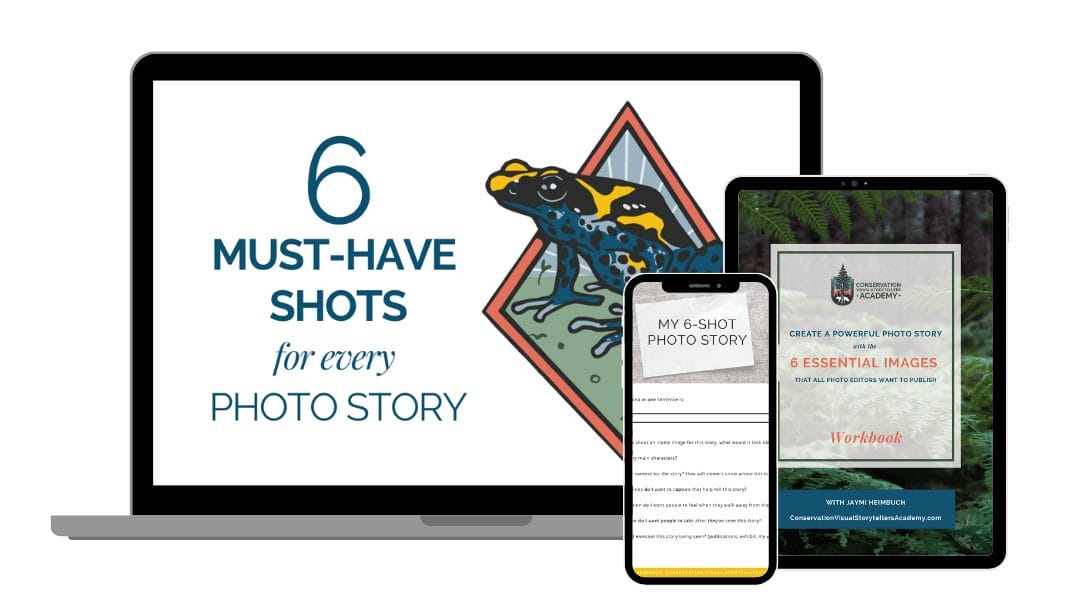
6 Must-Have Shots for a Photo Story
New to photo stories? Start by learning how to create a powerful photo story with the 6 essential images that all photo editors want to publish.
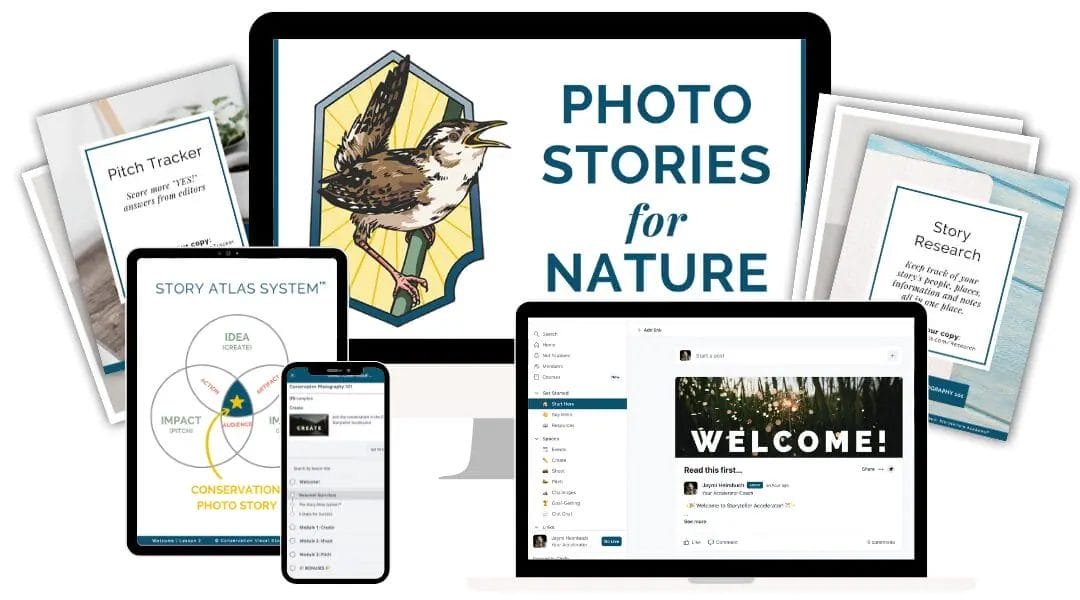
Photo Stories for Nature
Master how to photograph impressive photo stories and effectively share them so they make an impact.

Conservation Filmmaking 101
Master how to craft powerfully moving films that create conservation impact.
Get The Most Popular Free Resources
Make leaps forward in your visual storytelling download three of our most valuable free resources for photographers..

Ready to take better photos?
Get all the good things delivered.
Photography how-to guides, expert interviews, behind-the-scenes insights & more all delivered to your inbox weekly.
Privacy Overview

- Share your Views
- Submit a Contest
- Recommend Contest
- Terms of Service
- Testimonials

Photo Contests – Photography competitions
- Filter Photo Contests
- All Photo Contests
- Get FREE Contests Updates
- Photo Contest Tips
- Photography Deals

What is a Photo Essay? 9 Photo Essay Examples You Can Recreate
A photo essay is a series of photographs that tell a story. Unlike a written essay, a photo essay focuses on visuals instead of words. With a photo essay, you can stretch your creative limits and explore new ways to connect with your audience. Whatever your photography skill level, you can recreate your own fun and creative photo essay.
9 Photo Essay Examples You Can Recreate
- Photowalk Photo Essay
- Transformation Photo Essay
- Day in the Life Photo Essay
- Event Photo Essay
- Building Photo Essay
- Historic Site or Landmark Photo Essay
- Behind the Scenes Photo Essay
- Family Photo Essay
- Education Photo Essay
Stories are important to all of us. While some people gravitate to written stories, others are much more attuned to visual imagery. With a photo essay, you can tell a story without writing a word. Your use of composition, contrast, color, and perspective in photography will convey ideas and evoke emotions.
To explore narrative photography, you can use basic photographic equipment. You can buy a camera or even use your smartphone to get started. While lighting, lenses, and post-processing software can enhance your photos, they aren’t necessary to achieve good results.
Whether you need to complete a photo essay assignment or want to pursue one for fun or professional purposes, you can use these photo essay ideas for your photography inspiration . Once you know the answer to “what is a photo essay?” and find out how fun it is to create one, you’ll likely be motivated to continue your forays into photographic storytelling.
1 . Photowalk Photo Essay
One popular photo essay example is a photowalk. Simply put, a photowalk is time you set aside to walk around a city, town, or a natural site and take photos. Some cities even have photowalk tours led by professional photographers. On these tours, you can learn the basics about how to operate your camera, practice photography composition techniques, and understand how to look for unique shots that help tell your story.
Set aside at least two to three hours for your photowalk. Even if you’re photographing a familiar place—like your own home town—try to look at it through new eyes. Imagine yourself as a first-time visitor or pretend you’re trying to educate a tourist about the area.
Walk around slowly and look for different ways to capture the mood and energy of your location. If you’re in a city, capture wide shots of streets, close-ups of interesting features on buildings, street signs, and candid shots of people. Look for small details that give the city character and life. And try some new concepts—like reflection picture ideas—by looking for opportunities to photographs reflections in mirrored buildings, puddles, fountains, or bodies of water.
2 . Transformation Photo Essay
With a transformation photography essay, you can tell the story about change over time. One of the most popular photostory examples, a transformation essay can document a mom-to-be’s pregnancy or a child’s growth from infancy into the toddler years. But people don’t need to be the focus of a transformation essay. You can take photos of a house that is being built or an urban area undergoing revitalization.
You can also create a photo narrative to document a short-term change. Maybe you want to capture images of your growing garden or your move from one home to another. These examples of photo essays are powerful ways of telling the story of life’s changes—both large and small.
3 . Day in the Life Photo Essay
Want a unique way to tell a person’s story? Or, perhaps you want to introduce people to a career or activity. You may want to consider a day in the life essay.
With this photostory example, your narrative focuses on a specific subject for an entire day. For example, if you are photographing a farmer, you’ll want to arrive early in the morning and shadow the farmer as he or she performs daily tasks. Capture a mix of candid shots of the farmer at work and add landscapes and still life of equipment for added context. And if you are at a farm, don’t forget to get a few shots of the animals for added character, charm, or even a dose of humor. These types of photography essay examples are great practice if you are considering pursuing photojournalism. They also help you learn and improve your candid portrait skills.
4 . Event Photo Essay
Events are happening in your local area all the time, and they can make great photo essays. With a little research, you can quickly find many events that you could photograph. There may be bake sales, fundraisers, concerts, art shows, farm markets, block parties, and other non profit event ideas . You could also focus on a personal event, such as a birthday or graduation.
At most events, your primary emphasis will be on capturing candid photos of people in action. You can also capture backgrounds or objects to set the scene. For example, at a birthday party, you’ll want to take photos of the cake and presents.
For a local or community event, you can share your photos with the event organizer. Or, you may be able to post them on social media and tag the event sponsor. This is a great way to gain recognition and build your reputation as a talented photographer.
5. Building Photo Essay
Many buildings can be a compelling subject for a photographic essay. Always make sure that you have permission to enter and photograph the building. Once you do, look for interesting shots and angles that convey the personality, purpose, and history of the building. You may also be able to photograph the comings and goings of people that visit or work in the building during the day.
Some photographers love to explore and photograph abandoned buildings. With these types of photos, you can provide a window into the past. Definitely make sure you gain permission before entering an abandoned building and take caution since some can have unsafe elements and structures.
6. Historic Site or Landmark Photo Essay
Taking a series of photos of a historic site or landmark can be a great experience. You can learn to capture the same site from different angles to help portray its character and tell its story. And you can also photograph how people visit and engage with the site or landmark. Take photos at different times of day and in varied lighting to capture all its nuances and moods.
You can also use your photographic essay to help your audience understand the history of your chosen location. For example, if you want to provide perspective on the Civil War, a visit to a battleground can be meaningful. You can also visit a site when reenactors are present to share insight on how life used to be in days gone by.
7 . Behind the Scenes Photo Essay
Another fun essay idea is taking photos “behind the scenes” at an event. Maybe you can chronicle all the work that goes into a holiday festival from the early morning set-up to the late-night teardown. Think of the lead event planner as the main character of your story and build the story about him or her.
Or, you can go backstage at a drama production. Capture photos of actors and actresses as they transform their looks with costuming and makeup. Show the lead nervously pacing in the wings before taking center stage. Focus the work of stagehands, lighting designers, and makeup artists who never see the spotlight but bring a vital role in bringing the play to life.
8. Family Photo Essay
If you enjoy photographing people, why not explore photo story ideas about families and relationships? You can focus on interactions between two family members—such as a father and a daughter—or convey a message about a family as a whole.
Sometimes these type of photo essays can be all about the fun and joy of living in a close-knit family. But sometimes they can be powerful portraits of challenging social topics. Images of a family from another country can be a meaningful photo essay on immigration. You could also create a photo essay on depression by capturing families who are coping with one member’s illness.
For these projects on difficult topics, you may want to compose a photo essay with captions. These captions can feature quotes from family members or document your own observations. Although approaching hard topics isn’t easy, these types of photos can have lasting impact and value.
9. Education Photo Essay
Opportunities for education photo essays are everywhere—from small preschools to community colleges and universities. You can seek permission to take photos at public or private schools or even focus on alternative educational paths, like homeschooling.
Your education photo essay can take many forms. For example, you can design a photo essay of an experienced teacher at a high school. Take photos of him or her in action in the classroom, show quiet moments grading papers, and capture a shared laugh between colleagues in the teacher’s lounge.
Alternatively, you can focus on a specific subject—such as science and technology. Or aim to portray a specific grade level, document activities club or sport, or portray the social environment. A photo essay on food choices in the cafeteria can be thought-provoking or even funny. There are many potential directions to pursue and many great essay examples.
While education is an excellent topic for a photo essay for students, education can be a great source of inspiration for any photographer.
Why Should You Create a Photo Essay?
Ultimately, photographers are storytellers. Think of what a photographer does during a typical photo shoot. He or she will take a series of photos that helps convey the essence of the subject—whether that is a person, location, or inanimate object. For example, a family portrait session tells the story of a family—who they are, their personalities, and the closeness of their relationship.
Learning how to make a photo essay can help you become a better storyteller—and a better photographer. You’ll cultivate key photography skills that you can carry with you no matter where your photography journey leads.
If you simply want to document life’s moments on social media, you may find that a single picture doesn’t always tell the full story. Reviewing photo essay examples and experimenting with your own essay ideas can help you choose meaningful collections of photos to share with friends and family online.
Learning how to create photo essays can also help you work towards professional photography ambitions. You’ll often find that bloggers tell photographic stories. For example, think of cooking blogs that show you each step in making a recipe. Photo essays are also a mainstay of journalism. You’ll often find photo essays examples in many media outlets—everywhere from national magazines to local community newspapers. And the best travel photographers on Instagram tell great stories with their photos, too.
With a photo essay, you can explore many moods and emotions. Some of the best photo essays tell serious stories, but some are humorous, and others aim to evoke action.
You can raise awareness with a photo essay on racism or a photo essay on poverty. A photo essay on bullying can help change the social climate for students at a school. Or, you can document a fun day at the beach or an amusement park. You have control of the themes, photographic elements, and the story you want to tell.
5 Steps to Create a Photo Essay
Every photo essay will be different, but you can use a standard process. Following these five steps will guide you through every phase of your photo essay project—from brainstorming creative essay topics to creating a photo essay to share with others.
Step 1: Choose Your Photo Essay Topics
Just about any topic you can imagine can form the foundation for a photo essay. You may choose to focus on a specific event, such as a wedding, performance, or festival. Or you may want to cover a topic over a set span of time, such as documenting a child’s first year. You could also focus on a city or natural area across the seasons to tell a story of changing activities or landscapes.
Since the best photo essays convey meaning and emotion, choose a topic of interest. Your passion for the subject matter will shine through each photograph and touch your viewer’s hearts and minds.
Step 2: Conduct Upfront Research
Much of the work in a good-quality photo essay begins before you take your first photo. It’s always a good idea to do some research on your planned topic.
Imagine you’re going to take photos of a downtown area throughout the year. You should spend some time learning the history of the area. Talk with local residents and business owners and find out about planned events. With these insights, you’ll be able to plan ahead and be prepared to take photos that reflect the area’s unique personality and lifestyles.
For any topic you choose, gather information first. This may involve internet searches, library research, interviews, or spending time observing your subject.
Step 3: Storyboard Your Ideas
After you have done some research and have a good sense of the story you want to tell, you can create a storyboard. With a storyboard, you can write or sketch out the ideal pictures you want to capture to convey your message.
You can turn your storyboard into a “shot list” that you can bring with you on site. A shot list can be especially helpful when you are at a one-time event and want to capture specific shots for your photo essay. If you’ve never created a photo essay before, start with ten shot ideas. Think of each shot as a sentence in your story. And aim to make each shot evoke specific ideas or emotions.
Step 4: Capture Images
Your storyboard and shot list will be important guides to help you make the most of each shoot. Be sure to set aside enough time to capture all the shots you need—especially if you are photographing a one-time event. And allow yourself to explore your ideas using different photography composition, perspective, and color contrast techniques.
You may need to take a hundred images or more to get ten perfect ones for your photographic essay. Or, you may find that you want to add more photos to your story and expand your picture essay concept.
Also, remember to look for special unplanned, moments that help tell your story. Sometimes, spontaneous photos that aren’t on your shot list can be full of meaning. A mix of planning and flexibility almost always yields the best results.
Step 5: Edit and Organize Photos to Tell Your Story
After capturing your images, you can work on compiling your photo story. To create your photo essay, you will need to make decisions about which images portray your themes and messages. At times, this can mean setting aside beautiful images that aren’t a perfect fit. You can use your shot list and storyboard as a guide but be open to including photos that weren’t in your original plans.
You may want to use photo editing software—such as Adobe Lightroom or Photoshop— to enhance and change photographs. With these tools, you can adjust lighting and white balance, perform color corrections, crop, or perform other edits. If you have a signature photo editing style, you may want to use Photoshop Actions or Lightroom Presets to give all your photos a consistent look and feel.
You order a photo book from one of the best photo printing websites to publish your photo story. You can add them to an album on a photo sharing site, such as Flickr or Google Photos. Also, you could focus on building a website dedicated to documenting your concepts through visual photo essays. If so, you may want to use SEO for photographers to improve your website’s ranking in search engine results. You could even publish your photo essay on social media. Another thing to consider is whether you want to include text captures or simply tell your story through photographs.
Choose the medium that feels like the best space to share your photo essay ideas and vision with your audiences. You should think of your photo essay as your own personal form of art and expression when deciding where and how to publish it.
Photo Essays Can Help You Become a Better Photographer
Whatever your photography ambitions may be, learning to take a photo essay can help you grow. Even simple essay topics can help you gain skills and stretch your photographic limits. With a photo essay, you start to think about how a series of photographs work together to tell a complete story. You’ll consider how different shots work together, explore options for perspective and composition, and change the way you look at the world.
Before you start taking photos, you should review photo essay examples. You can find interesting pictures to analyze and photo story examples online, in books, or in classic publications, like Life Magazine . Don’t forget to look at news websites for photojournalism examples to broaden your perspective. This review process will help you in brainstorming simple essay topics for your first photo story and give you ideas for the future as well.
Ideas and inspiration for photo essay topics are everywhere. You can visit a park or go out into your own backyard to pursue a photo essay on nature. Or, you can focus on the day in the life of someone you admire with a photo essay of a teacher, fireman, or community leader. Buildings, events, families, and landmarks are all great subjects for concept essay topics. If you are feeling stuck coming up with ideas for essays, just set aside a few hours to walk around your city or town and take photos. This type of photowalk can be a great source of material.
You’ll soon find that advanced planning is critical to your success. Brainstorming topics, conducting research, creating a storyboard, and outlining a shot list can help ensure you capture the photos you need to tell your story. After you’ve finished shooting, you’ll need to decide where to house your photo essay. You may need to come up with photo album title ideas, write captions, and choose the best medium and layout.
Without question, creating a photo essay can be a valuable experience for any photographer. That’s true whether you’re an amateur completing a high school assignment or a pro looking to hone new skills. You can start small with an essay on a subject you know well and then move into conquering difficult ideas. Maybe you’ll want to create a photo essay on mental illness or a photo essay on climate change. Or maybe there’s another cause that is close to your heart.
Whatever your passion, you can bring it to life with a photo essay.
JOIN OVER 81,620 and receive weekly updates!
Comments are closed.

Photo Contest Insider
The world’s largest collection of photo contests.
Photo contests are manually reviewed by our team to ensure only the very best make it on to our website. It’s our policy to only list photo contests that are fair.

Subscription
Register now to get updates on promotions and offers
DISCLAIMER:
- Photo Contest Filter
- Get FREE Contest Updates
Photo Contest Insider © 2009 - 2024
Advertise Submit Badges Help Terms Privacy Unsubscribe Do Not Sell My Information
Limited Time Offer! Save up to 50% Off annual plans.* View Plans
Save up to 50% Now .* View Plans
Advice for an Unforgettable Photo Essay
Six steps for turning your images into a memorable photo essay, from curating your best work to crafting a title.

A man sits alone on a chair on the side of the road. We see him from above, surrounded by grey cobblestones neatly placed, a broken plastic chair, and some pylons scattered along the curb. A street cat wanders out of the frame and away from the man. He appears lonely, the only person inhabiting the place in which he seems so comfortably seated. As the eye wanders throughout the frame, however, the viewer discovers more: a vast city cast beyond the street and behind the man’s chair. This image closes Sarah Pannell’s photo essay Sehir , a quiet study of urban life.
Possibilities, discovery, and stories: these are some of the most effective elements of a photo essay. Collections of images can help produce a narrative, evoke emotion, and guide the viewer through one or more perspectives. A well-executed photo essay doesn’t rely on a title or any prior knowledge of its creator; it narrates on its own, moving viewers through sensations, lessons, and reactions.
Famous photo essays like Country Doctor by W. Eugene Smith or Gordon Parks’ The Harlem Family are acclaimed for showing a glimpse into the lives of the sick and impoverished. Other well-made photo essays offer a new way to look at the everyday, such as Peter Funch’s much-reposted photo series 42nd and Vanderbilt , for which Funch photographed the same street corner for nine years. As shown by these photographers’ experiences with the medium, a collection of photos can enliven spaces and attitudes. Strong photo essays can give voice to marginalized individuals and shine a spotlight on previously overlooked experiences.
You don’t necessarily need to be a documentary photographer to create a powerful photo essay. Photo essays can showcase any topic, from nature photography to portraiture to wedding shots. We spoke to a few photographers to get their perspectives on what makes a good photo essay, and their tips for how any photographer can get started in this medium. Here are six steps to follow to create a photo essay that tells a memorable story.
Choose a specific topic or theme for your photo essay.
There are two types of photo essays: the narrative and the thematic. Narrative photo essays focus on a story you’re telling the viewer, while thematic photo essays speak to a specific subject.
The most natural method for choosing a topic or theme for your photo essay is to go with what you know. Photograph what you experience. Whether that includes people, objects, or the things you think about throughout the day, accessibility is key here. Common topics or concepts to start with are emotions (depicting sadness or happiness) or experiences (everyday life, city living).
For photographer Sharon Pannen , planning a photo essay is as simple as “picking out a subject you find interesting or you want to make a statement about.”

From Paper & Stories , a photo series by Sharon Pannen for Schön! Magazine.
Consider your photo subjects.
The subjects of your photographs, whether human or not, will fill the space of your photos and influence the mood or idea you’re trying to depict. The subject can determine whether or not your photos are considered interesting. “I always try to find someone that catches my eye. I especially like to see how the light falls on their face and how a certain aesthetic might add to their persona,” says photographer Victoria Wojtan .
While subjects and their interest factor are, well, subjective, when considering your subjects, you should ask yourself about your audience. Do other people want to see this? Is my subject representative of the larger idea my photo essay is trying to convey? Your projects can involve people you know or people you’ve only just met.
“Most projects I work on involve shooting portraits of strangers, so there’s always a tension in approaching someone for a portrait,” says photographer Taylor Dorrell . For Wojtan, that tension can help build trust with a subject and actually leads to more natural images “If there’s tension it’s usually because the person’s new to being photographed by someone for something that’s outside of a candid moment or selfie, and they need guidance for posing. This gives me the opportunity to make them feel more comfortable and let them be themselves. I tend to have a certain idea in mind, but try to allow for organic moments to happen.”
Aim for a variety of images.
Depending on your theme, there are a few types of photos you’ll want to use to anchor your essay. One or two lead photos should slowly introduce the viewer to your topic. These initial photos will function in a similar way to the introductory paragraph in a written essay or news article.
From there, you should consider further developing your narrative by introducing elements like portraiture, close ups, detail shots, and a carefully selected final photo to leave the viewer with the feeling you set out to produce in your photos. Consider your opening and closing images to be the most important elements of your photo essay, and choose them accordingly. You want your first images to hook the viewer, and you also want your final images to leave a lasting impression and perhaps offer a conclusion to the narrative you’ve developed.
Including different types of photos, shot at different ranges, angles, and perspectives, can help engage your viewer and add more texture to your series.
Says photographer Taylor Dorrell: “After I have a group of images, I tend to think about color, composition, the order the images were taken, the subject material, and relevance to the concept.”

From Taylor Dorrell’s photo essay White Fences : “White Fences is an ongoing photo series that explores the theme of suburban youth in the United States, specifically in the midwest suburb New Albany, Ohio.”
Put your emotions aside.
Self-doubt can easily come into play when working with your own photography. The adage that we are our own worst critics is often true. It can be difficult to objectively select your strongest images when creating a photo essay. This is why putting together photo essays is such a useful practice for developing your curatorial skills.
“The most important part for me is getting outside opinions. I don’t do that enough, and have a bias in selecting images that might not be the most powerful images or the most effective sequence of images,” says Dorrell. Your own perception of a photograph can cloud your ability to judge whether or not it adds to your photo essay. This is especially true when your essay deals with personal subjects. For example, a photo essay about your family may be hard to evaluate, as your own feelings about family members will impact how you take and view the photos. This is where getting feedback from peers can be invaluable to producing a strong series.
Collecting feedback while putting your photo essay together can help you determine the strengths, weaknesses, and gaps within the collection of photos you’ve produced. Ask your friends to tell you their favorites, why they like them, and what they think you’re going for in the work you’ve created. Their opinions can be your guide, not just your own emotions.
Edit your photo selection.
Beyond post-production, the series of photos you select as your essay will determine whether you’ve executed your theme or narrative effectively. Can the photos stand alone, without written words, and tell the story you set out to? Do they make sense together, in a logical sequence? The perfect photo essay will give your audience a full picture of the narrative, theme, or essence you’re looking to capture.
A good method to use to cull your images down is to remove as many as half of your images straight away to see if your narrative is still as strong with fewer photos. Or, perhaps, deciding on a small number you’d like to aim for (maybe just five to ten images) and using this as a method to narrow down to the images that tell your story best.

From Taylor Dorrell’s photo essay Over the Rhine , featured in Vice.
Give your photo essay a title, and add a concise written statement.
Finally, you’ll want to create a title and written statement for your photo essay. This will help position your work and can enable the viewer to fully understand your intention, or at least guide their perspective.
A solid written statement and title will be relevant to your topic, detail your primary objective, and introduce your point of view. It’s an opportunity to clarify your intentions to the viewer and ensure they walk away with a clear interpretation of your work. Depending on your photo essay, you may want to include several paragraphs of text, but even just one or two sentences of background can be enough to expand the viewer’s understanding of your work.
Consider if you’d like to add the written statement at the beginning of your essay to introduce it, or at the end as a conclusion. Either one can be impactful, and it depends how you’d like people to experience your work.
For his photo essay White Fences, excerpted above, Taylor Dorrell wrote only one sentence of introduction. But for his series Over the Rhine, Dorell included a longer written statement to accompany the work, which is “an ongoing photo series that seeks to explore the Cincinnati neighborhood of the same name and its surroundings. The series was started in response to the shooting of Samuel DuBose, an unarmed black man, by officer Ray Tensing of the University of Cincinnati Police, which happened July 19th, 2015.” Dorell’s text goes on to offer more background on the project, setting up the viewer with all the information they need to understand the context of the photo essay.
Depending on the motivations behind your photo essay and what sort of subject it depicts, a longer text may be necessary—or just a few words might be enough.
Looking for a place to share your photo essays with the world? Take a look at our guide to creating a photography website for tips on showcasing your photos online.
Cover image by Taylor Dorrell, from his photo essay Hurricane Over Sugar .

A Guide to Improving Your Photography Skills
Elevate your photography with our free resource guide. Gain exclusive access to insider tips, tricks, and tools for perfecting your craft, building your online portfolio, and growing your business.
Get the best of Format Magazine delivered to your inbox.

The Art of Archiving: A Comprehensive Guide to Preserve Your Digital Masterpieces

9 Graphic Design Portfolios That Will Inspire Your Inner Artist
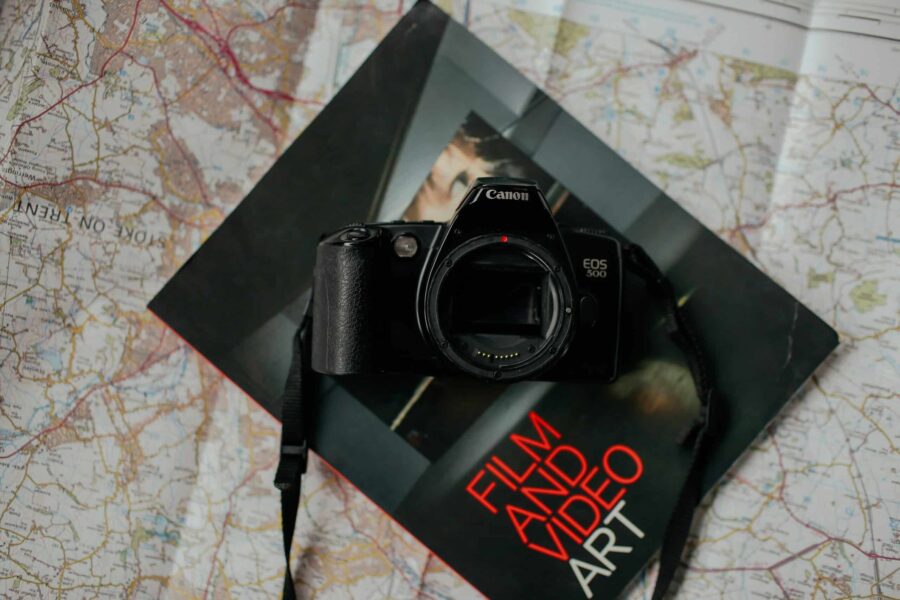
Top 20 Best Photography Books for Beginners
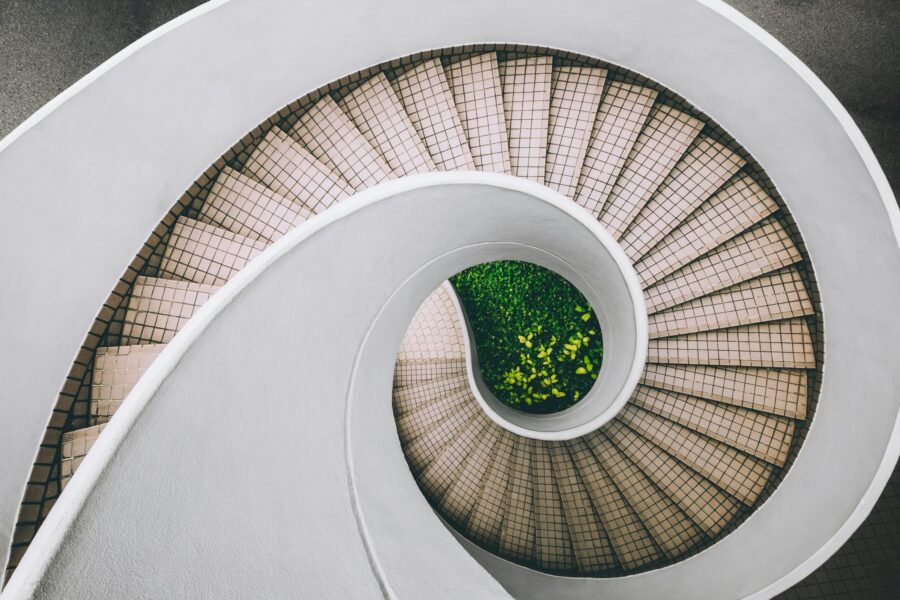
Beyond the Rule of Thirds: 30 Creative Techniques for Composition

Inspiring Still Life Photography Portfolios: Crafting a Quality Online Presence

10 Inspiring Examples and Expert Tips for Crafting A Powerful Artist Statement

Get Inspired by 10 Fashion Design Portfolios That Capture the Essence of Contemporary Style
*Offer must be redeemed by May 31st, 2024 at 11:59 p.m. PST. 50% discount off the subscription price of a new annual Pro Plus plan can be applied at checkout with code PROPLUSANNUAL, 38% discount off the price of a new annual Pro plan can be applied with code PROANNUAL, and 20% discount off the price of a new Basic annual plan can be applied with code BASICANNUAL. The discount applies to the first year only. Cannot be combined with any other promotion.
- Privacy Overview
- Strictly Necessary Cookies
This website uses cookies so that we can provide you with the best user experience possible. Cookie information is stored in your browser and performs functions such as recognising you when you return to our website and helping our team to understand which sections of the website you find most interesting and useful.
Strictly Necessary Cookie should be enabled at all times so that we can save your preferences for cookie settings.
If you disable this cookie, we will not be able to save your preferences. This means that every time you visit this website you will need to enable or disable cookies again.
- PRO Courses Guides New Tech Help Pro Expert Videos About wikiHow Pro Upgrade Sign In
- EDIT Edit this Article
- EXPLORE Tech Help Pro About Us Random Article Quizzes Request a New Article Community Dashboard This Or That Game Popular Categories Arts and Entertainment Artwork Books Movies Computers and Electronics Computers Phone Skills Technology Hacks Health Men's Health Mental Health Women's Health Relationships Dating Love Relationship Issues Hobbies and Crafts Crafts Drawing Games Education & Communication Communication Skills Personal Development Studying Personal Care and Style Fashion Hair Care Personal Hygiene Youth Personal Care School Stuff Dating All Categories Arts and Entertainment Finance and Business Home and Garden Relationship Quizzes Cars & Other Vehicles Food and Entertaining Personal Care and Style Sports and Fitness Computers and Electronics Health Pets and Animals Travel Education & Communication Hobbies and Crafts Philosophy and Religion Work World Family Life Holidays and Traditions Relationships Youth
- Browse Articles
- Learn Something New
- Quizzes Hot
- This Or That Game
- Train Your Brain
- Explore More
- Support wikiHow
- About wikiHow
- Log in / Sign up
- Education and Communications
- College University and Postgraduate
- Academic Writing
How to Make a Photo Essay
Last Updated: September 27, 2023 Fact Checked
This article was co-authored by Heather Gallagher . Heather Gallagher is a Photojournalist & Photographer based in Austin, Texas. She runs her own photography studio named "Heather Gallagher Photography" which was voted Austin's Best Family Photographer and top 3 Birth Photographers in 2017, 2018, and 2019. Heather specializes in family Photojournalism and has over 15 years of experience documenting individuals, families, and businesses all over the world. Her clients include Delta Airlines, Oracle, Texas Monthly, and her work has been featured in The Washington Post and The Austin American Statesman. She is a member of the International Association of Professional Birth Photographers (IAPBP). There are 11 references cited in this article, which can be found at the bottom of the page. This article has been fact-checked, ensuring the accuracy of any cited facts and confirming the authority of its sources. This article has been viewed 288,567 times.
Photo essays are an increasingly popular medium for journalists, bloggers, and advertisers alike. Whether you’re trying to show the emotional impact of a current news story or share your hobby with friends and family, images can capture your topic in a personal, emotional, and interesting way. Creating a photo essay can be as easy as choosing a topic, getting your images, and organizing the essay.
Things You Should Know
- Reflect long and hard on your topic, considering your audience, current events, and whether to go for a thematic or narrative approach.
- Create an outline, including your focus image, establishing shot, clincher, and other image details.
- When you finally take your photos, remember to take more photos than you think you need and don't be afraid to let the project change as you create it.
Finding Your Topic

- Offer a photo essay of your place of business as a training tool.
- Use a photo essay about your business as a sales or social tool by publishing it on your website or social media page.
- Create a how to photo essay to help others learn about your hobby, so they can take it up as well. [4] X Research source

- Thematic subjects are big ideas including things like local gun laws, at-risk youth, or welcoming home soldiers.
- Narrative essays can include a day in the life, how to tutorials, or progression series that show changes over time such as tracking a building project.
- If you have been given a commission or specific publication to work with, you may need to choose a topic that will fit a thematic or narrative approach as outlined by the publication. Make sure you are aware of any publication guidelines in advance.
Organizing Your Shoot

- Consider how difficult it will be to get permission to photograph your subjects. If you already have relationships established, it will be easier. If not, allow for extra time to get permission and/or waivers.
- Schools, daycares, and other places with kids typically have more regulations on who can be photographed and for what purposes. You’ll usually need to get parental approval, in addition to permission from those in charge. [7] X Research source

- Consider doing interviews with people involved prior to the shoot. Ask things like, “What’s the most interesting thing you do during this event?” or “How long have you been involved with this organization?”
- These interviews are also a great opportunity to ask for permission and get waivers.
- If you’re going to visit a job site, charitable event, or other large group activity, ask the person or persons in charge to explain what you’re doing to everyone before you arrive. [8] X Research source

Capturing Your Images

- Many new photographers stay away from high ISO shots because they allow more light through producing a “busy” image. However, these images are often easier to edit later as there’s more information to work with. [11] X Research source
- If it’s very bright in your location or you’ve set up artificial lighting, a low ISO is likely adequate, For darker areas, you’ll likely need to use a higher ISO.
- If you need one second to capture an image with a base ISO of 100, you’ll need one eighth of a second to capture with an ISO of 800. [13] X Research source

- Even snapping candid shots, which you may need to capture quickly, take a few moments to think about how objects are placed to make the most impact.
- Always think about how the main subject’s surroundings play into the overall image, and try to create different levels and points of interest.
- You can change composition as part of the editing process in some cases, so if you can’t line up the shot just right, don’t let it deter you from capturing the image you want. [14] X Research source

Organizing the Essay

- If you’re doing a day in the life photo essay about a frustrated person working in an office, an image of that person struggling to open the front door against the wind might be an apt focus shot.
- If your essay is about the process of building a home, your focus image may be something like a contractor and architect looking at blue prints with the framed up home in the background.
- If your essay is about a family reunion, the focus image may be a funny shot of the whole family making faces, pretending to be fighting, or a serious photo of the family posed together. Capture whatever seems natural for the family. [18] X Research source

- Regardless of essay type, you’ll need a focus image to grab attention.
- Use an overall shot to give context to your essay. Where is it, when is it happening, who’s involved, what’s going on, and why should someone be interested? The five “W’s” of journalism are a great way to determine what your overall shot should capture.
- Find your final image. This should be something provocative that asks your viewer to think about the topic.
- Between the focus and overall shot and ending image, include a series of images that move the viewer from the lead-in shots to its result. Use images that build in intensity or draw the viewers further into the essay.

- If the images aren’t telling the story, ask your friends to look at your other photos and ask, “I wanted this image to make this point. You got a different idea. Would any of these images make this point to you more clearly?”
- If the others like the images you’ve chosen, you may still want to ask them to look at your other photos and tell you if they think any of the images you didn’t include should be added in. They may see something you missed. [20] X Research source

- If you're commissioned to add photos to an essay, you should make sure images reflect the written word, but also add emotion and context the writing could not capture. For example, an essay on poverty may include an image of a child and parent living on the street could capture more emotional context.
- Captions should only include information the viewer could not derive from the photo itself. For instance, you can include a date, the subject’s name, or a statistic relevant to your subject in the caption.
- If you choose not to have any text or just a title and some introductory and/or closing words, make sure you convey all necessary information succinctly. [21] X Research source
Expert Q&A

- Be creative with your topics. However, something as simple as "things I like" will suffice so long as you stay creative. Thanks Helpful 0 Not Helpful 0
- Make sure you're familiar with your camera. It will make the photo composition a lot easier. Thanks Helpful 0 Not Helpful 0
- Don't get discouraged. It may take several tries to get the desired results in your photos. Thanks Helpful 1 Not Helpful 0

You Might Also Like

- ↑ http://digital-photography-school.com/5-photo-essay-tips/
- ↑ Heather Gallagher. Professional Photojournalist & Photographer. Expert Interview. 8 April 2020.
- ↑ http://improvephotography.com/30816/10-ideas-creative-photo-essays/
- ↑ http://www.apogeephoto.com/how-to-create-a-photo-essay/
- ↑ https://petapixel.com/how-to-create-a-photo-essay/
- ↑ http://photo.journalism.cuny.edu/week-5/
- ↑ http://clickitupanotch.com/2010/12/creating-a-photo-essay/
- ↑ https://photographylife.com/what-is-iso-in-photography
- ↑ https://wiredimpact.com/blog/how-to-make-a-photo-essay-nonprofit/
- ↑ http://digital-photography-school.com/5-tips-for-creating-a-photo-essay-with-a-purpose/
- ↑ https://www.format.com/magazine/resources/photography/how-to-make-photo-essay-examples
About This Article

To make a photo essay, start by selecting a subject that is easy to capture and that inspires you, like a friend or a family pet. Then, decide if you want to present your photo essay as thematic, which shows specific examples of a big idea, or narrative, with a beginning, middle, and end. Next, create an outline of your essay to determine which photos you’ll need, like an establishing shot. Finally, take your photos, select which images you want to use in your essay, and organize them according to your theme before adding text to explain the essay. To learn how to capture the best images, keep scrolling! Did this summary help you? Yes No
- Send fan mail to authors
Reader Success Stories
Aug 3, 2016
Did this article help you?

Sep 24, 2023
Christopher Ulloa Abarua
Mar 16, 2018

Featured Articles

Trending Articles

Watch Articles

- Terms of Use
- Privacy Policy
- Do Not Sell or Share My Info
- Not Selling Info
Get all the best how-tos!
Sign up for wikiHow's weekly email newsletter
How to Make a Photo Essay: 5 Tips for Impactful Results
A Post By: Christina N Dickson

Want to tell meaningful stories with your photos? That’s what a photo essay is all about: conveying concepts and narratives through a series of carefully chosen images.
While telling a story with photos can be a daunting task, there are several easy tips and techniques you can use in your photo essays to create striking, stunning, eye-opening results.
And that’s what I’m going to share in this article: five photo essay tips that you can immediately apply to your photography. You’ll leave as a better photo essayist than when you arrived!
Let’s get started.
What is a photo essay?
A photo essay is a collection of images placed in a specific order to convey certain emotions , specific concepts, or a progression of events.
In other words:
The photo essay tells stories just like a normal piece of writing , except with images instead of words. (Here, I’m using the term “story” loosely; as mentioned above, photo essays can encapsulate emotions or concepts in addition to traditional, time-based narratives.)

Plenty of world-class photojournalists use photo essays, including Lauren Greenfield, James Nachtwey, and Joachim Ladefoged. But the photo essay format isn’t exclusive to professionals, and photo essays don’t need to cover dramatic events such as wars, natural disasters, and social issues. Whether you are a complete beginner, a hobbyist, or a professional, the photo essay is a great way to bring your images to life, tell relevant stories about your own surroundings, and touch your family, friends, and coworkers.
So without further ado, let’s look at five easy tips to take your photo essays to the next level, starting with:
1. Find a topic you care about
Every good photo essay should start with an idea .
Otherwise, you’ll be shooting without a purpose – and while such an approach may eventually lead to an interesting series of photos, it’s far, far easier to begin with a topic and only then take out your camera.
As I emphasized above, a photo essay can be about anything. You don’t need to fixate on “classic” photo essay themes, such as war and poverty. Instead, you might focus on local issues that matter to you (think of problems plaguing your community). You can also think about interesting stories worth telling, even if they don’t have an activism angle.
For instance, is there an area undergoing major development? Try documenting the work from start to finish. Is there a particular park or nature area you love? Create a series of images that communicate its beauty.

One key item to remember:
Photo essays are most powerful when you, as the photographer, care about the subject. Whether you choose to document something major and public, like an environmental crisis, or whether you choose to document something small and intimate, like the first month of a newborn in the family, make sure you focus on a topic that matters to you .
Otherwise, you’ll struggle to finish the essay – and even if you do successfully complete it, viewers will likely notice your lack of passion.
2. Do your research
The best photo essays involve some real work. Don’t just walk around and shoot with abandon; instead, try to understand your subject.
That way, you can capture a more authentic series of photos.
For instance, if you document a newborn’s first month , spend time with the family. Discover who the parents are, what culture they are from, and their parenting philosophy.

If you cover the process of a school’s drama production, talk with the teachers, actors, and stagehands; investigate the general interest of the student body; find out how the school is financing the production and keeping costs down.
If you photograph a birthday party, check out the theme, the decorations they plan on using, what the birthday kid hopes to get for their gifts.
If you’re passionate about your topic, the research should come easy. You should enjoy learning the backstory.
And then, when it comes time to actually shoot, you’ll have a much clearer understanding of the topic. You’ll know the key players in the story, the key ideas, and the key locations. You’ll be able to hone in on what matters and block out the flashy distractions.
Make sense?
3. Find the right angle
Once you’ve done your research, you’ll know your topic inside and out.
At which point you’ll need to ask yourself:
What is the real, authentic story I want to tell?
Every story has a hundred different angles and perspectives. And trying to share the story from every perspective is a recipe for failure.
Instead, pick a single angle and focus on it. If you’re documenting a local issue, do you want to focus on how it affects children? The physical area? The economy? If you’re documenting a newborn’s first month, do you want to focus on the interaction between the newborn and the parents? The growth of the newborn? The newborn’s emotions?

As you’ll find out during your research, even stories that seem to be completely one-sided have plenty of hidden perspectives to draw on.
So think about your story carefully. In general, I recommend you approach it from the angle you’re most passionate about (consider the previous tip!), but you’re always free to explore different perspectives.
4. Convey emotion
Not all photo essays must convey emotion. But the most powerful ones do.
After all, think of the stories that you know and love. Your favorite books, movies, and TV shows. Do they touch you on an emotional level?
Don’t get me wrong: Every photo essay shouldn’t cover a sappy, heartstring-tugging tale. You can always focus on conveying other emotions: anger, joy, fear, hurt, excitement.
(Of course, if your story is sappy and heartstring-tugging, that’s fine, too – just don’t force it!)
How do you convey emotions, though? There’s no one set way, but you can include photos of meaningful scenes – human interactions generally work well here! – or you can simply show emotion on the faces of your photographic subjects . Really, the best way to communicate emotions through your photos is to feel the emotions yourself; they’ll bleed over into your work for a unique result.

5. Plan your shots
Once you’ve done the research and determined the angle and emotions you’d like to convey, I recommend you sit down, take out a pen and paper, and plan your photo essay .
Should you extensively visualize each photo? Should you walk through the venue, imagining possible compositions ?
Honestly, that’s up to you, and it’ll depend on how you like to work. I do recommend that beginners start out by creating a “shot list” for the essay. Here, you should describe the main subject, the narrative purpose of the image, plus any lighting or composition notes. Once you become more experienced, you can be looser in your planning, though I still recommend you at least think about the different shots you want to capture.
You can start by planning 10 shots. Each one should emphasize a different concept or emotion, but make sure to keep a consistent thread running through every composition; after all, the end goal is to create a powerful series of images that tell a story.
One final tip:
While you should stick to your plan pretty closely, at least at first, don’t ignore the potential for spontaneity. If you see a possible shot, take it! You can later evaluate whether it’s a worthwhile addition to your essay.

Photo essay tips: final words
Now that you’ve finished this article, you know all about what photo essays are, and – hopefully! – how to create a beautiful essay of your own.

Just remember: storytelling takes practice, but you don’t have to be an incredible writer to pull off a powerful photo essay. All you need is a bit of photographic technique, some creativity, and a lot of heart.
Once you start to tell stories with your photos, your portfolio will never be the same!
Now over to you:
Do you have any tips for doing photo essays? Do you have any essays you’re proud of? Share them in the comments below!

Read more from our Tips & Tutorials category
is a visionary artist and philanthropist in Portland Oregon. Her work includes wedding photography www.BrideInspired.com and leadership with www.RevMediaBlog.com .
Some Older Comments

- Guaranteed for 2 full months
- Pay by PayPal or Credit Card
- Instant Digital Download

- All our best articles for the week
- Fun photographic challenges
- Special offers and discounts

- Student Successes
- My Learning
17 Awesome Photo Essay Examples You Should Try Yourself
You can also select your interests for free access to our premium training:
If you’re looking for a photo essay example (or 17!), you’ve come to the right place. But what is the purpose of a photo essay? A photo essay is intended to tell a story or evoke emotion from the viewers through a series of photographs. They allow you to be creative and fully explore an idea. But how do you make one yourself? Here’s a list of photo essay examples. Choose one that you can easily do based on your photographic level and equipment.
Top 17 Photo Essay Examples
Here are some fantastic ideas to get you inspired to create your own photo essays!
17. Photograph a Protest

16. Transformation Photo Essays

15. Photograph the Same Place

14. Create a Photowalk

13. Follow the Change

12. Photograph a Local Event

11. Photograph an Abandoned Building

10. Behind the Scenes of a Photo Shoot

9. Capture Street Fashion

8. Landmark Photo Essay

7. Fathers & Children

6. A Day In the Life

5. Education Photo Essay

4. Fictitious Meals

3. Photograph Coffee Shops Using Cafenol

2. Photograph the Photographers

1. Capture the Neighbors

Photo essays tell stories. And there are plenty of amazingly interesting stories to tell! Photographing photo essays is a great way to practice your photography skills while having fun. You might even learn something! These photo essay examples are here to provide you with the inspiration to go out and tell your own stories through photos!
Popular Content

How to create a photo essay
By Marissa Sapega

According to LDV Capital, there will be 45 billion cameras in the world by 2022 . The proliferation of smartphones with hi-res cameras — coupled with our obsession with documenting the mundane on social media — has led to a glut of images shared on the web .
We're talking 3.2 billion images shared online every single day.
A decade ago, observers were predicting that this would spell the end of professional photography. But as we all know from our Instagram feeds, the need for professional photography — properly produced, contextualised, and published — has never been greater.
With the emergence of next generation digital publishing platforms, we're seeing a new era for photographic essays. Many of the most powerful examples are from journalism, where immersive photos are transforming long-form journalism into a more dynamic and interactive experience.
But powerful photos — coupled with immersive, interactive digital storytelling techniques — are being increasingly incorporated in marketing and communications across multiple industries, from brands to nonprofits.
In this guide, we'll cover:
- The main types of photo essays
- The new era of photo essays
- Tips for making thoughtful and powerful photo essays
- How to make a compelling photo essay
- We'll also provide a range of photo essay examples as we go
If you're looking for more examples, check out our roundup of photo essay examples .
Let's dive in!
What do the BBC, Tripadvisor, and Penguin have in common? They craft stunning, interactive web content with Shorthand. And so can you! Publish your first story for free — no code or web design skills required. Sign up now.
Types of photo essays
There are two primary types of photo essays: thematic and narrative.
Thematic photo essays
Thematic essays focus on a topical story (like a natural disaster). One example of a great thematic essay comes from NBC News Olympics photos: Emotion runs high .
This piece encapsulates the overall gloom of the 2021 Tokyo Olympics — through a series of powerful behind-the-scenes photographs of athletes in varying levels of distress — but does not focus on a particular subject.

Another example of a great photo story comes from the BBC. In “ From Trayvon Martin to Colin Kaepernick , they tell the story of how Black Lives Matter became entwined with sports.

Narrative photo essays
Narrative photo essays take the story a step further and tell a specific story through images.
One striking example is SBS's 28 Days in Afghanistan . This narrative essay documents photojournalist Andrew Quilty's time in the war-ravaged nation through stark photographs and supplementary text.

What is a photo essay in 2023?
A traditional photo essay aims to replace the written word with photographs. Done poorly, it is nothing more than series of images lumped together. Done well, though, the photojournalist or artist takes the reader on an engaging journey.
The main difference between photo essays of yore and photo essays in 2023 is the sophistication of digital publishing. With the rise of digital storytelling platforms, we're seeing a rise in truly interactive and immersive digital photo essays.
Today, many digital photo essays include quotes and text to supplement the visuals and are formatted using interactive scrollytelling techniques. Scrollytelling is a form of visual storytelling that leverages user engagement (scrolling) to reveal images and text in an interesting and dynamic way. The interactivity compels the viewer to continue consuming the content, and creators have a wide latitude when designing the overall effect.
Given the benefits of a more dynamic and interactive form of photo essays, it’s easy to see why they have become so popular in recent years. But as with any photo essay, creating an exceptional digital photo essays requires planning, structure, and know-how.
Let's take a closer look with ten tips for great photo essays.
Looking to learn more about interactive visual storytelling? Check out our guide, 8 tips for powerful visual storytelling .
10 tips for great photo essays

1. Create visual structure
An authentic photo essay requires visual markers to help transform a collection of images into a narrative. For example, photo chapter headings in Growing up young introduce each new girl in the story.
Similarly, in SBS’s photojournalism story — 28 days in Afghanistan , mentioned above — each dated header delineates a part of the story, providing an easy-to-follow chronological structure and pace.
Daniel Boud intersperses his own thoughts in between a haunting series of photographs of the iconic Sydney Opera House as it underwent a restoration during the early days of the Covid-19 pandemic in The Sydney Opera House at Rest .
Text can add depth to the photo essay—but take care where you add it. It should support and enhance the final product, not overshadow it.

2. Make it interactive
In 2023, the best photo essays are interactive.
One great example of an interactive photo essay is WaterAid’s essay, Water and Climate . This photo essay highlights the people climate change has impacted most brutally, including a video, stark close-up photography, and graphics to get its point across.
The photo essay uses minimal text, preferring to allow the images to speak for themselves. As a user scrolls, it exposes them to more content. Each visual and supplemental text further immerses the viewer into the story until the end, where they encounter a call to action to join WaterAid in helping those in need.
Nonprofits like WaterAid often use interactive photo essays to compel people to act , because they work. Half the battle of convincing someone to part with their money is creating an emotional connection with them—something a photo essay does particularly well.

3. Produce more content than you need
Have you ever seen how much film footage ends up on the cutting room floor for the average movie (known as the shooting ratio)? It’s a lot.
Why is this? First, filmmakers know that many of the shots they take will be either poor-quality or simply not up to their exacting standards. Second, if a director included all the footage they took throughout the entire production in the final product, her movie would be a bloated mess.
The editor’s job is to strip away the dead weight to reveal a clean, refined, final product that keeps viewers raptly engaged. However, an editor may struggle to do his job if the director has not provided enough usable footage.
The same principles apply to creating an exceptional photo essay. Always assemble more visuals and content than you think you’ll need so you can use the cream of the crop for the final product. Shedding content may be difficult, but it’s necessary, so be prepared to edit your piece without mercy.
Publishing photos on the web, but confused about the range of file formats? Check out our guide to file formats .
4. Use only the best photos
A photo essay is not an excuse to throw together all the imagery you have. Just like any good story, it needs a focused and compelling narrative that keeps things connected. Each image needs to bring something to the table.
Remember that photo quality plays a significant role in the overall caliber of a photo essay. If your iPhone isn’t doing your subject justice, don’t be afraid to pull in a professional to make your work come alive.
A great example of this comes from Sky Sports. In their photo essay, Pictured: Diego Maradona , they had to be ruthless when deciding upon the imagery to include.

They no doubt had hundreds — perhaps thousands — of photos to choose from from the many photo shoots in Maradona's life. Yet they knew that each one had to be poignant and compelling in its own way.
5. Don’t be afraid to edit your photos
Not everyone can be Ansel Adams or Annie Leibovitz. Happily, with the readily available photo-editing software like Photoshop and high-quality cameras on every smartphone, you don’t need to be. Do your best to acquire top-quality photos, but don’t be timid about improving them!
Thanks to heavy exposure to advertising, viewers today now expect doctored images. Whether you’re refining a photo for a flawless finish or adding a touch of grittiness, use this expectation to your advantage. Dial up the contrast, crop out unnecessary elements, and use filters if they suit your needs.
6. Visit the archives
With so many gleaming, airbrushed-to-perfection photographs online today, exposure to imagery that’s not polished within an inch of its life can be a refreshing change.
For example, take a look at Mancity’s My Debut Trevor Francis (v Stoke 1981) , which exclusively uses archival images. Not only was this a necessity (the focus was on a decades-old football match), but it lent the entire piece a tattered legitimacy. You wouldn’t expect “Insta-worthy” images because that’s not the experience the author is trying to convey.

7. Storyboard before building
You wouldn’t build a house without drafting a blueprint, would you? (Well, not unless you weren’t too invested in the end-product.) Much like a blueprint, a storyboard helps you convert the vision inside your head into a concrete plan for construction. It can also contribute to your shot list for your photography project.
Storyboarding forces you to take a step back and evaluate how each element fits into the larger narrative. You may find that half your content is no longer necessary, and that’s okay. It may seem like a barrier to “getting to the fun part” of adding fancy flourishes and creative details, but it’s a critical step for building a good photo essay that genuinely influences viewers.
8. Experiment!
While there are certainly best practices to follow when creating a photo essay, no “one true path” will culminate in perfection every time. Photo essays are a way to express a story; such art is not limited to a template or cookie-cutter outputs.
So, mix it up! Test out different photos, filter effects, text, quotes, and visuals. Pretend you’re playing with a Rubik’s cube when you’re storyboarding and shuffle the content around with abandon. There is no right way to draft a photo essay, and you’ll never settle on one that you believe best conveys your story without a bit of experimentation. (Of course, your first iteration may end up being your best, but at least this way you won’t have any doubts.)
9. Combine data and maps
Adding hard metrics and maps to a photo essay can help support a narrative in ways that photographs can’t. In this essay on segregation in Detroit , NBC included interactive maps of the city that underscored the severity of Detroit’s redlining policy.
These maps drive home this multimedia photo essay’s primary takeaway: Detroit’s enforced segregation has resulted in almost a century of lower quality of life for its black residents.
10. Get inspired
No matter how compelling the vision in your head is, you can still benefit from a little inspiration. If you're looking for photo essay ideas, consider:
- Focusing on a single subject for a day (known as a day in the life photo essay).
- Document local events, such as art shows, protests, or community gatherings — this is an endless source of photo essay topics.
- Capture social issues from your local area.
- Start a photo series, in which you document the same specific subject over a period of time.
- Research the great photo essayists from history, such as W. Eugene Smith, and James Nachtwey.
- Dive into the archives of the great photo essay magazines, such as National Geographic and Life Magazine.
- Do some research on your potential subject. This will help you formulate different angles from which to approach your photo essay.
- Sign up to Shorthand's newsletter , which rounds up the best visual stories on the web every other week.
Now, let's dive into how to make a stunning photo essay using Shorthand.
How to make a stunning digital photo essay
Traditionally, photo essays on the web were little more than a series of images pasted into a blog post. Because most blogs are structured primarily for words, these photos essays didn't do justice to their source media.
However, as web browsers became more powerful and bandwidth increased, a range of content platforms — including no-code digital storytelling platforms like Shorthand — have evolved to make it easier to create stunning visual stories. We've linked to many of these in this guide.
In this section, we're going to run through how to make a photo essay using Shorthand. If you're not a Shorthand customer, you can sign up here and follow along.
1. Create a new story
In your Shorthand dashboard, click 'New Story.' If you'd like, you can choose from any of our templates to help you get started. For now, though, we're going to start with a blank canvas.

The template chooser
2. Add your title image
Every photo essay needs a stunning title image to hook the reader. Depending on what kind of photo essay you're creating, this could be a photo of the subject or theme of the piece. You can also choose to add a title, subtitle, and author.

3. Add a text section
Every photo essay needs a written introduction, to help contextualise the images that follow. Simply click 'New Section' and 'Text', before pasting in your introductory copy.

Adding a Text section.
4. Add your first photo
Now it's time to add the first photo in your essay. Simply click 'New Section' and 'Media.' In photo essays, hierarchy is critical, so make sure you've thought about which photo is most appropriate at the top of your essay. In Shorthand, your photo will appear in all its full-screen glory.

Image in a 'Media' section.
5. Add a Reveal section
You also have the option of adding a 'Reveal' section, which allows you to add text that floats over your images. This text can act as a commentary or de facto caption for each photo in your essay.
Simply click 'New Section' and 'Reveal.' You'll be able to also upload a version of the image for mobile, and set focus areas to make sure the most important parts of your image are shown.

A 'Reveal' section with accompanying text box.
6. Add transition effects
Depending on the nature of your photo essay, you may wish to add transition effects between some images. A ‘Reveal’ section is the best way to achieve this. You'll have the option of choosing from several types of transitions that occur as your reader scrolls from one full-screen image to the next, and each image can have its own text box, too.
Testing a Reveal section in the Shorthand editor
7. Add Scrollmation effects
If you want to use images in concert with large amounts of text, then consider using Shorthand's Scrollmation feature. This allows you to transition through a range of images as the reader scrolls down a column of text.
To do this — you guessed it — simply click 'New Section' and 'Scrollmation' or 'Background Scrollmation.'
The difference between the two is simple: In a Scrollmation section, the text appears in a column beside your images, while in a Background Scrollmation section, images fill the screen and the text column appears over the images. A sequence of related images can give the effect of animation triggered by the reader’s scrolling.
A Scrollmation section within the editor
Background Scrollmation in the editor
8. Add a Media Gallery
If you have many different images, and want to create a mosaic effect in your essay, then you can use a media gallery. To do this, simply click 'New Section' and 'Media Gallery.'
You can then upload your images, and experiment with their size and arrangement to achieve your intended effect.

Creating a Media Gallery section in the editor
9. Preview your story
Photo essays — more than many other genres of content on the web — can run into problems with different screen sizes. Before you publish, make sure you test your story using Shorthand's preview option.
You'll be able to see what your story looks like on desktop, mobile, and tablet viewports, and make adjustments as needed. You can also share your preview link with collaborators, and get pre-publication feedback and quality-assurance.

Story previews in the editor, simulating a phone and iPad.
10. Publish 🚀
The final step is to publish your essay to the world! You now have an immersive, potentially interactive photo essay — without writing a line of code.
Contemporary photo essays are creative endeavours rife with opportunities for interactivity. Organisations and artists alike use them as modern, impactful vehicles to convey powerful stories. Try creating one for yourself using Shorthand for free today!
Publish your first story free with Shorthand
Craft sumptuous content at speed. No code required.
Pictures That Tell Stories: Photo Essay Examples

Like any other type of artist, a photographer’s job is to tell a story through their pictures. While some of the most creative among us can invoke emotion or convey a thought with one single photo, the rest of us will rely on a photo essay.
In the following article, we’ll go into detail about what a photo essay is and how to craft one while providing some detailed photo essay examples.
What is a Photo Essay?
A photo essay is a series of photographs that, when assembled in a particular order, tell a unique and compelling story. While some photographers choose only to use pictures in their presentations, others will incorporate captions, comments, or even full paragraphs of text to provide more exposition for the scene they are unfolding.
A photo essay is a well-established part of photojournalism and have been used for decades to present a variety of information to the reader. Some of the most famous photo essayists include Ansel Adams , W. Eugene Smith, and James Nachtwey. Of course, there are thousands of photo essay examples out there from which you can draw inspiration.
Why Consider Creating a Photo Essay?
As the old saying goes, “a picture is worth 1000 words.” This adage is, for many photographers, reason enough to hold a photo essay in particularly high regard.
For others, a photo essay allow them to take pictures that are already interesting and construct intricate, emotionally-charged tales out of them. For all photographers, it is yet another skill they can master to become better at their craft.
As you might expect, the photo essay have had a long history of being associated with photojournalism. From the Great Depression to Civil Rights Marches and beyond, many compelling stories have been told through a combination of images and text, or photos alone. A photo essay often evokes an intense reaction, whether artistic in nature or designed to prove a socio-political point.
Below, we’ll list some famous photo essay samples to further illustrate the subject.

Become the photographer you were born to be.
Join Cole’s Classroom
Famous Photo Essays
“The Great Depression” by Dorothea Lange – Shot and arranged in the 1930s, this famous photo essay still serves as a stark reminder of The Great Depression and Dust Bowl America . Beautifully photographed, the black and white images offer a bleak insight to one of the country’s most difficult times.
“The Vietnam War” by Philip Jones Griffiths – Many artists consider the Griffiths’ photo essay works to be some of the most important records of the war in Vietnam. His photographs and great photo essays are particularly well-remembered for going against public opinion and showing the suffering of the “other side,” a novel concept when it came to war photography.
Various American Natural Sites by Ansel Adams – Adams bought the beauty of nature home to millions, photographing the American Southwest and places like Yosemite National Park in a way that made the photos seem huge, imposing, and beautiful.
“Everyday” by Noah Kalina – Is a series of photographs arranged into a video. This photo essay features daily photographs of the artist himself, who began taking capturing the images when he was 19 and continued to do so for six years.
“Signed, X” by Kate Ryan – This is a powerful photo essay put together to show the long-term effects of sexual violence and assault. This photo essay is special in that it remains ongoing, with more subjects being added every year.
Common Types of Photo Essays
While a photo essay do not have to conform to any specific format or design, there are two “umbrella terms” under which almost all genres of photo essays tend to fall. A photo essay is thematic and narrative. In the following section, we’ll give some details about the differences between the two types, and then cover some common genres used by many artists.
⬥ Thematic
A thematic photo essay speak on a specific subject. For instance, numerous photo essays were put together in the 1930s to capture the ruin of The Great Depression. Though some of these presentations followed specific people or families, they mostly told the “story” of the entire event. There is much more freedom with a thematic photo essay, and you can utilize numerous locations and subjects. Text is less common with these types of presentations.
⬥ Narrative
A narrative photo essay is much more specific than thematic essays, and they tend to tell a much more direct story. For instance, rather than show a number of scenes from a Great Depression Era town, the photographer might show the daily life of a person living in Dust Bowl America. There are few rules about how broad or narrow the scope needs to be, so photographers have endless creative freedom. These types of works frequently utilize text.
Common Photo Essay Genres
Walk a City – This photo essay is when you schedule a time to walk around a city, neighborhood, or natural site with the sole goal of taking photos. Usually thematic in nature, this type of photo essay allows you to capture a specific place, it’s energy, and its moods and then pass them along to others.
The Relationship Photo Essay – The interaction between families and loved ones if often a fascinating topic for a photo essay. This photo essay genre, in particular, gives photographers an excellent opportunity to capture complex emotions like love and abstract concepts like friendship. When paired with introspective text, the results can be quite stunning.
The Timelapse Transformation Photo Essay – The goal of a transformation photo essay is to capture the way a subject changes over time. Some people take years or even decades putting together a transformation photo essay, with subjects ranging from people to buildings to trees to particular areas of a city.
Going Behind The Scenes Photo Essay – Many people are fascinated by what goes on behind the scenes of big events. Providing the photographer can get access; to an education photo essay can tell a very unique and compelling story to their viewers with this photo essay.
Photo Essay of a Special Event – There are always events and occasions going on that would make an interesting subject for a photo essay. Ideas for this photo essay include concerts, block parties, graduations, marches, and protests. Images from some of the latter were integral to the popularity of great photo essays.
The Daily Life Photo Essay – This type of photo essay often focus on a single subject and attempt to show “a day in the life” of that person or object through the photographs. This type of photo essay can be quite powerful depending on the subject matter and invoke many feelings in the people who view them.

Become the photographer of your dreams with Cole’s Classroom.
Start Free Trial
Photo Essay Ideas and Examples
One of the best ways to gain a better understanding of photo essays is to view some photo essay samples. If you take the time to study these executions in detail, you’ll see just how photo essays can make you a better photographer and offer you a better “voice” with which to speak to your audience.
Some of these photo essay ideas we’ve already touched on briefly, while others will be completely new to you.
Cover a Protest or March
Some of the best photo essay examples come from marches, protests, and other events associated with movements or socio-political statements. Such events allow you to take pictures of angry, happy, or otherwise empowered individuals in high-energy settings. The photo essay narrative can also be further enhanced by arriving early or staying long after the protest has ended to catch contrasting images.
Photograph a Local Event
Whether you know it or not, countless unique and interesting events are happening in and around your town this year. Such events provide photographers new opportunities to put together a compelling photo essay. From ethnic festivals to historical events to food and beverage celebrations, there are many different ways to capture and celebrate local life.
Visit an Abandoned Site or Building
Old homes and historical sites are rich with detail and can sometimes appear dilapidated, overgrown by weeds, or broken down by time. These qualities make them a dynamic and exciting subject. Many great photo essay works of abandoned homes use a mix of far-away shots, close-ups, weird angles, and unique lighting. Such techniques help set a mood that the audience can feel through the photographic essay.
Chronicle a Pregnancy
Few photo essay topics could be more personal than telling the story of a pregnancy. Though this photo essay example can require some preparation and will take a lot of time, the results of a photographic essay like this are usually extremely emotionally-charged and touching. In some cases, photographers will continue the photo essay project as the child grows as well.
Photograph Unique Lifestyles
People all over the world are embracing society’s changes in different ways. People live in vans or in “tiny houses,” living in the woods miles away from everyone else, and others are growing food on self-sustaining farms. Some of the best photo essay works have been born out of these new, inspiring movements.
Photograph Animals or Pets
If you have a favorite animal (or one that you know very little about), you might want to arrange a way to see it up close and tell its story through images. You can take photos like this in a zoo or the animal’s natural habitat, depending on the type of animal you choose. Pets are another great topic for a photo essay and are among the most popular subjects for many photographers.
Show Body Positive Themes
So much of modern photography is about showing the best looking, prettiest, or sexiest people at all times. Choosing a photo essay theme like body positivity, however, allows you to film a wide range of interesting-looking people from all walks of life.
Such a photo essay theme doesn’t just apply to women, as beauty can be found everywhere. As a photo essay photographer, it’s your job to find it!
Bring Social Issues to Life
Some of the most impactful social photo essay examples are those where the photographer focuses on social issues. From discrimination to domestic violence to the injustices of the prison system, there are many ways that a creative photographer can highlight what’s wrong with the world. This type of photo essay can be incredibly powerful when paired with compelling subjects and some basic text.
Photograph Style and Fashion
If you live in or know of a particularly stylish locale or area, you can put together an excellent thematic photo essay by capturing impromptu shots of well-dressed people as they pass by. As with culture, style is easily identifiable and is as unifying as it is divisive. Great photo essay examples include people who’ve covered fashion sub-genres from all over the world, like urban hip hop or Japanese Visual Kei.
Photograph Native Cultures and Traditions
If you’ve ever opened up a copy of National Geographic, you’ve probably seen photo essay photos that fit this category. To many, the traditions, dress, religious ceremonies, and celebrations of native peoples and foreign cultures can be utterly captivating. For travel photographers, this photo essay is considered one of the best ways to tell a story with or without text.
Capture Seasonal Or Time Changes In A Landmark Photo Essay
Time-lapse photography is very compelling to most viewers. What they do in a few hours, however, others are doing over months, years, and even decades. If you know of an exciting landscape or scene, you can try to capture the same image in Winter, Spring, Summer, and Fall, and put that all together into one landmark photo essay.
Alternatively, you can photograph something being lost or ravaged by time or weather. The subject of your landmark photo essay can be as simple as the wall of an old building or as complex as an old house in the woods being taken over by nature. As always, there are countless transformation-based landmark photo essay works from which you can draw inspiration.
Photograph Humanitarian Efforts or Charity
Humanitarian efforts by groups like Habitat for Humanity, the Red Cross, and Doctors Without Borders can invoke a powerful response through even the simplest of photos. While it can be hard to put yourself in a position to get the images, there are countless photo essay examples to serve as inspiration for your photo essay project.
How to Create a Photo Essay
There is no singular way to create a photo essay. As it is, ultimately, and artistic expression of the photographer, there is no right, wrong, good, or bad. However, like all stories, some tell them well and those who do not. Luckily, as with all things, practice does make perfect. Below, we’ve listed some basic steps outlining how to create a photo essay
Steps To Create A Photo Essay
Choose Your Topic – While some photo essayists will be able to “happen upon” a photo story and turn it into something compelling, most will want to choose their photo essay topics ahead of time. While the genres listed above should provide a great starting place, it’s essential to understand that photo essay topics can cover any event or occasion and any span of time
Do Some Research – The next step to creating a photo essay is to do some basic research. Examples could include learning the history of the area you’re shooting or the background of the person you photograph. If you’re photographing a new event, consider learning the story behind it. Doing so will give you ideas on what to look for when you’re shooting.
Make a Storyboard – Storyboards are incredibly useful tools when you’re still in the process of deciding what photo story you want to tell. By laying out your ideas shot by shot, or even doing rough illustrations of what you’re trying to capture, you can prepare your photo story before you head out to take your photos.
This process is especially important if you have little to no control over your chosen subject. People who are participating in a march or protest, for instance, aren’t going to wait for you to get in position before offering up the perfect shot. You need to know what you’re looking for and be prepared to get it.
Get the Right Images – If you have a shot list or storyboard, you’ll be well-prepared to take on your photo essay. Make sure you give yourself enough time (where applicable) and take plenty of photos, so you have a lot from which to choose. It would also be a good idea to explore the area, show up early, and stay late. You never know when an idea might strike you.
Assemble Your Story – Once you develop or organize your photos on your computer, you need to choose the pictures that tell the most compelling photo story or stories. You might also find some great images that don’t fit your photo story These can still find a place in your portfolio, however, or perhaps a completely different photo essay you create later.
Depending on the type of photographer you are, you might choose to crop or digitally edit some of your photos to enhance the emotions they invoke. Doing so is completely at your discretion, but worth considering if you feel you can improve upon the naked image.

Ready to take your photography to the next level?
Join Cole’s Classroom today! »
Best Photo Essays Tips And Tricks
Before you approach the art of photo essaying for the first time, you might want to consider with these photo essay examples some techniques, tips, and tricks that can make your session more fun and your final results more interesting. Below, we’ve compiled a list of some of the best advice we could find on the subject of photo essays.
⬥ Experiment All You Want
You can, and should, plan your topic and your theme with as much attention to detail as possible. That said, some of the best photo essay examples come to us from photographers that got caught up in the moment and decided to experiment in different ways. Ideas for experimentation include the following:
Angles – Citizen Kane is still revered today for the unique, dramatic angles used in the film. Though that was a motion picture and not photography, the same basic principles still apply. Don’t be afraid to photograph some different angles to see how they bring your subject to life in different ways.
Color – Some images have more gravitas in black in white or sepia tone. You can say the same for images that use color in an engaging, dynamic way. You always have room to experiment with color, both before and after the shoot.
Contrast – Dark and light, happy and sad, rich and poor – contrast is an instantly recognizable form of tension that you can easily include in your photo essay. In some cases, you can plan for dramatic contrasts. In other cases, you simply need to keep your eyes open.
Exposure Settings – You can play with light in terms of exposure as well, setting a number of different moods in the resulting photos. Some photographers even do random double exposures to create a photo essay that’s original.
Filters – There are endless post-production options available to photographers, particularly if they use digital cameras. Using different programs and apps, you can completely alter the look and feel of your image, changing it from warm to cool or altering dozens of different settings.
Want to never run out of natural & authentic poses? You need this ⬇️
Click here & get it today for a huge discount., ⬥ take more photos than you need .
If you’re using traditional film instead of a digital camera, you’re going to want to stock up. Getting the right shots for a photo essay usually involves taking hundreds of images that will end up in the rubbish bin. Taking extra pictures you won’t use is just the nature of the photography process. Luckily, there’s nothing better than coming home to realize that you managed to capture that one, perfect photograph.
⬥ Set the Scene
You’re not just telling a story to your audience – you’re writing it as well. If the scene you want to capture doesn’t have the look you want, don’t be afraid to move things around until it does. While this doesn’t often apply to photographing events that you have no control over, you shouldn’t be afraid to take a second to make an OK shot a great shot.
⬥ Capture Now, Edit Later
Editing, cropping, and digital effects can add a lot of drama and artistic flair to your photos. That said, you shouldn’t waste time on a shoot, thinking about how you can edit it later. Instead, make sure you’re capturing everything that you want and not missing out on any unique pictures. If you need to make changes later, you’ll have plenty of time!
⬥ Make It Fun
As photographers, we know that taking pictures is part art, part skill, and part performance. If you want to take the best photo essays, you need to loosen up and have fun. Again, you’ll want to plan for your topic as best as you can, but don’t be afraid to lose yourself in the experience. Once you let yourself relax, both the ideas and the opportunities will manifest.
⬥ It’s All in The Details
When someone puts out a photographic essay for an audience, that work usually gets analyzed with great attention to detail. You need to apply this same level of scrutiny to the shots you choose to include in your photo essay. If something is out of place or (in the case of historical work) out of time, you can bet the audience will notice.
⬥ Consider Adding Text
While it isn’t necessary, a photographic essay can be more powerful by the addition of text. This is especially true of images with an interesting background story that can’t be conveyed through the image alone. If you don’t feel up to the task of writing content, consider partnering with another artist and allowing them tor bring your work to life.
Final Thoughts
The world is waiting to tell us story after story. Through the best photo essays, we can capture the elements of those stories and create a photo essay that can invoke a variety of emotions in our audience.
No matter the type of cameras we choose, the techniques we embrace, or the topics we select, what really matters is that the photos say something about the people, objects, and events that make our world wonderful.
Dream of Being a Pro Photographer?
Join Cole’s Classroom today to make it a reality.
Similar Posts
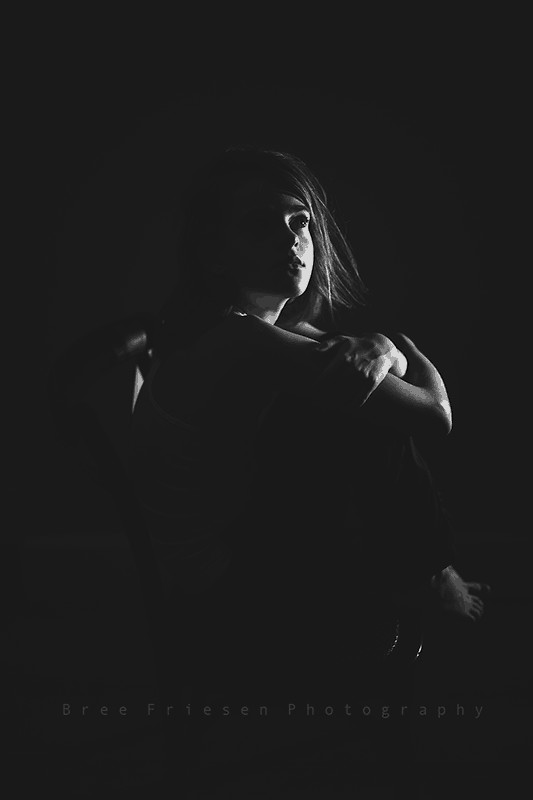
Above & Below: Shooting from Different Angles for Better Photos
In regards to children’s photography, we are often advised to shoot at eye level. We are warned of all the dangers of shooting from above or below them. More specifically, shooting from above a child can make the subject appear weak, subservient and small. Alternatively, shooting from below can make an image seem angry, intimidating,…

Deep Dive Into The World of Tilt Shift Photography
Have you ever seen a tilt shift photo or video? It’s a fascinating photography niche whose effect can be achieved both with a specialized lens and during the editing process. Seeing a tilt shift video or photo makes you feel like a giant overlooking a miniature world. Even if you’re seeing a real photo with…
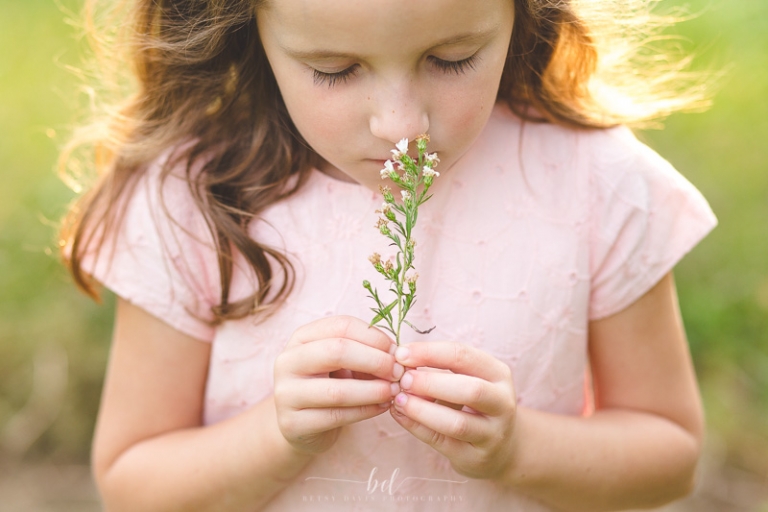
7 Simple Tips to Dramatically Improve Your Photos TODAY
If you are anything like me, you are probably always looking for ways to improve your photos… searching to find ways to take them to the next level. Sound familiar? We jump along from webinar to webinar, blog post to blog post, in search of that perfect answer to the question we find ourselves asking:…

Macro Photography: A Beginners Guide to Small Details and Big Fun!
Interested in exploring new worlds with macro photography? Check out our guide to getting those details! There is something inherently magical about macro photography for me. I love making the small big, seeing the previously unnoticed. I can lose myself completely in the minutiae, wandering among lines and shapes and textures of even the most…
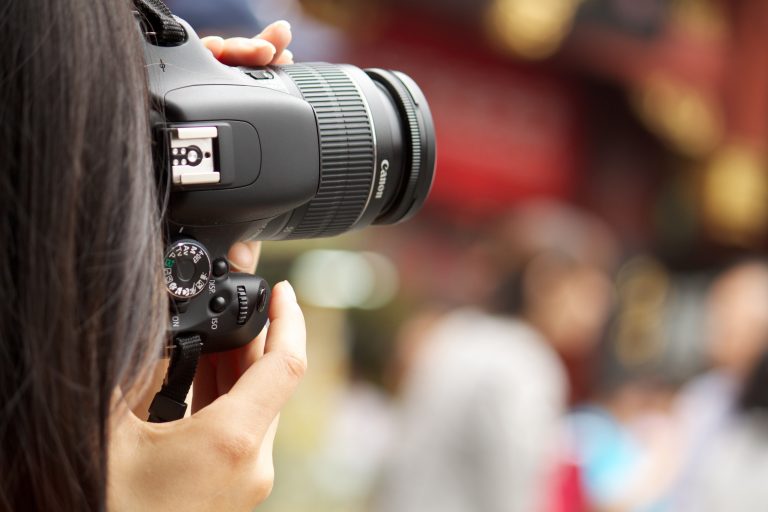
6 Simple Tips for Sharper Photos
Get Sharper Photos FAST With These Easy to Implement Tips for Sharper Photos! If there is ONE thing a photo needs to be, it’s sharp. Unless you’re purposefully aiming for an out of focus, creative look, getting sharper photos is something I think all of us are working towards. And guessing by the number of…
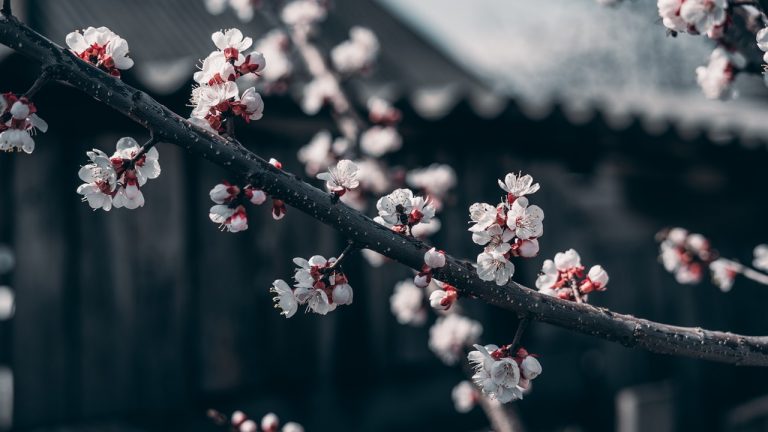
What is Aesthetic Photography? Understanding the Basics.
If you look up aesthetics in a dictionary, you will find a definition that focuses on the artistic value of a work of art, or that discusses the characteristics of things we find beautiful and pleasing. The concept of aesthetics is central to photography. Here is what you need to know about aesthetic photography, why…
- Learn Photography ▾
- Picfair Resources ▾
How to create a photo essay
- Author Picfair
- Level Intermediate
- Reading Time 8 minutes
Cover images by James Gourley
Create a meaningful set of images by producing a photo essay or story
A photographic essay is a deeper and more meaningful way to use your photography than a single image tends to be. Typically associated with documentary and news-gathering, a photo essay doesn’t necessarily have to follow those genres, but can be used as a way to tell a longer or more in-depth story about all manner of subjects. Creating a photo essay however is about more than just taking a set of images and presenting them as one package. They require more forethought, planning and editing than many other forms of photography, but the results are often more rewarding, too. Follow our guide below if it’s something you’d like to consider putting together.
1 Find a story
The first thing you will need to do is to figure out what you want to do your photo essay on.
"Inspiration can come from anywhere, but a good starting to place is to look at news sources to see if something catches your eye."
Inspiration can come from anywhere, but a good starting to place is to look at news sources to see if something catches your eye. If you’re not sure where to begin, you could start by looking at what’s going on in your local area - if nothing else, it’ll make the practicalities easier. Start jotting down ideas that you can explore and figure out exactly why you want to do it. Try to be as active as you can in discovering what’s going on in the world and eventually something will keep your attention for long enough that it will seem like the right idea.
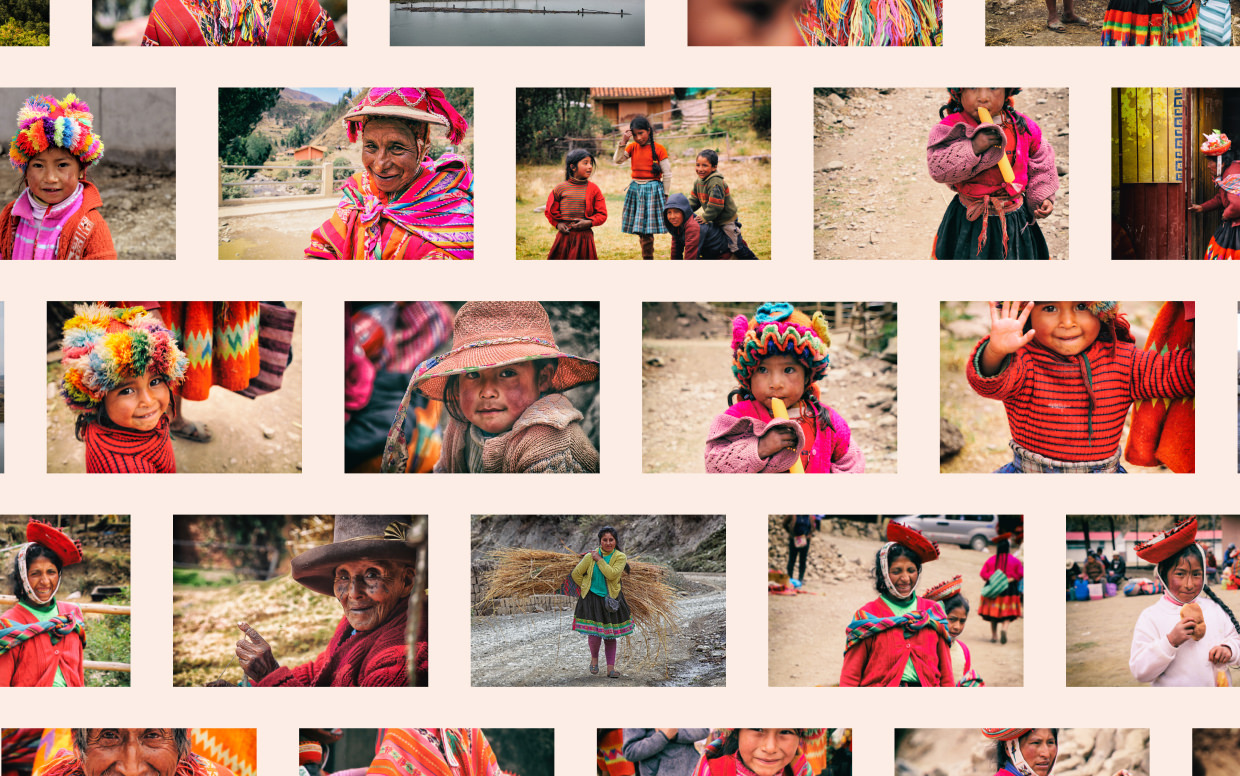
2 Do your research
Next, try and find out as much as you can about whatever it is you want to create your photo story on.
"If you find that others have done photo essays on the same or similar subject, then that’s something you should be aware of."
Importantly, you’ll need to see what else already exists out there - if anything - on your story. If you find that others have done photo essays on the same or similar subject, then that’s something you should be aware of. That’s not to say that you can’t also do one, but it pays to be prepared so that you can perhaps approach it in a different way. You’ll also need to do some research into the practicalities that will be required to help you along the way. You’ll need to look into people you should be contacting, how you will get to the destination (if it’s not local), any requirements you need for visiting the location, any restrictions on what you can and cannot shoot and so on. Doing as much research ahead of time as possible will make the project run smoothly when it comes to actually shooting it.
.jpg)
3 Make a structured plan
Once your research is complete, it’s time to make a detailed and structured plan about how you’re going to go about shooting your photo essay. It doesn’t have to be completely rigid so as to disallow flexibility, but sorting out shoot times, shoot dates, shoot locations will give you something to work with, even if things eventually go off plan. Some photo essays can be shot in an afternoon, others might take several months or even years to complete. Having an idea of how long you want to spend on a particular project can help focus your mind and give you an end date for when you might want to publish the essay. It’s also useful to tell subjects and those involved with the shoot a rough timeline of events. You might find it helpful to organise everything together in one easily accessible place - such as online calendars and spreadsheets, so you can quickly refer to anything you need to.

4 Tell a story
Your photo essay needs to be more than just a set of images on a similar theme.
"...including some introductory or contextualising shots before you get into the heart of the subject matter is a good approach."
Think of it exactly like a story, which usually requires a beginning, a middle and an end. That’s a very simplistic way of putting it, but photographically, including some introductory or contextualising shots before you get into the heart of the subject matter is a good approach. There might not necessarily be a neat “resolution” to whatever story you’re trying to tell, and it might not always be a happy ending, but having that at least in your mind as you go along can help to create a neatly-packaged story that has a definite and well-constructed narrative.

5 Stick with a cohesive style
Exactly how you’re going to shoot your photo essay is entirely up to you, but in order for your story to have a cohesive look, it’s usually best if you stick to the same style throughout.
"With a photo essay, you want the images to hang extremely well together as a set, so keeping things consistent will help you do that..."
That could be as simple as not mixing black and white and colour, always using a particular lens, always shooting in a particular way, or even applying the same post-processing techniques to the finished shots. With a photo essay, you want the images to hang extremely well together as a set, so keeping things consistent will help you do that - that is, unless you’re actively trying to use disparate styles as an artistic or storytelling technique.
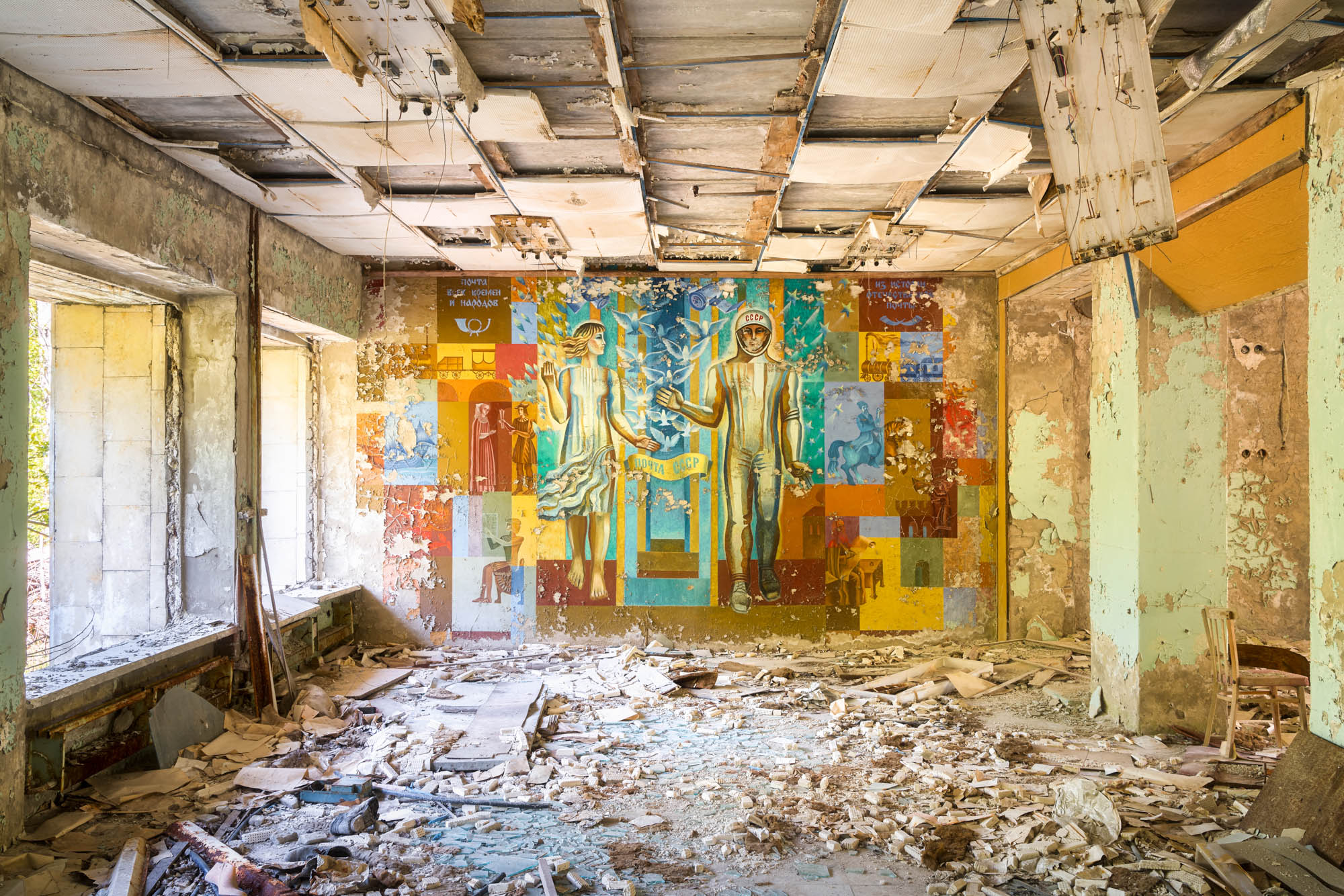
5 Create a strong edit
The chances are that in the process of creating your photo essay, you will have shot dozens, if not hundreds of images.
"It can help to step away from your essay for at least a few days if you can to give yourself some distance and perspective - don’t be afraid to be brutal and keep your final selection down to only those that are the strongest or the best."
For the final edit of your photo story, you need to make sure that the images selected to appear are the strongest of the set, with each adding something unique to the finished story. Try to avoid “padding out” your story with too many fillers, even if you think they are strong images on their own. It’s a good idea to avoid too much repetition, and here again you should look to include images that create a strong story arc with a defined beginning, middle and end. It can help to step away from your essay for at least a few days if you can to give yourself some distance and perspective - don’t be afraid to be brutal and keep your final selection down to only those that are the strongest or the best. There’s no defined number for how many images should be included in a final story, but as a general rule, you’ll probably want it to be under 20 for the most impact.

6 Ask for input
It’s very easy to get so close to your subject and your images that you become blind to any flaws in them, or the structure of your story. Asking for advice and input from somebody you trust can help to tighten up your story even further.
"Asking for advice and input from somebody you trust can help to tighten up your story even further."
In certain situations, it can be helpful to ask the subject of the photographs themselves what they think, to make it more of a collaborative process - but you should be able to determine whether that’s appropriate on a case-by-case basis. If you have any contacts who are photographers, editors or publishers, asking them to cast an eye over your finished story is a good idea, too.
7 Add some text
It can be a good idea to add some text or individual captions for a photo essay, to give some background information and context to whatever is shown in the pictures. If you’re not a writer, try to keep it as basic as possible - including things such as names, locations and dates. A short introduction to the piece to give some background information is useful, too. Ask somebody you trust to check it over for sense, clarity and mistakes.
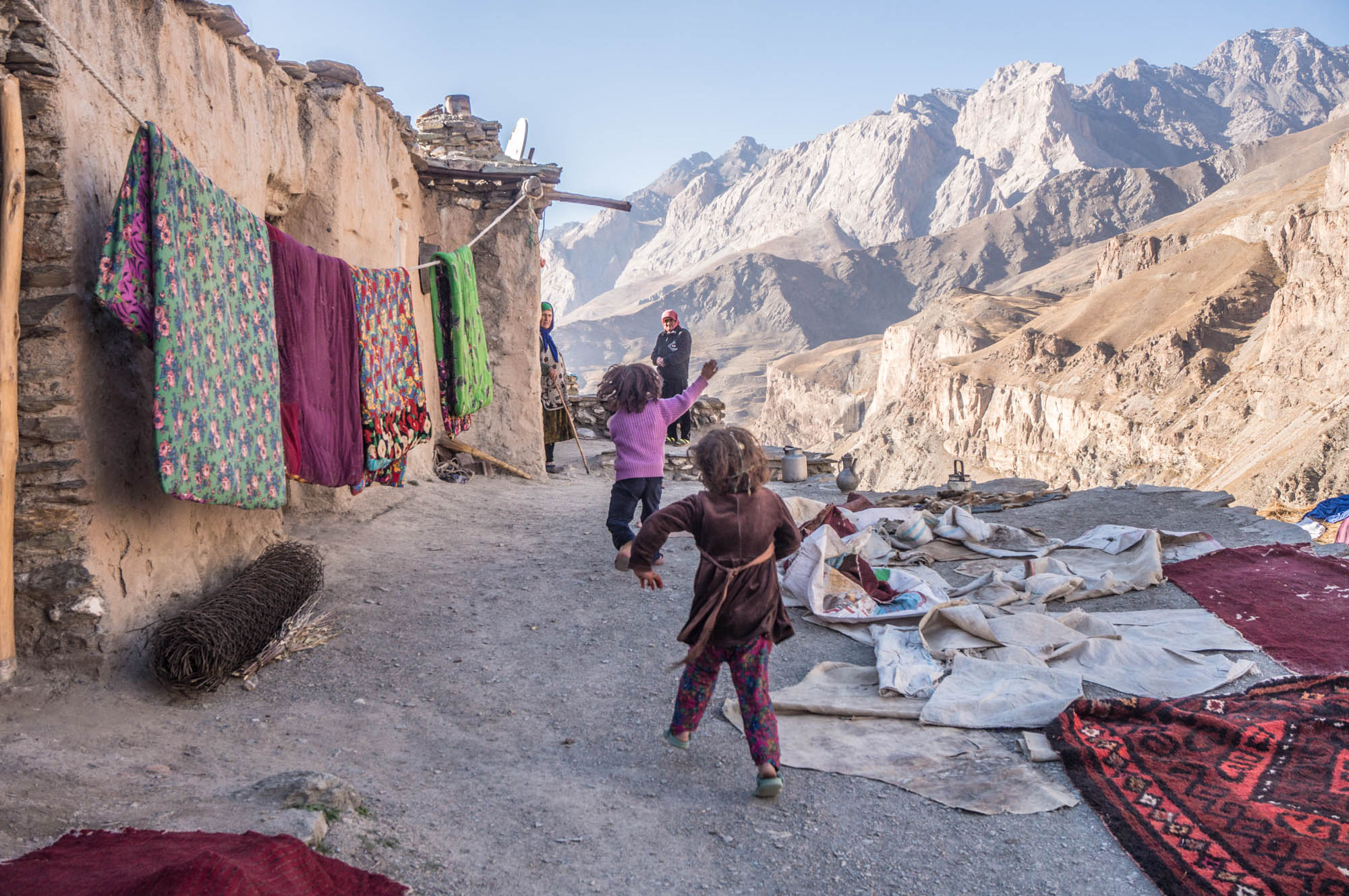
8 Get the story seen
Once your story is complete and you’re happy with it, the next stage is to get it seen - also known as, the hard part.
"Once your story is complete and you’re happy with it, the next stage is to get it seen - also known as, the hard part."
A sensible first step is to create an album on your Picfair store which is dedicated to your photo essay. That way, anybody who is looking for that particular piece won’t have to wade through all of your other work to find it. You can then start sending out information about the work to editors and publishers, including a link to the album on your Picfair page as an easy way for them to look at it.

Editor's tip: If you're not sure where to begin with pitching to publishers, be sure to check our how to pitch guide .

Expertly crafted guides and tutorials brought to you directly from the Team Picfair.
Start your own photography store with a beautiful and customisable showcase for your photos, complete with all the tools you need to sell your images as prints & digital downloads. OFFER: Save 50% on Picfair Plus with code UPGRADE-50

- View by: Authors
- Guide: Selling your Photography
- Share full article
Advertisement
Supported by
PICTURE PROMPTS
144 Picture Prompts to Inspire Student Writing
A school year’s worth of short, accessible image-driven posts that invite a variety of kinds of writing.

By The Learning Network
We’ve been publishing our Picture Prompts series four days a week since 2016. These short, accessible, image-driven prompts invite students to create short stories, poems and memoirs; share experiences from their lives; analyze illustrations, graphs and charts; and weigh in on hot-button issues.
Here, we’ve rounded up all the Picture Prompts we published for the 2019-20 school year and organized them by the type of writing they ask students to do. You can find even more in our roundups for the 2016-17 , 2017-18 and 2018-19 school years. That’s over 600 prompts in all. And many are still open for comment by students 13 and up.
To learn how you can use Picture Prompts to build literacy skills, promote critical thinking, spark discussion and foster creativity in your classroom — physical or virtual — watch our on-demand webinar, “ A Picture Prompt Is Worth a Thousand Words .” For dozens more ideas, see our lesson plan, “ How to Teach With Our Picture Prompts (and Other Times Images) .”
If you use this feature with your students, or if you have other ideas for how to use photos, illustrations and graphics to encourage writing, let us know in the comments.
What story does this image inspire for you?
Trapped Inside Wilderness Wayfaring Magical Chores I’m Sorry Dollar Bills Dinosaurs Endless Conversation Looking Back Social Distancing Vibrant Youth Fake Ice United States of Love Over the Falls Marching Band Heavy Head Night Circus Submerged Subway Ride Subway Balloons Under the Ice Resourceful Raccoon Calendar Vivid Voices Writing a Novel Passport Scramble Racing Pug Castle on a Hill Clowns Travel In the Hallway Striking Out Meeting in the City
Share experiences from your own life.
Collect Them All The Stories Maps Can Tell Strange Times, Strange Dreams Songs of Hope Drawing Ramadan in Isolation Across Divides Instagram Challenges Book Updates Funny Flicks Stuck in Paradise Pandemic Projects Home Cooking Your Learning Space Empty Spaces Helpers Favorite Flops St. Patrick’s Day Birthdays The Agony of Defeat Alligators in the Sewers In Memoriam Sibling Dynamics Slumber Parties Food Favors Super Bowl LIV Morning Moods Lunar New Year Internet Affirmation Pet Keepsakes Stargazing New Year, New You? Last-Minute Shopping Car-Free Travel Feasting With Family Mister Rogers ‘No.’ Dream House Strange Cuisine Multitasking Headless Horseman Music Therapy The Heroic Ideal A Place of Solace Pet Pampering Notes of Lavender Neighborhood Celebrations Fashion Idols Tributes Family Cooks Favorite Season Back to School
What do you think this image, chart or cartoon is saying?
‘OK Boomer’ Shadows Open and Shut Baseball Eyeballs Protesting Carrying the Weight Music Notes Flickering Sign Helping Hands Brick Wall Inside a Book Talking and Listening Maze Credit and Blame Newspaper City Pack of People ‘A 📖 of Two 🏙’ Head Spinning You Love You, Bro The President’s Tweets Split Reflections Forest in a Stadium Chasing ‘They’ Missiles, Hummers and Tanks Looking Over the Edge
What’s your opinion on this issue?
Masks The Front Page Teenage Drivers Graduation in a Pandemic Most Challenged Books Brady’s Big Move Mascot Working From Home Mall Rats ‘Bracelet of Silence’ Optimism Government Buildings Valentine’s Day Prizewinning Poodle Library Books Oscar Nominations 2020 Hologram Musicians Baby Yoda Hit Holiday Songs 2019 in Pictures World’s Big Sleep Out Snow Days Tesla’s ‘Cybertruck’ Fortune Tellers Scooters Everywhere Popeyes Chicken Sandwich World Series Champions Small Talk Big City, Small Town Tipping Summer Hits

Photo Essay
Photo essay generator.

We all know that photographs tell a story. These still images may be seen from various perspectives and are interpreted in different ways. Oftentimes, photographers like to give dramatic meaning to various scenarios. For instance, a blooming flower signifies a new life. Photographs always hold a deeper meaning than what they actually are.
In essay writing , photographs along with its supporting texts, play a significant role in conveying a message. Here are some examples of these kinds of photo-text combinations.
What is Photo Essay? A photo essay is a visual storytelling method that utilizes a sequence of carefully curated photographs to convey a narrative, explore a theme, or evoke specific emotions. It goes beyond individual images, aiming to tell a cohesive and impactful story through the arrangement and combination of pictures.
Photo Essay Format
A photo essay is a series of photographs that are intended to tell a story or evoke a series of emotions in the viewer. It is a powerful way to convey messages without the need for many words. Here is a format to guide you in creating an effective photo essay:
1. Choose a Compelling Topic
Select a subject that you are passionate about or that you find intriguing. Ensure the topic has a clear narrative that can be expressed visually.
2. Plan Your Shots
Outline the story you wish to tell. This could involve a beginning, middle, and end or a thematic approach. Decide on the types of shots you need (e.g., wide shots, close-ups, portraits, action shots) to best tell the story.
3. Take Your Photographs
Capture a variety of images to have a wide selection when editing your essay. Focus on images that convey emotion, tell a story, or highlight your theme.
4. Edit Your Photos
Select the strongest images that best convey your message or story. Edit for consistency in style, color, and lighting to ensure the essay flows smoothly.
5. Arrange Your Photos
Order your images in a way that makes sense narratively or thematically. Consider transitions between photos to ensure they lead the viewer naturally through the story.
6. Include Captions or Text (Optional)
Write captions to provide context, add depth, or explain the significance of each photo. Keep text concise and impactful, letting the images remain the focus.
7. Present Your Photo Essay
Choose a platform for presentation, whether online, in a gallery, or as a printed booklet. Consider the layout and design, ensuring that it complements and enhances the visual narrative.
8. Conclude with Impact
End with a strong image or a conclusion that encapsulates the essence of your essay. Leave the viewer with something to ponder , reflecting on the message or emotions you aimed to convey.
Best Photo Essay Example?
One notable example of a powerful photo essay is “The Photographic Essay: Paul Fusco’s ‘RFK Funeral Train'” by Paul Fusco. This photo essay captures the emotional journey of the train carrying the body of Robert F. Kennedy from New York to Washington, D.C., after his assassination in 1968. Fusco’s images beautifully and poignantly document the mourning and respect shown by people along the train route. The series is a moving portrayal of grief, unity, and the impact of a historical moment on the lives of ordinary individuals. The photographs are both artistically compelling and deeply human, making it a notable example of the potential for photo essays to convey complex emotions and historical narratives.
Photo Essay Examples and Ideas to Edit & Download
- A Day in the Life Photo Essay
- Behind the scenes Photo Essay
- Event Photo Essay
- Photo Essay on Meal
- Photo Essay on Photo walking
- Photo Essay on Protest
- Photo Essay on Abandoned building
- Education photo essay
- Photo Essay on Events
- Follow the change Photo Essay
- Photo Essay on Personal experiences
Photo Essay Examples & Templates
1. narrative photo essay format example.

nytimes.com
2. Student Photo Essay Example

3. Great Depression Essay Example

thshistory.files.wordpress.com
4. Example of Photo Essay

weresearchit.co.uk
5. Photo Essay Examples About Nature

cge-media-library.s3.ca-central-1.amazonaws.com
6. Travel Photo Example

theguardian.com
7. Free Photo Essay Example

vasantvalley.org
Most Interesting Photo Essays of 2019
Now that you are educated with the fundamentals of photo essays, why not lay eyes on some great photo essays for inspiration. To give you a glimpse of a few epitomes, we collected the best and fascinating photo essays for you. The handpicked samples are as follows:
8. Toys and Us

journals.openedition.org
This photo essay presents its subject which is the latest genre of photography, toy photography. In this type of picture taking, the photographer aims to give life on the toys and treat them as his/her model. This photography follows the idea of a toy researcher, Katrina Heljakka, who states that also adults and not only children are interested in reimagining and preserving the characters of their toys with the means of roleplay and creating a story about these toys. This photo essay is based on the self-reflection of the author on a friend’s toys in their home environment.
9. The Faces of Nature Example

godandnature.asa3.org
This photo essay and collection caters the creativity of the author’s mind in seeing the world. In her composition, she justified that there are millions of faces that are naturally made that some of us have not noticed. She also presented tons of photos showing different natural objects that form patterns of faces. Though it was not mentioned in the essay itself, the author has unconsciously showcased the psychological phenomenon, pareidolia. This is the tendency to translate an obscure stimulus that let the observer see faces in inanimate objects or abstract patterns, or even hearing concealed messages in music.
10. The Country Doctor Example

us1.campaign-archive.com
This photo essay depicts the medical hardships in a small rural town in Colorado called Kremling. For 23 days, Smith shadowed Dr. Ernest Ceriani, witnessing the dramatic life of the small town and capturing the woeful crisis of the region. The picture in this photographic essay was photographed by Smith himself for Life magazine in 1948 but remained as fascinating as it was posted weeks ago.
11. New York City Coffeehouses

lens.blogs.nytimes.com
Café Latte, cappuccino, espresso, or flat white—of course, you know these if you have visited a coffee shop at least once. However, the photographer of this photo essay took it to a whole new level of experience. Within two to three days of visiting various coffee places, Mr. Gavrysh stayed most of his day observing at the finest details such as the source of the coffee, the procedure of delivering them, and the process of roasting and grounding them. He also watched how did the baristas perfect the drinks and the reaction of the customers as they received their ordered coffee with delights in their faces. Gavrysh did not mean to compose a coffeehouse guide, but to make a composition that describes modern, local places where coffee is sipped and treated with respect.
12. Hungry Planet: What The World Eats

13. Photo Essay Example

cah.utexas.edu
14. Photo Essay in PDF

condor.depaul.edu
15. Sample Photo Essay Example

colorado.edu
16. Basic Photo Essay Example

adaptation-undp.org
17. Printable Photo Essay Example

One of the basic necessity of a person to live according to his/her will is food. In this photo essay, you will see how these necessities vary in several ways. In 2005, a pair of Peter Menzel and Faith D’ Aluisio released a book that showcased the meals of an average family in 24 countries. Ecuador, south-central Mali, China, Mexico, Kuwait, Norway, and Greenland are among the nations they visited. This photo essay is written to raise awareness about the influence of environment and culture to the cost and calories of the foods laid on the various dining tables across the globe.
Photo essays are not just about photographic aesthetics but also the stories that authors built behind those pictures. In this collection of captivating photo essays, reflect on how to write your own. If you are allured and still can’t get enough, there’s no need for you to be frantic about. Besides, there are thousands of samples and templates on our website to browse. Visit us to check them all out.
What are good topics for a photo essay?
- Urban Exploration: Document the unique architecture, street life, and cultural diversity of urban environments.
- Environmental Conservation: Capture the beauty of natural landscapes or document environmental issues, showcasing the impact of climate change or conservation efforts.
- Everyday Life in Your Community: Showcase the daily lives, traditions, and activities of people in your local community.
- Family Traditions: Document the customs, rituals, and special moments within your own family or another family.
- Youth Culture: Explore the lifestyle, challenges, and aspirations of young people in your community or around the world.
- Behind-the-Scenes at an Event: Provide a backstage look at the preparation and execution of an event, such as a concert, festival, or sports competition.
- A Day in the Life of a Profession: Follow a professional in their daily activities, offering insights into their work, challenges, and routines.
- Social Issues: Address important social issues like homelessness, poverty, immigration, or healthcare, raising awareness through visual storytelling.
- Cultural Celebrations: Document cultural festivals, ceremonies, or celebrations that showcase the diversity of traditions in your region or beyond.
- Education Around the World: Explore the various facets of education globally, from classrooms to the challenges students face in different cultures.
- Workplace Dynamics: Capture the atmosphere, interactions, and diversity within different workplaces or industries.
- Street Art and Graffiti: Document the vibrant and dynamic world of street art, capturing the expressions of local artists.
- Animal Rescues or Shelters: Focus on the efforts of organizations or individuals dedicated to rescuing and caring for animals.
- Migration Stories: Explore the experiences and challenges of individuals or communities affected by migration.
- Global Food Culture: Document the diversity of food cultures, from local markets to family meals, showcasing the role of food in different societies.
How to Write a Photo Essay
First of all, you would need to find a topic that you are interested in. With this, you can conduct thorough research on the topic that goes beyond what is common. This would mean that it would be necessary to look for facts that not a lot of people know about. Not only will this make your essay interesting, but this may also help you capture the necessary elements for your images.
Remember, the ability to manipulate the emotions of your audience will allow you to build a strong connection with them. Knowing this, you need to plan out your shots. With the different emotions and concepts in mind, your images should tell a story along with the essay outline .
1. Choose Your Topic
- Select a compelling subject that interests you and can be explored visually.
- Consider the story or message you want to convey. It should be something that can be expressed through images.
2. Plan Your Essay
- Outline your narrative. Decide if your photo essay will tell a story with a beginning, middle, and end, or if it will explore a theme or concept.
- Research your subject if necessary, especially if you’re covering a complex or unfamiliar topic.
3. Capture Your Images
- Take a variety of photos. Include wide shots to establish the setting, close-ups to show details, and medium shots to focus on subjects.
- Consider different angles and perspectives to add depth and interest to your essay.
- Shoot more than you need. Having a large selection of images to choose from will make the editing process easier.
4. Select Your Images
- Choose photos that best tell your story or convey your theme.
- Look for images that evoke emotion or provoke thought.
- Ensure there’s a mix of compositions to keep the viewer engaged.
- Sequence your images in a way that makes narrative or thematic sense.
- Consider the flow and how each image transitions to the next.
- Use juxtaposition to highlight contrasts or similarities.
6. Add Captions or Text (Optional)
- Write captions to provide context or additional information about each photo. Keep them brief and impactful.
- Consider including an introduction or conclusion to frame your essay. This can be helpful in setting the stage or offering a final reflection.
7. Edit and Refine
- Review the sequence of your photos. Make sure they flow smoothly and clearly convey your intended story or theme.
- Adjust the layout as needed, ensuring that the visual arrangement is aesthetically pleasing and supports the narrative.
8. Share Your Essay
- Choose the right platform for your photo essay, whether it’s a blog, online publication, exhibition, or print.
- Consider your audience and tailor the presentation of your essay to suit their preferences and expectations.
Types of Photo Essay
Photo essays are a compelling medium to tell a story, convey emotions, or present a perspective through a series of photographs. Understanding the different types of photo essays can help photographers and storytellers choose the best approach for their project. Here are the main types of photo essays:
1. Narrative Photo Essays
- Purpose: To tell a story or narrate an event in a chronological sequence.
- Characteristics: Follows a clear storyline with a beginning, middle, and end. It often includes characters, a setting, and a plot.
- Examples: A day in the life of a firefighter, the process of crafting traditional pottery.
2. Thematic Photo Essays
- Purpose: To explore a specific theme, concept, or issue without being bound to a chronological sequence.
- Characteristics: Centers around a unified theme, with each photo contributing to the overall concept.
- Examples: The impact of urbanization on the environment, the beauty of natural landscapes.
3. Conceptual Photo Essays
- Purpose: To convey an idea or evoke a series of emotions through abstract or metaphorical images.
- Characteristics: Focuses on delivering a conceptual message or emotional response, often using symbolism.
- Examples: Loneliness in the digital age, the concept of freedom.
4. Expository or Informative Photo Essays
- Purpose: To inform or educate the viewer about a subject with a neutral viewpoint.
- Characteristics: Presents factual information on a topic, often accompanied by captions or brief texts to provide context.
- Examples: The process of coffee production, a day at an animal rescue center.
5. Persuasive Photo Essays
- Purpose: To convince the viewer of a particular viewpoint or to highlight social issues.
- Characteristics: Designed to persuade or elicit action, these essays may focus on social, environmental, or political issues.
- Examples: The effects of plastic pollution, the importance of historical preservation.
6. Personal Photo Essays
- Purpose: To express the photographer’s personal experiences, emotions, or journeys.
- Characteristics: Highly subjective and personal, often reflecting the photographer’s intimate feelings or experiences.
- Examples: A personal journey through grief, documenting one’s own home during quarantine.
7. Environmental Photo Essays
- Purpose: To showcase landscapes, wildlife, and environmental issues.
- Characteristics: Focuses on the natural world or environmental challenges, aiming to raise awareness or appreciation.
- Examples: The melting ice caps, wildlife in urban settings.
8. Travel Photo Essays
- Purpose: To explore and present the culture, landscapes, people, and experiences of different places.
- Characteristics: Captures the essence of a location, showcasing its uniqueness and the experiences of traveling.
- Examples: A road trip across the American Southwest, the vibrant streets of a bustling city.
How do you start a picture essay?
1. choose a compelling theme or topic:.
Select a theme or topic that resonates with you and has visual storytelling potential. It could be a personal project, an exploration of a social issue, or a visual journey through a specific place or event.
2. Research and Conceptualize:
Conduct research on your chosen theme to understand its nuances, context, and potential visual elements. Develop a conceptual framework for your photo essay, outlining the key aspects you want to capture.
3. Define Your Storytelling Approach:
Determine how you want to convey your narrative. Consider whether your photo essay will follow a chronological sequence, a thematic structure, or a more abstract and conceptual approach.
4. Create a Shot List:
Develop a list of specific shots you want to include in your essay. This can help guide your photography and ensure you capture a diverse range of images that contribute to your overall narrative.
5. Plan the Introduction:
Think about how you want to introduce your photo essay. The first image or series of images should grab the viewer’s attention and set the tone for the narrative.
6. Consider the Flow:
Plan the flow of your photo essay, ensuring a logical progression of images that tells a cohesive and engaging story. Consider the emotional impact and visual variety as you sequence your photographs.
7. Shoot with Purpose:
Start capturing images with your conceptual framework in mind. Focus on images that align with your theme and contribute to the overall narrative. Look for moments that convey emotion, tell a story, or reveal aspects of your chosen subject.
8. Experiment with Perspectives and Techniques:
Explore different perspectives, compositions, and photographic techniques to add visual interest and depth to your essay. Consider using a variety of shots, including wide-angle, close-ups, and detail shots.
9. Write Descriptive Captions:
As you capture images, think about the accompanying captions. Captions should provide context, additional information, or insights that enhance the viewer’s understanding of each photograph.
What are the key elements of a photo essay?
1. Theme or Topic:
Clearly defined subject matter or theme that unifies the photographs and tells a cohesive story.
2. Narrative Structure:
An intentional narrative structure that guides the viewer through the photo essay, whether chronological, thematic, or conceptual.
3. Introduction:
A strong introduction that captures the viewer’s attention and sets the tone for the photo essay.
4. Captivating Images:
A series of high-quality and visually compelling images that effectively convey the chosen theme or story.
5. Variety of Shots:
A variety of shots, including wide-angle, close-ups, detail shots, and different perspectives, to add visual interest and depth.
6. Sequencing:
Careful sequencing of images to create a logical flow and emotional impact, guiding the viewer through the narrative.
7. Captions and Text:
Thoughtful captions or accompanying text that provide context, additional information, or insights, enhancing the viewer’s understanding.
8. Conclusion:
A concluding section that brings the photo essay to a satisfying close, leaving a lasting impression on the viewer.
Purpose of a Photo Essay
With good writing skills , a person is able to tell a story through words. However, adding images for your essay will give it the dramatic effect it needs. The photographs and the text work hand in hand to create something compelling enough to attract an audience.
This connection goes beyond something visual, as photo essays are also able to connect with an audience emotionally. This is to create an essay that is effective enough to relay a given message.
5 Tips for Creating a Photo Essay
- Don’t be afraid to experiment. Find the right angle and be dramatic with your description, just be creative.
- Pay attention to detail. Chances are, your audience will notice every single detail of your photograph.
- Shoot everything. Behind a single beautiful photo is a hundred more shots.
- Don’t think twice about editing. Editing is where the magic happens. It has the ability to add more drama to your images.
- Have fun. Don’t stress yourself out too much but instead, grow from your experience.
What is a photo essay for school?
A school photo essay is a visual storytelling project for educational purposes, typically assigned to students. It involves creating a narrative using a series of carefully curated photographs on a chosen theme.
How many pictures should be in a photo essay?
The number of pictures in a photo essay varies based on the chosen theme and narrative structure. It can range from a few impactful images to a more extensive series, typically around 10-20 photographs.
Is a photo essay a story?
Yes, a photo essay is a visual storytelling form. It uses a series of carefully curated photographs to convey a narrative, evoke emotions, or communicate a specific message or theme.
What makes a photo essay unforgettable?
An unforgettable photo essay is characterized by a powerful theme, emotionally resonant images, a well-crafted narrative structure, attention to detail, and a connection that leaves a lasting impact on viewers.
Text prompt
- Instructive
- Professional
Create a Photo Essay on the theme of urban exploration.
Discuss the story of a local community event through a Photo Essay.
45 Photo Essay Topics
Most academic writing assignments involve just that – writing. But in the case of a photo essay, the assignment becomes one of both writing and photography. A photo essay is simply an essay that uses images instead of (or in addition to) words to tell a story or make a point.
A good photo essay will capture your audience’s attention and tell a story that resonates with them on an emotional level. To create a successful photo essay, there are a few things you should keep in mind.
This detailed guide will walk you through the essential steps of creating a photo essay and provide you with 45 photo essay topics to get you started.
What Is a Photo Essay?
A photo essay is a written piece that uses images to tell a story or make a point. In other words, it’s an essay that depends primarily on visuals rather than text to communicate its message.
Photo essays are usually themed around a particular subject or topic and can be created for a variety of purposes. They can be used to:
- Tell a news story
- Raise awareness about an important issue
- Share a personal experience
- Document a place or event
- Highlight the work of a specific artist or photographer
No matter what the purpose of your photo essay is, there are a few key elements that should be included in order to impact the audience to the best degree.
What Makes a Good Photo Essay?
A good photo essay will have a clear focus, with each image adding something new to the story. It should also be structured to make sense so that the viewer can easily follow along and understand the point you’re trying to make.
When choosing images for your photo essay, be sure to select ones that are high quality and have a consistent theme or style. This will help create a cohesive story that is visually pleasing and easy to follow.
It’s also important to ensure that your images are appropriately captioned and credited, especially if you’re using someone else’s work. This ensures that your photo essay is both accurate and legal.
Steps for Creating a Photo Essay
Creating a photo essay is a process that requires time, patience, and careful planning. Follow these steps to create a successful photo essay:
1. Choose a topic or theme
The first step in creating a photo essay is to choose the topic or theme you want to focus on. This can be anything from a place, an event, or even a person. Once you’ve decided on your subject, it’s time to start brainstorming ideas for your essay.
2. Do your research
If you’re documenting a place or an event, it’s important to do your research beforehand. This will help you understand your subject’s background and give you a better idea of what to include in your essay.
3. Gather your material
Now it’s time to start gathering the material for your essay. This includes both images and text. Remember, if you’re using someone else’s photos, be sure to get their permission first.
4. Choose a format
There are a few different ways you can format your photo essay. The most common is to create a series of images that progress in a linear fashion, such as from left to right or top to bottom.
Another option is to arrange your images more abstractly, such as in a grid or collage. This can help to add visual interest and variety to your essay.
5. Edit your material
Once you have all of your material gathered, it’s time to start editing. This includes both choosing which images to use and writing the accompanying text.
For the images, you’ll want to select those that are the most visually appealing and that best support the story you’re trying to tell. As you edit, also be sure to crop and resize your images as needed.
For the text, you’ll want to write a brief introduction and conclusion, as well as captions for each of your images. The goal is to provide just enough context and information to help viewers understand what they’re seeing.
6. Design your essay
Now it’s time to start putting your photo essay together. If you’re using a linear format, begin by arranging your images in the order you want them to appear. Then, add the accompanying text.
If you’re using a more creative format, start by playing around with different ways to arrange your images. Then, add the text once you’ve settled on a design you like.
7. Finalize and Hand it in
Once you’ve designed your photo essay, it’s time to finalize it and hand it in. Be sure to proofread the text for any errors and check the images to ensure they’re properly captioned. It is highly recommended to use a professional printing service to print your photo essay to ensure the best possible quality.
Understanding how to create a photo essay is only half the battle. The other half is finding a topic that you’re passionate about that will also interest your audience. To help get you started, here are 45 ideas for photo essay topics:
Photo Essay Topics About Places
- Your hometown
- A nearby city or town
- A favorite vacation spot
- An interesting landmark
- A place from your childhood
- A hidden gem in your town
- The most beautiful place you’ve ever been
- The most interesting place you’ve ever been
- The strangest place you’ve ever been
- A place that is significant to you for personal reasons
- A place that is significant to your family
- A place with a lot of history
- A place that is in danger of disappearing
Photo Essay Topics About Events
- A sporting event
- A music festival
- A parade or procession
- A protest or demonstration
- An annual celebration in your town
- A once-in-a-lifetime event that you witnessed
- An event that had a significant impact on you
- An event that had a significant impact on your community
- An event that is widely considered to be positive
- An event that is widely considered to be negative
- A controversial event
- A natural disaster
- A man-made disaster
Photo Essay Topics About People
- The people in your neighborhood
- The people at your job
- Your family
- Your friends
- The elderly
- A group of people with a common interest or hobby
- A group of people from a different culture than your own
- A group of people who are disadvantaged or marginalized in some way
- A group of people who are often misunderstood
- Celebrities
- Politicians
- Everyday people
Photo Essay Topics About Concepts
A photo essay is an interesting assignment that can help you express your creativity while also teaching you how to pay attention to detail, tell a story, and edit images. If you follow the steps outlined in this article, you’ll be well on your way to creating a successful photo essay.
Related Posts
- 140 Hamlet Essay Topics
- 160 Climate Change Essay Topics
- 170 Ethics Essay Topics
- 110 Music Essay Topics
- 130 Problem Solution Essay Topics
Categories:
- Essay Samples
- Essay Topics
- Essay Writing Guides
Recent posts:
- 160 Satire Essay Topics
- 160 Rhetorical Essay Topics
- 155 Criminal Justice Essay Topics
- 150 Political Essay Topics
- 145 Classification Essay Topics
- 140 Sociology Essay Topics
- 140 Opinion Essay Topics
- 140 Environmental Essay Topics
- 135 Controversial Essay Topics
- 125 Classification and Division Essay Topics
- 120 Literary Essay Topics
- 100 Profile Essay Topics
- 90 Heart of Darkness Essay Topics
- 80 Holocaust Essay Topics
Testimonials

Jump to navigation
- Inside Writing
- Teacher's Guides
- Student Models
- Writing Topics
- Minilessons
- Shopping Cart
- Inside Grammar
- Grammar Adventures
- CCSS Correlations
- Infographics
Get a free Grammar Adventure! Choose a single Adventure and add coupon code ADVENTURE during checkout. (All-Adventure licenses aren’t included.)
Sign up or login to use the bookmarking feature.
- 33 Writing Photo Essays
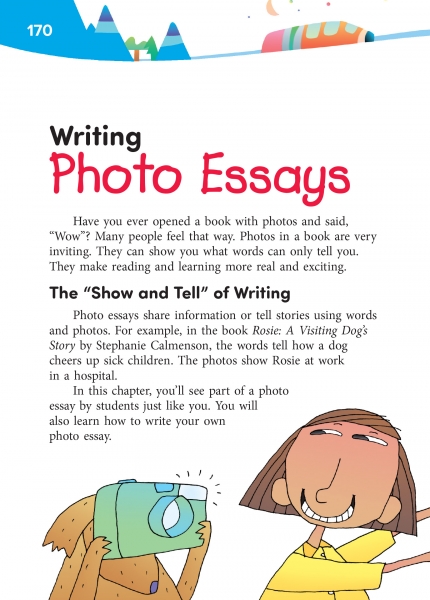
Start-Up Activity
Share appropriate magazines that include photos and text, such as National Geographic or Life . Have students page through the magazines, looking for photos that draw their attention. Ask what they like about the photos. Ask what they can learn from the photos. Ask them to close their eyes and imagine the magazine with no photos, just words.
Lead a discussion about the power of pictures. Help students understand that when they connect words and photos, they can reach their audience in all new ways.
Think About It
“We try to grab pieces of our lives as they speed past us. Photographs freeze those pieces and help us remember how we were.”
—Gene McSweeney
State Standards Covered in This Chapter
- CCSS.ELA-LITERACY.RI.6.1
- CCSS.ELA-LITERACY.RI.6.2
- CCSS.ELA-LITERACY.RI.6.3
- CCSS.ELA-LITERACY.RI.6.7
- CCSS.ELA-LITERACY.W.6.2
- CCSS.ELA-LITERACY.W.6.2.A
- CCSS.ELA-LITERACY.W.6.2.B
- CCSS.ELA-LITERACY.W.6.4
- CCSS.ELA-LITERACY.W.6.5
- CCSS.ELA-LITERACY.W.6.7
- CCSS.ELA-LITERACY.W.6.2.C
- CCSS.ELA-LITERACY.W.6.2.D
- CCSS.ELA-LITERACY.W.6.2.E
- CCSS.ELA-LITERACY.W.6.2.F
- CCSS.ELA-LITERACY.W.6.6
LAFS Covered in This Chapter
Lafs.6.ri.1.1, lafs.6.ri.1.2, lafs.6.ri.1.3, lafs.6.ri.3.7, lafs.6.w.1.2, lafs.6.w.2.4, lafs.6.w.2.5, lafs.6.w.3.7, lafs.6.w.2.6, teks covered in this chapter, 110.22.b.5.f, 110.22.b.8.d, 110.22.b.8.d.i, 110.22.b.6.d, 110.22.b.8.d.iii, 110.22.b.8.f, 110.22.b.10, 110.22.b.11.b, 110.22.b.10.a, 110.22.b.10.b.i, 110.22.b.10.b.ii, 110.22.b.10.b, 110.22.b.10.c, 110.22.b.10.d, 110.22.b.12, 110.22.b.10.e, page 171 from write on track, sample photo essay.
Have volunteers read each paragraph of the sample photo essay. When a photo accompanies a paragraph, stop to discuss the photo. "How does the photo make the ideas clearer?" "What is the photo doing that the text can't do?" Point out to students that each photo must be carefully chosen and positioned, just as the words are carefully chosen and positioned.
Related Resource Tags
Click to view a list of tags that tie into other resources on our site
Page 172 from Write on Track
Ask for a student volunteer to read the paragraph in the middle of the photo essay.
Then ask for other volunteers to describe "what the photo shows you." Help students understand that they can learn a great deal from a photo.
Page 173 from Write on Track
Have a volunteer read the paragraph. Then lead a discussion about what they see. Ask students what the photos are doing that words alone can't do.
Then have a volunteer read the last part of the essay.
Page 174 from Write on Track
Writing a photo essay.
Have your students list interesting people they know who have jobs or hobbies that other students would like to find out about. Students then should pick a topic.
Lead students through the next two sets of tips, having them research their topics and collect photos. If they know the person, they may want to interview him or her and take pictures. If they don't know the person, they may need to do research in books and online.
At the bottom of the page, remind students that the photos they include shouldn't just be "for show." They should communicate ideas that words can't express.
Page 175 from Write on Track
Writing, revising, and editing.
After students have gathered information and images for their photo essays, lead them through "Writing a Draft." Then give them time to put their first drafts together.
When the time comes to revise, have students use the questions under "Revising" to improve their work. Also, have peer readers use these questions to suggest improvements.
After revising, have students check for spelling, capitalization, and punctuation errors.
- 01 Understanding Writing
- 02 One Writer's Process
- 03 Qualities of Writing
- 04 Selecting a Topic
- 05 Collecting Details
- 06 Writing a First Draft
- 07 Revising and Editing
- 08 Publishing Your Writing
- 09 Writing Basic Sentences
- 10 Combining Sentences
- 11 Writing Paragraphs
- 12 Understanding Text Structures
- 13 Writing in Journals and Logs
- 14 Writing Lists
- 15 Making Albums
- 16 Writing Notes and Emails
- 17 Writing Friendly Letters
- 18 Writing Personal Narratives
- 19 Writing Family Stories
- 20 Writing Realistic Stories
- 21 Writing Time-Travel Fantasies
- 22 Writing Tall Tales
- 23 Writing Alphabet Books
- 24 How-To Writing
- 25 Writing Information Essays
- 26 Writing Newspaper Stories
- 27 Writing Persuasive Essays
- 28 Writing Opinion Letters
- 29 Writing Book Reviews
- 30 Making Bookmarks
- 31 Writing Classroom Reports
- 32 Writing Summaries
- 34 Writing Free-Verse Poetry
- 35 Traditional and Playful Poetry
- 36 Writing Plays
- 37 Using the Library
- 38 Using Technology
- 39 Reading to Understand Fiction
- 40 Reading to Understand Nonfiction
- 41 Reading Graphics
- 42 Reading New Words
- 43 Building Vocabulary Skills
- 44 Using Prefixes, Suffixes, Roots
- 45 Becoming a Better Speller
- 46 Learning to View
- 47 Giving Speeches
- 48 Performing Poems
- 49 Telling Stories
- 50 Learning to Interview
- 51 Listening to Learn
- 52 Using Graphic Organizers
- 53 Thinking Clearly
- 54 Thinking Creatively
- 55 Completing Assignments
- 56 Working in Groups
- 57 Taking Tests
- 58 Proofreader's Guide
- 59 Student Almanac
- Skip to primary navigation
- Skip to main content
- Skip to primary sidebar
- Skip to footer
Don't Miss a Post! Subscribe
- Guest Posts

- Educational AI
- Edtech Tools
- Edtech Apps
- Teacher Resources
- Special Education
- Edtech for Kids
- Buying Guides for Teachers

Educators Technology
Innovative EdTech for teachers, educators, parents, and students
30 Creative Picture Writing Prompts
By Med Kharbach, PhD | Last Update: May 27, 2024
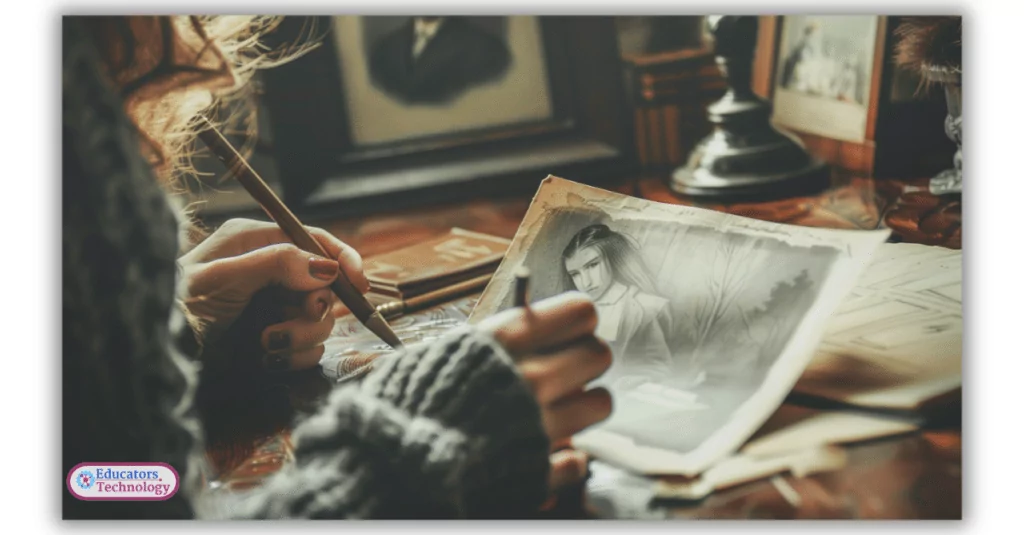
Picture prompt writing, as Carp et al. (2010) define it, is a technique that uses visual stimuli to inspire and guide students’ writing. Picture prompts are an excellent tool for overcoming writer’s block. They provide a visual stimulus that can ignite creativity and help students generate ideas and organize their thoughts, making the writing process more approachable and less intimidating.
In today’s post, I share practical tips for effectively using picture prompts in writing. I will start with some tips on how to best utilize picture prompts, discuss their numerous benefits, and provide examples to get you started. Additionally, I encourage you to read the references at the bottom of this page for a deeper understanding of this powerful educational tool.
All the picture prompts in this post are available for free download in PNG format. You can easily access and use these resources to enhance your teaching and engage your students in creative writing activities.
What Are The Benefits of Picture Writing Prompts?
The importance of picture writing prompts is well documented in the research literature. These visual tools have been shown to significantly enhance student engagement and creativity in writing tasks. By providing a concrete image to spark imagination, picture prompts help students of all ages and proficiency levels generate ideas more easily, organize their thoughts coherently, and express themselves more vividly.
Picture writing prompts offer a range of benefits supported by various studies:
- Enhanced Engagement and Motivation : Picture prompts capture students’ interest and motivate them to write, as they provide a stimulating visual context (Mukramah et al., 2023; Gonchar & Schulten, 2017).
- Improved Idea Formulation : Visual prompts help students generate and organize ideas more effectively, leading to richer and more detailed writing (Mukramah et al., 2023; Carp et al., 2020).
- Support for Diverse Learners : They are particularly beneficial for English Language Learners and students of different age groups, helping them overcome language barriers and express their thoughts clearly (Gonchar & Schulten, 2017).
- Encouragement of Creative Thinking : Picture prompts inspire creative storytelling and imaginative responses, allowing students to explore different narrative possibilities (Gonchar & Schulten, 2017).
- Facilitation of Critical Thinking : Analyzing and interpreting images encourages students to think critically about what they see and how they translate those thoughts into writing (Mukramah et al., 2023; Carp et al., 2020).
- Ease of Use Across Subjects : These prompts can be used in various subjects, not just language arts, to inspire writing related to science, social studies, and more (Gonchar & Schulten, 2017).
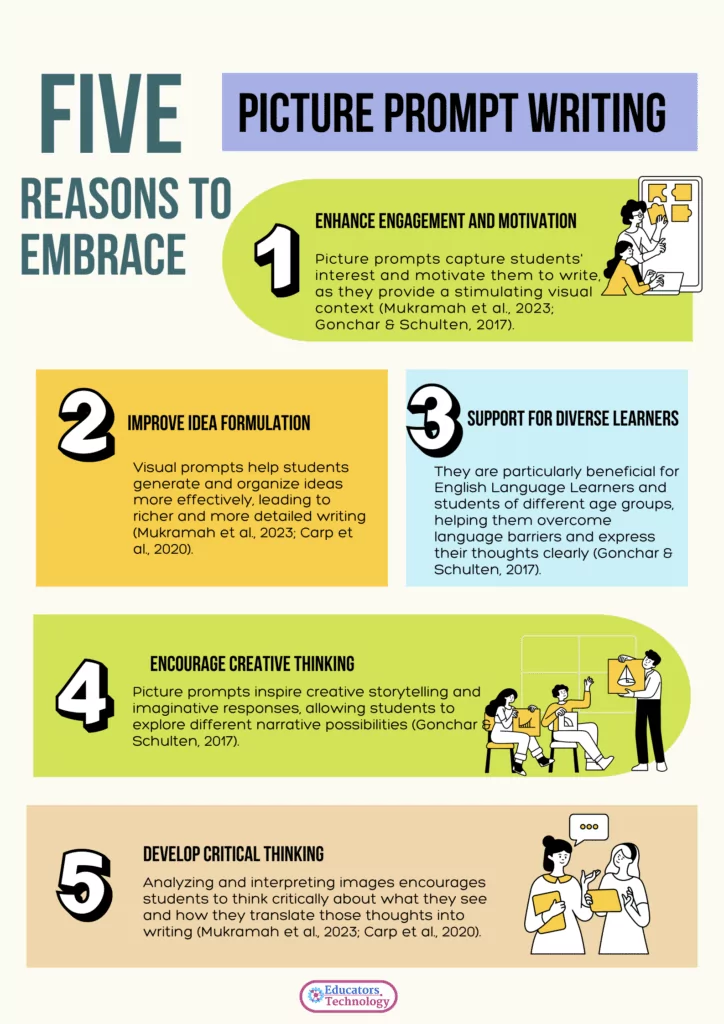
Tips for Using Picture Prompts in Writing
Using picture prompts in writing activities can be incredibly effective in enhancing students’ creativity and writing skills. However, to maximize their benefits, it’s essential to implement them thoughtfully. Below are some tips to help educators effectively use picture prompts in their writing lessons. These suggestions are designed to engage students, stimulate their imagination, and improve their overall writing abilities, making the writing process both educational and enjoyable.
- Select Diverse Images : Use a variety of pictures, including different subjects and settings, to cater to different interests and stimulate diverse ideas.
- Connect to Writing Goals : Choose images that align with specific writing objectives, such as descriptive, narrative, or persuasive writing.
- Encourage Observation : Ask students to closely observe details in the picture, fostering critical thinking and attention to detail.
- Ask Guiding Questions : Provide prompts like “What is happening in this scene?” or “How do you think the characters feel?”
- Incorporate Group Activities : Use picture prompts for group discussions to generate collaborative story ideas.
- Allow Creative Freedom : Encourage students to interpret the images in unique ways, supporting creativity and individual expression.
- Combine with Other Prompts : Mix picture prompts with text or question prompts to provide more structure and support.
- Use for Various Genres : Adapt picture prompts for different genres, such as poetry, essays, and fiction.
- Reflect and Share : Have students share their stories with peers and reflect on how the images influenced their writing.
- Integrate Technology : Utilize digital platforms to display images and enable students to write and share their responses online.
Using Picture Prompt Writing with Students with Special Needs
Picture prompt writing is also beneficial for students with special needs, particularly those with developmental delays such as autism. The research conducted by Carp et al. (2012) found that picture prompts significantly improved the acquisition of auditory-visual conditional discriminations in children with autism, compared to pointing prompts and trial-and-error learning.
The study showed that picture prompts facilitated faster learning and greater accuracy by enhancing the participants’ ability to discriminate relevant features of the comparison stimuli. This suggests that picture prompts are a valuable tool in teaching complex skills to children with developmental delays, supporting their use in educational programs for individuals with autism.
Additionally, Fisher, Kodak, and Moore (2007) demonstrated that picture prompts facilitated the acquisition of auditory-visual conditional discriminations in children with autism. Their study found that picture prompts were more effective than pointing prompts in promoting correct comparison selections.
Carp et al. also cited additional studies that explored various prompting tactics and their effectiveness in teaching complex skills to individuals with developmental disabilities. These findings underscore the importance of incorporating picture prompts into educational strategies to support the learning and development of students with special needs.
Picture Writing Prompts Examples
In this section, I’ve categorized picture writing prompts into three groups to suit different age levels: kids, middle school, and high school. Each category contains tailored prompts designed to engage students at their respective developmental stages.
For Kids (Elementary School)
In this section, we will explore picture writing prompts designed for elementary school students. These prompts are tailored to engage young minds with topics that are both fun and educational. Whether it’s imagining a day in the life of a lion or describing the wonders of a magical garden, these prompts encourage creativity and help children develop their descriptive writing skills.
1. Animals and Nature
Prompt: “Write a story about a day in the life of a lion in the savannah. What adventures does the lion have? Who are its friends?”
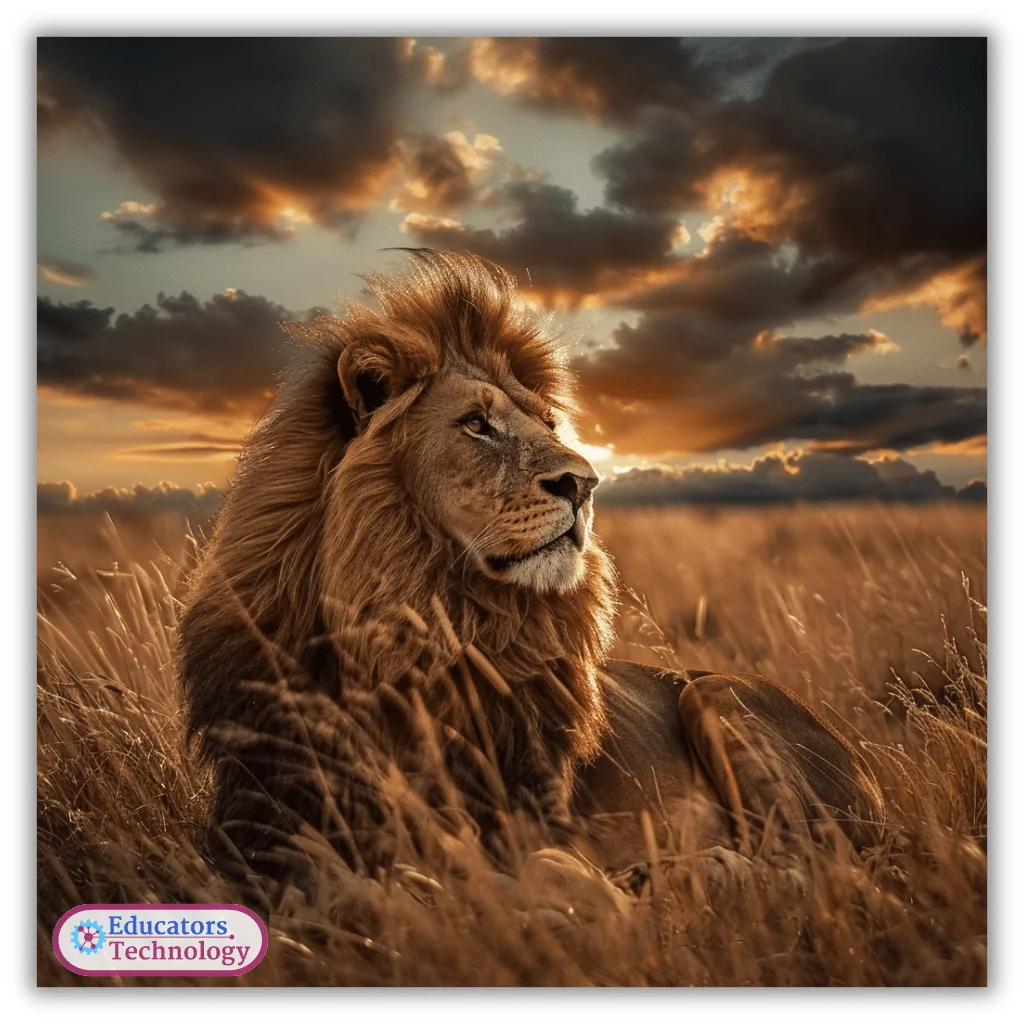
Prompt: “Describe what happens in a magical garden that changes with each season. What do you see, hear, and smell during spring, summer, autumn, and winter?”
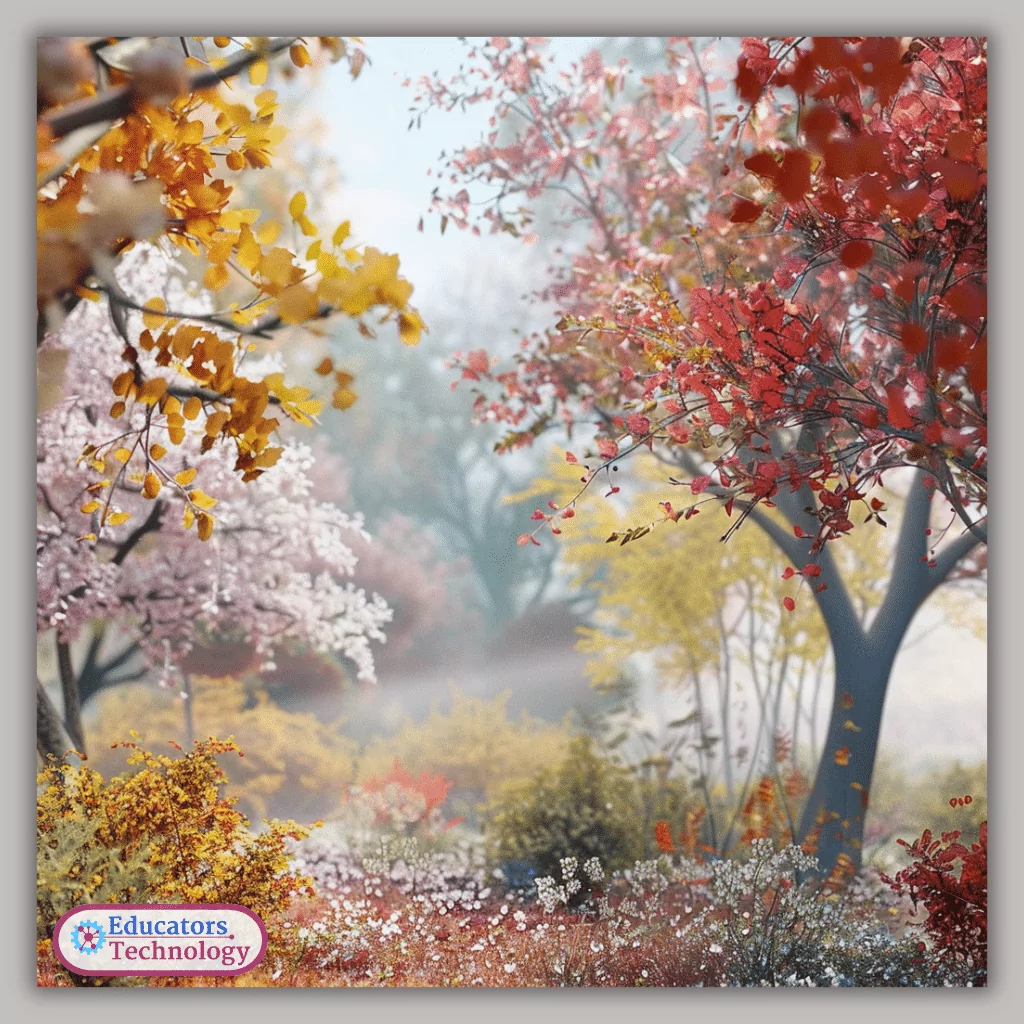
2. Fantasy and Adventure
Prompt: “Imagine you found a dragon egg. Describe what happens when it hatches and the adventures you go on with your dragon.”

Prompt: “Write about a group of friends who find a treasure map and go on a pirate adventure to find the hidden treasure.”
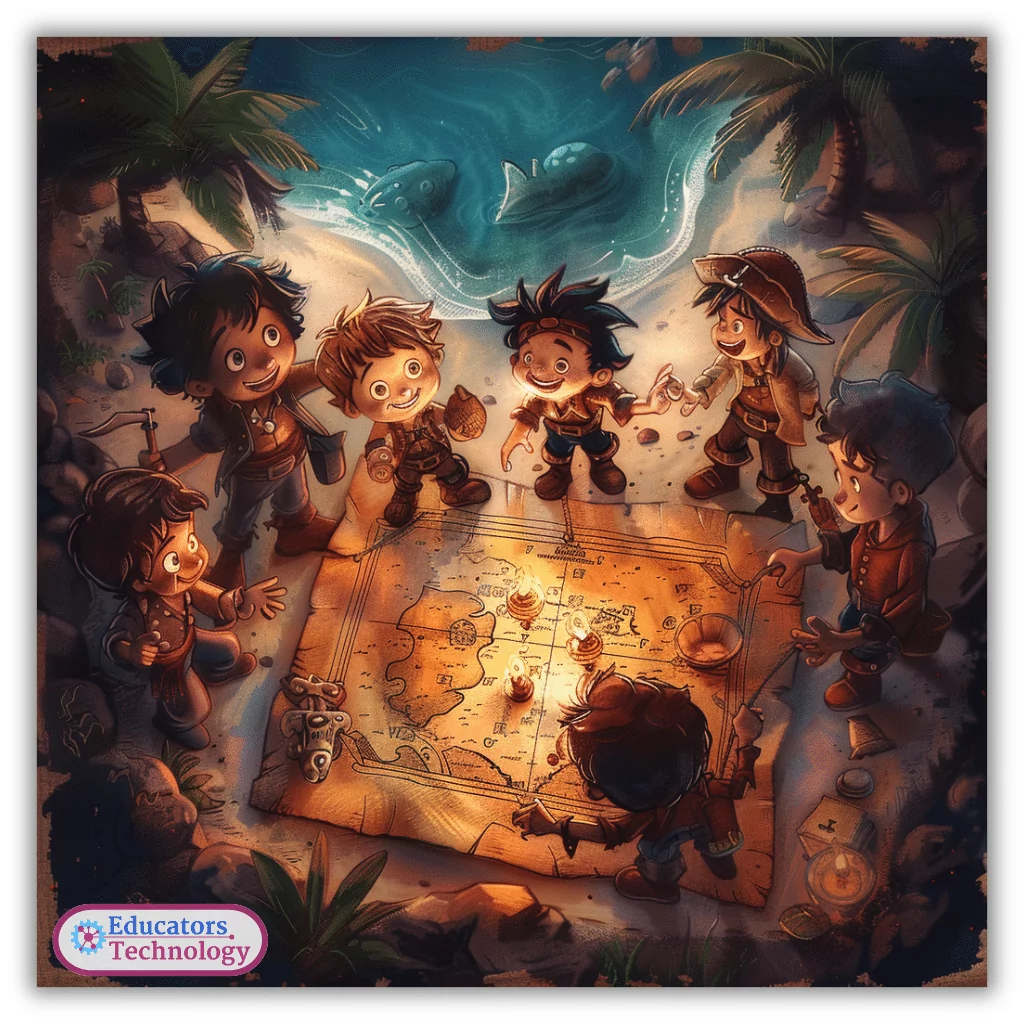
3. Daily Life
Prompt: “Describe a fun day at the park with your friends. What games do you play? What do you see around you?”
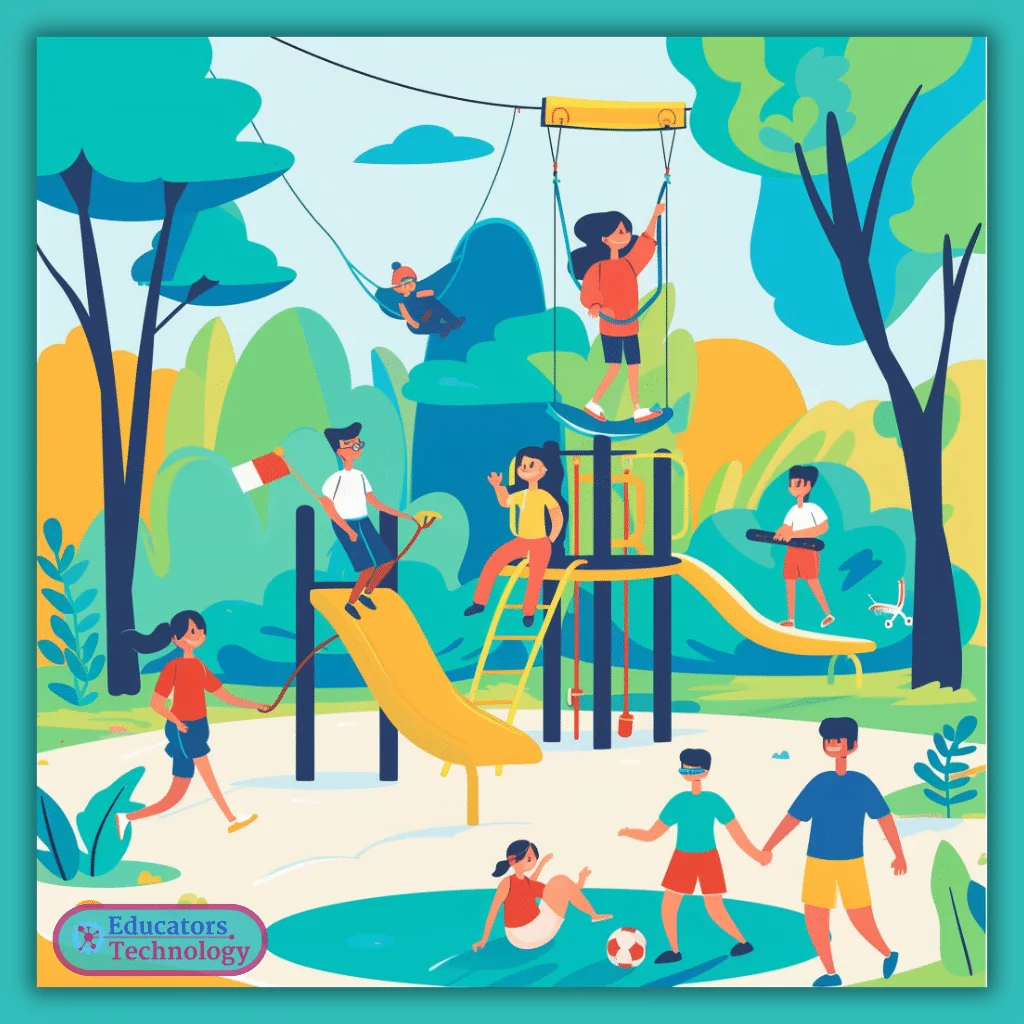
Prompt: “Write a story about your family cooking dinner together. What do you make, and how do you all help?”

4. Holidays and Celebrations
Prompt: “Write about the most exciting Halloween night you can imagine. What costumes do people wear? What surprises do you find?”

Prompt: “Describe a special family tradition during Christmas. What activities do you do together? How does it make you feel?”

5. Community and Helpers
Prompt: “Imagine you spent a day with a firefighter. Describe the different tasks you help with and how you save the day.”
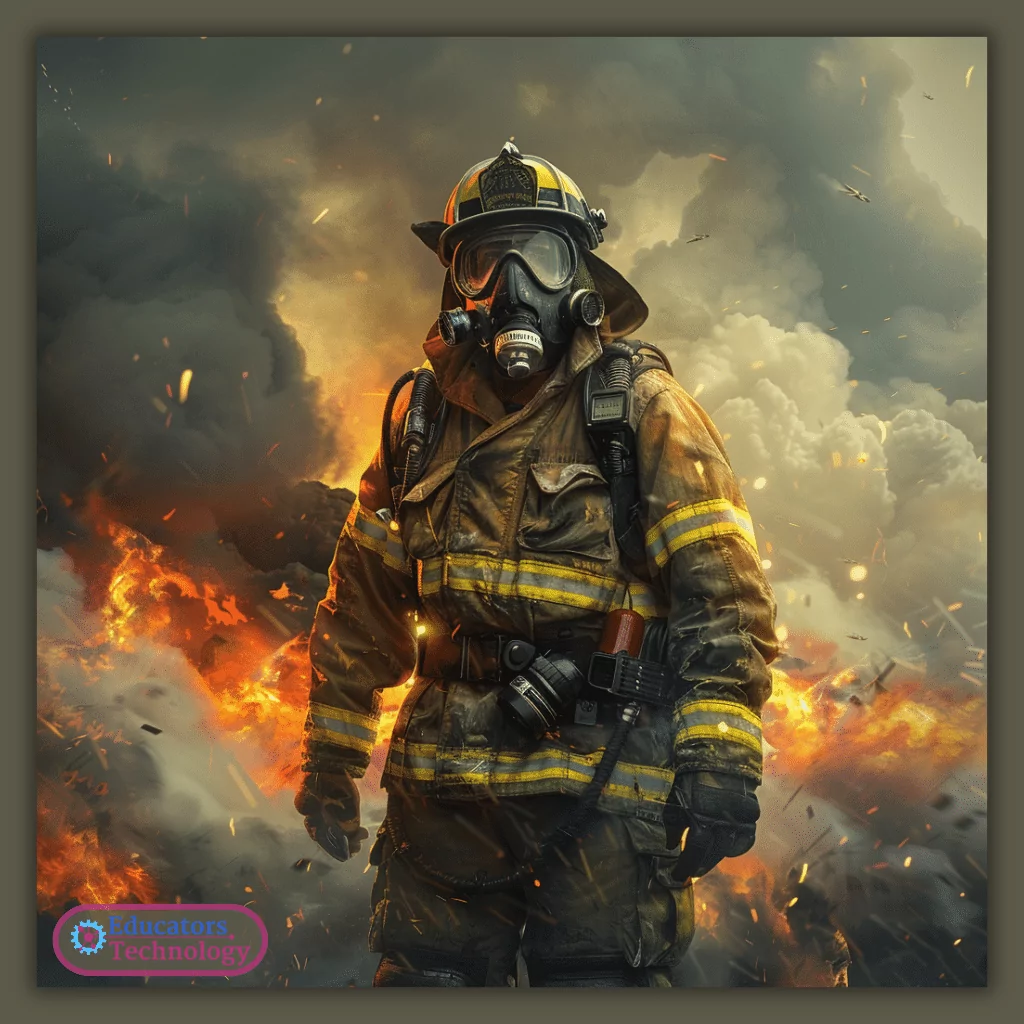
Prompt: “Write a story about a community event like a parade or fair. What different activities and people do you see?”
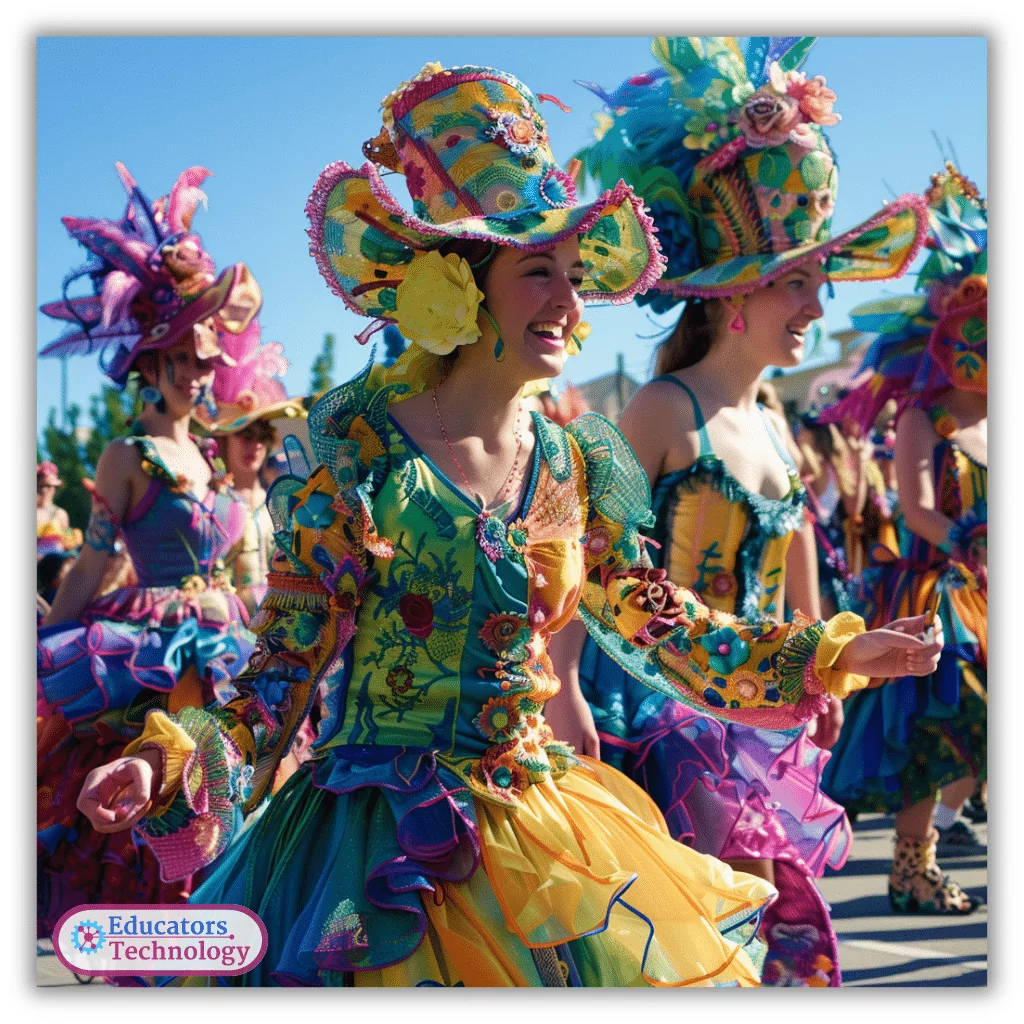
For Middle School
Middle school is a time of expanding horizons and growing curiosity. This section focuses on picture writing prompts that challenge students to think critically and creatively. From historical events to futuristic cities, these prompts are designed to foster deeper thinking and help students make connections between their writing and the world around them.
1. Historical Events
Prompt: “Imagine you are a reporter covering the moon landing. Describe the events as you see them unfold and how people react.”

Prompt: “Write a diary entry from the perspective of a child living in ancient Egypt. What is your daily life like?”

2. Science and Technology
Prompt: “Describe a futuristic city where robots help with everyday tasks. How do people live and interact with these robots?”

Prompt: “Write about an environmental project you would start to help reduce pollution in your city.”
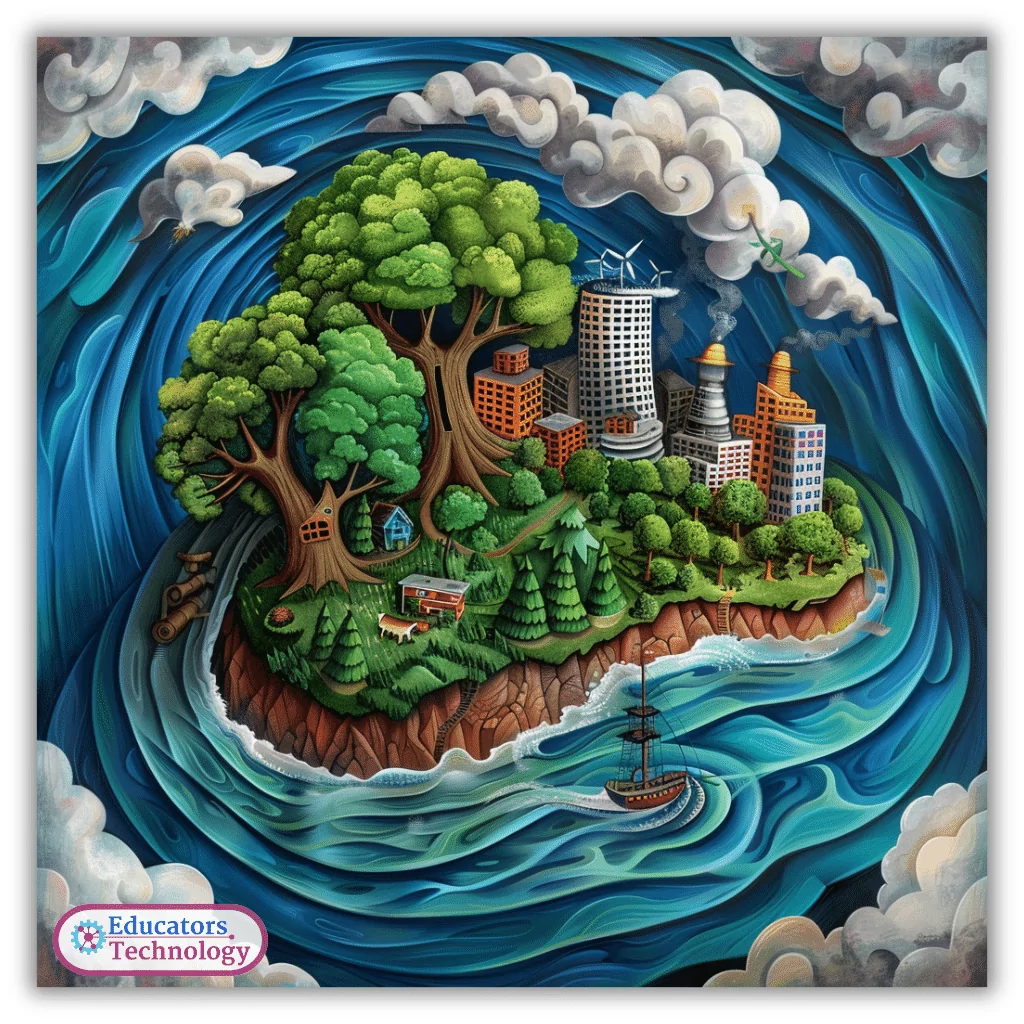
3. Mystery and Suspense
Prompt: “A foggy forest path leads to an abandoned house. Write a story about what you find inside and the mystery you uncover.”
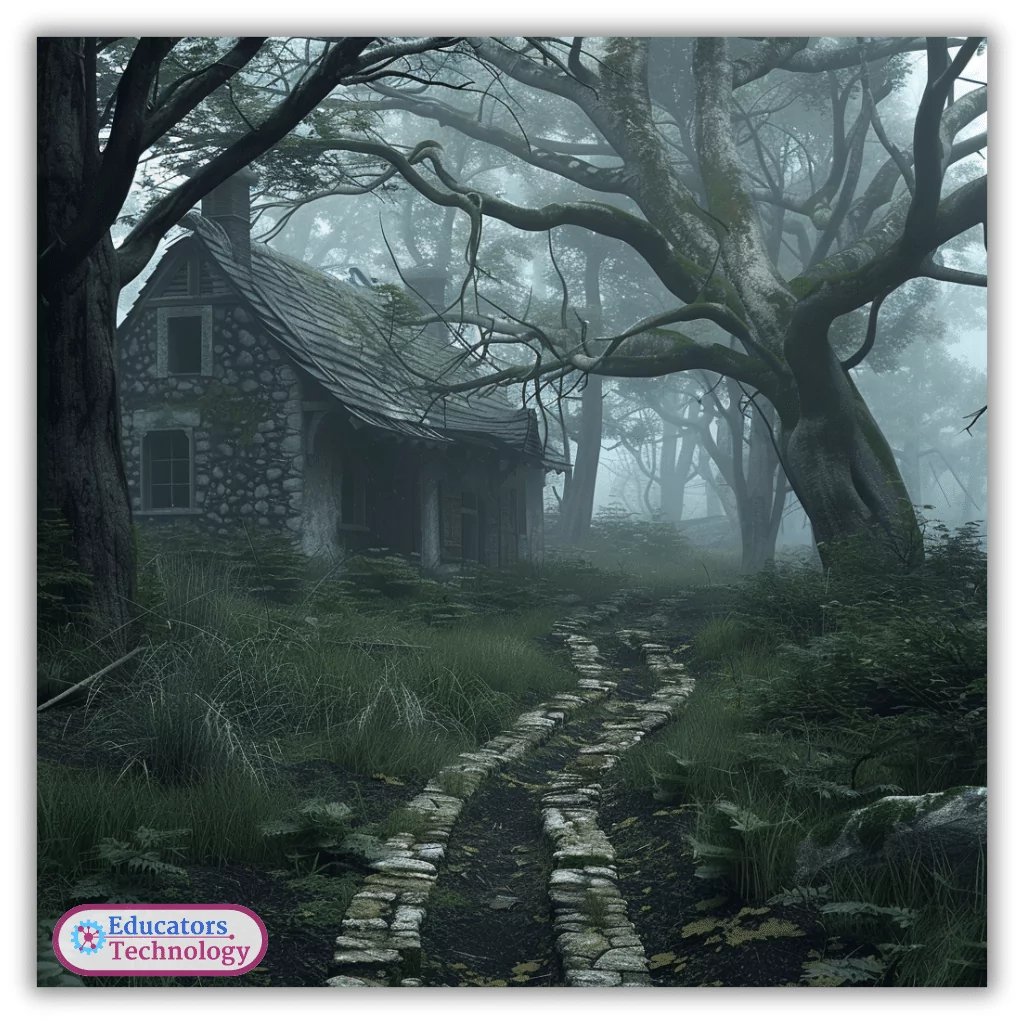
Prompt: “Describe the events of a night when you and your friends decided to explore a rumored haunted house.”
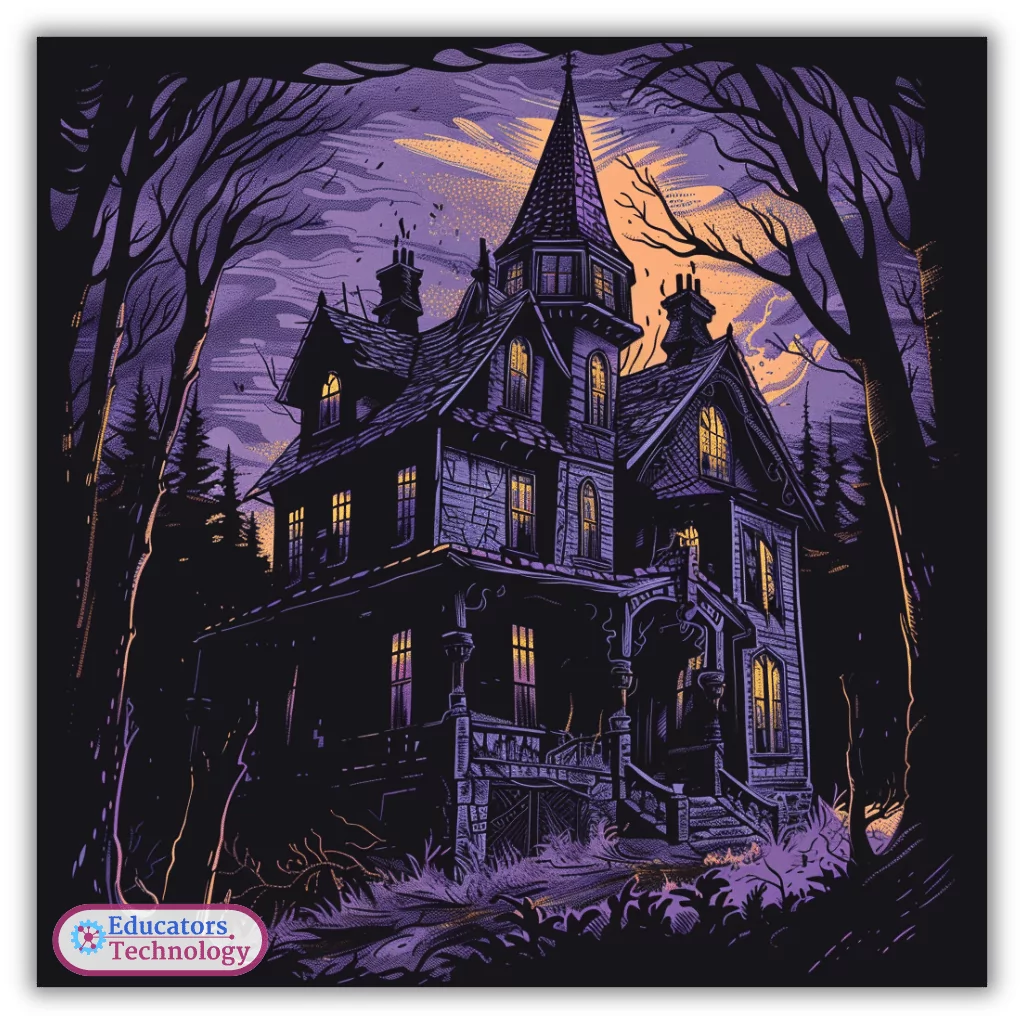
4. Emotions and Relationships
Prompt: “Write about a time when you felt incredibly happy. What caused this happiness, and how did it change your day?”

Prompt: “Describe a friendship that started unexpectedly and became very important to you.”

5. Exploration and Travel
Prompt: “Imagine you are exploring the Great Wall of China. Describe your journey and the sights you see.”
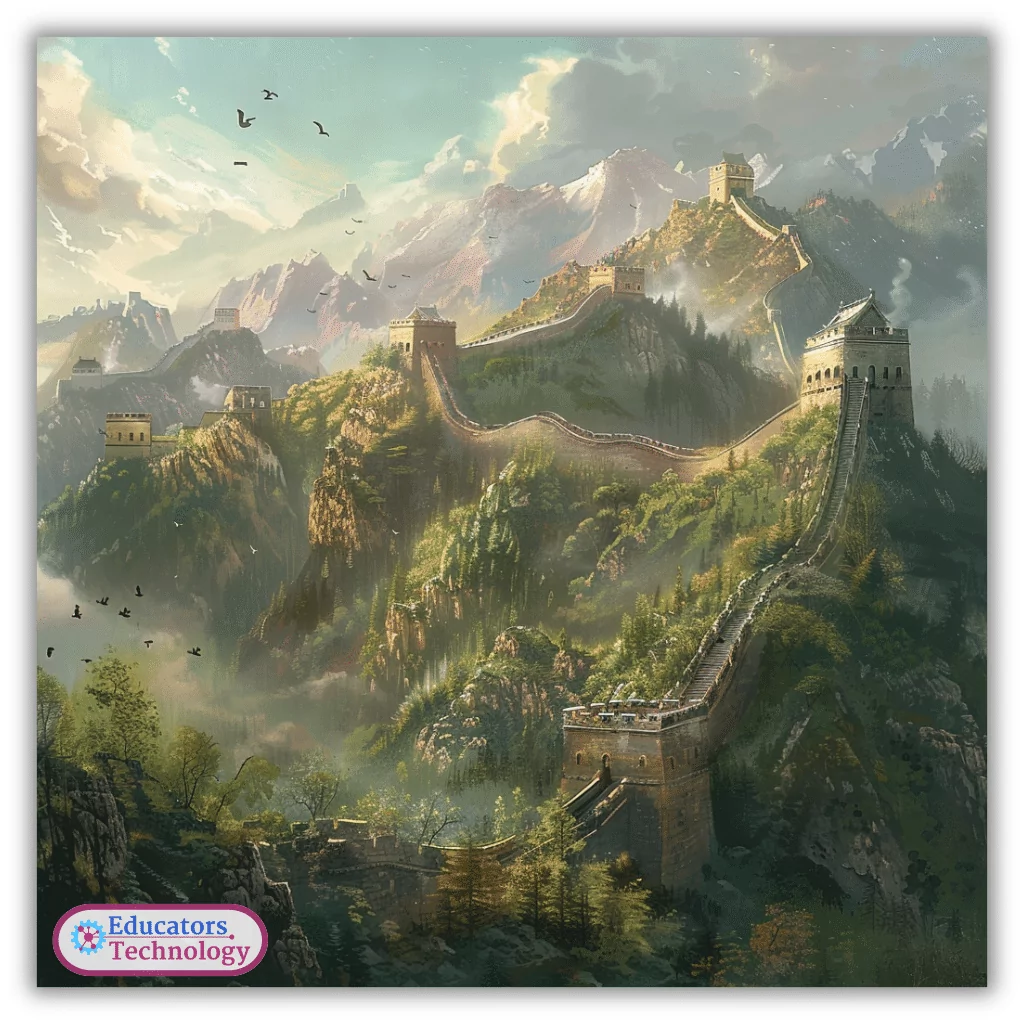
Prompt: “Write a story about a scuba diving adventure where you discover a hidden underwater city.”
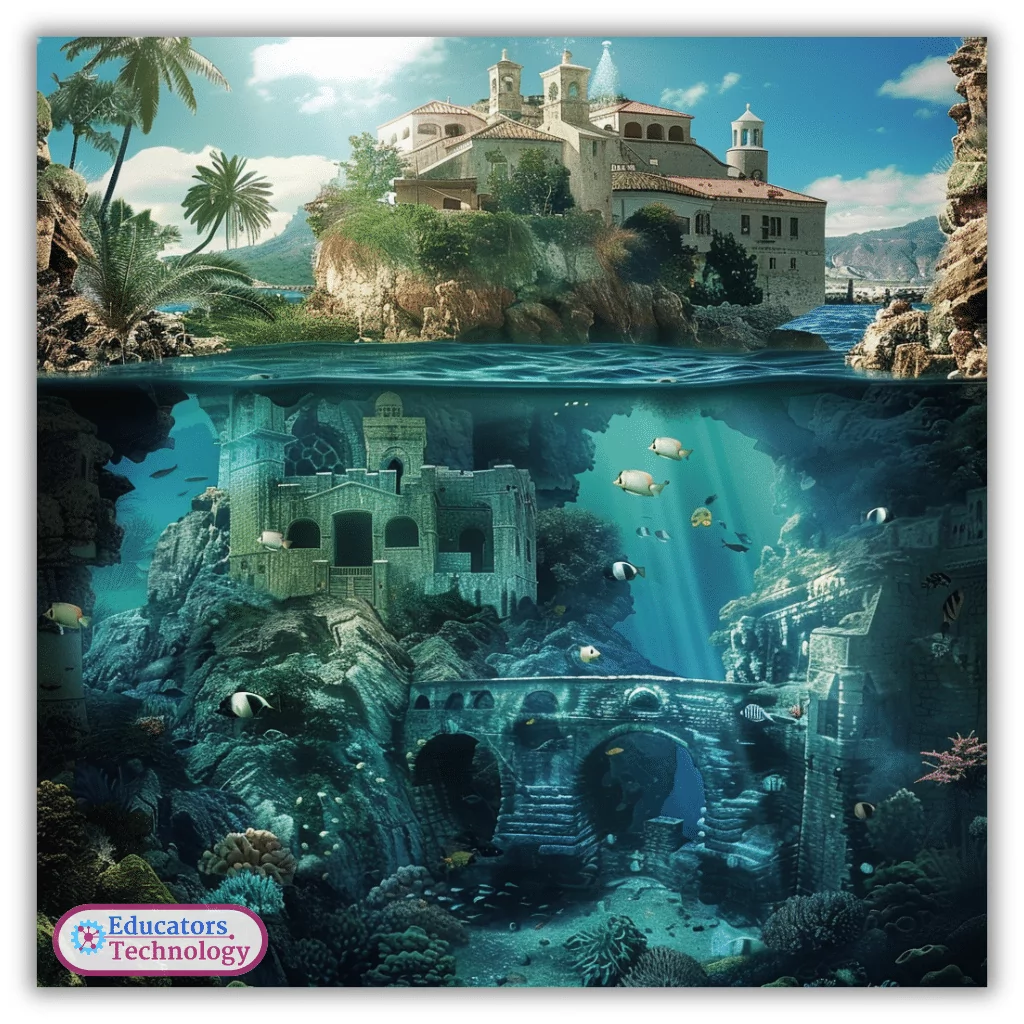
For High School
High school students are ready to tackle more complex and abstract themes in their writing. In this section, we provide picture writing prompts that encourage them to explore social issues, abstract concepts, and literary inspirations. These prompts are intended to provoke thoughtful responses and help students develop their analytical and expressive abilities.
1. Social Issues
Prompt: “Write an essay on the impact of climate change on your community. What changes have you observed, and what solutions do you propose?”

Prompt: “Describe a protest you attended or would like to attend. What is the cause, and what do you hope to achieve?”

2. Abstract and Symbolic
Prompt: “Look at an abstract painting and describe what it represents to you. How does it make you feel, and what do you think the artist was trying to convey?”
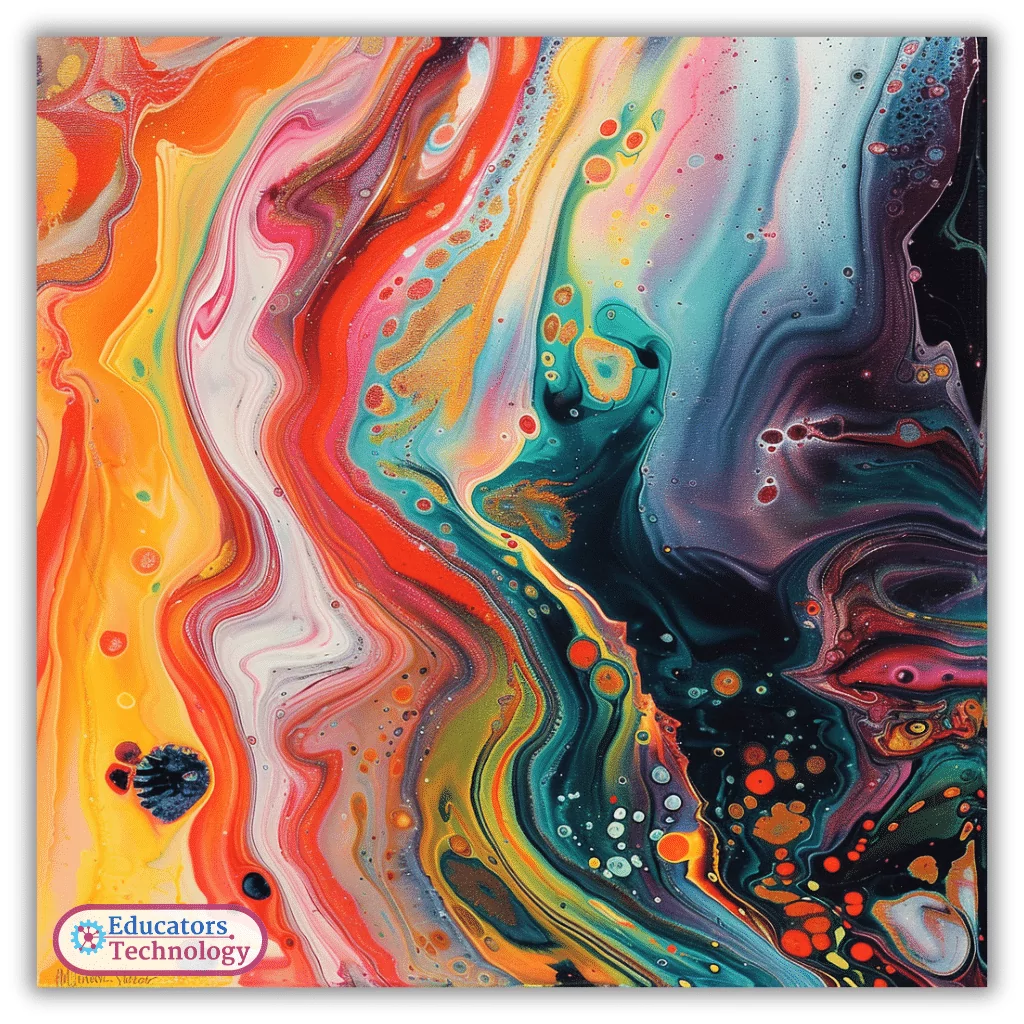
Prompt: “Write a story inspired by a symbolic image, such as a broken chain or a lone tree in a vast field.”
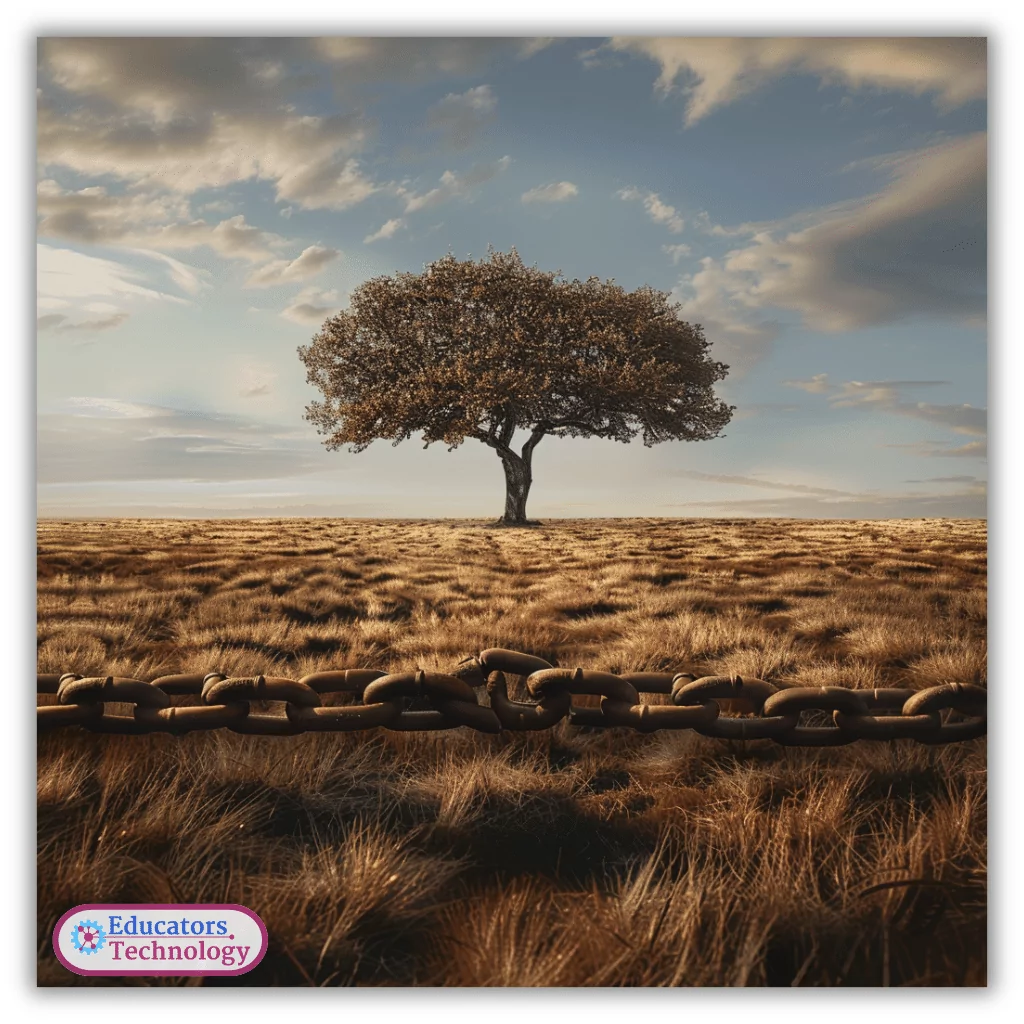
3. Literary Inspiration
Prompt: “Imagine you are a character in a classic novel like ‘Pride and Prejudice’ or ‘To Kill a Mockingbird.’ Write a new scene that fits into the story.”
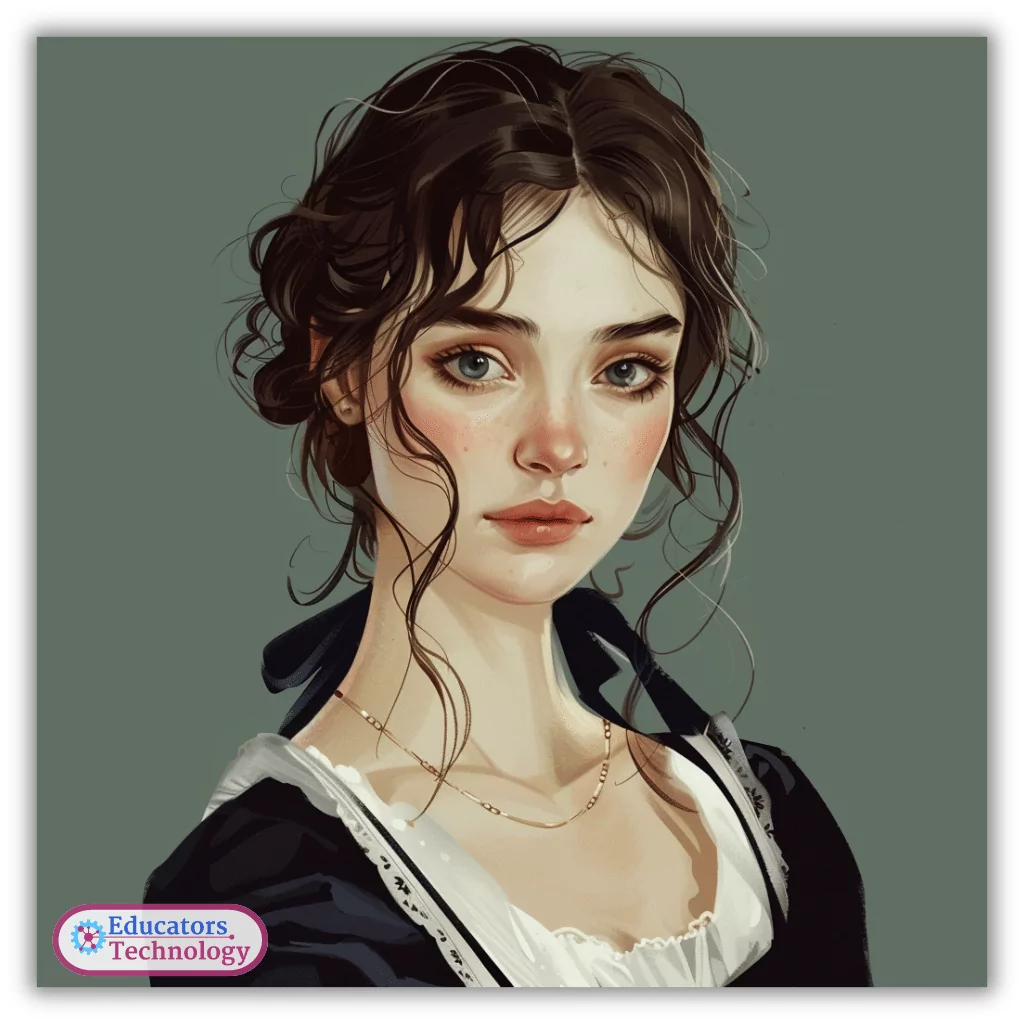
Prompt: “Describe a painting from the Renaissance era and create a story based on the characters and setting.”
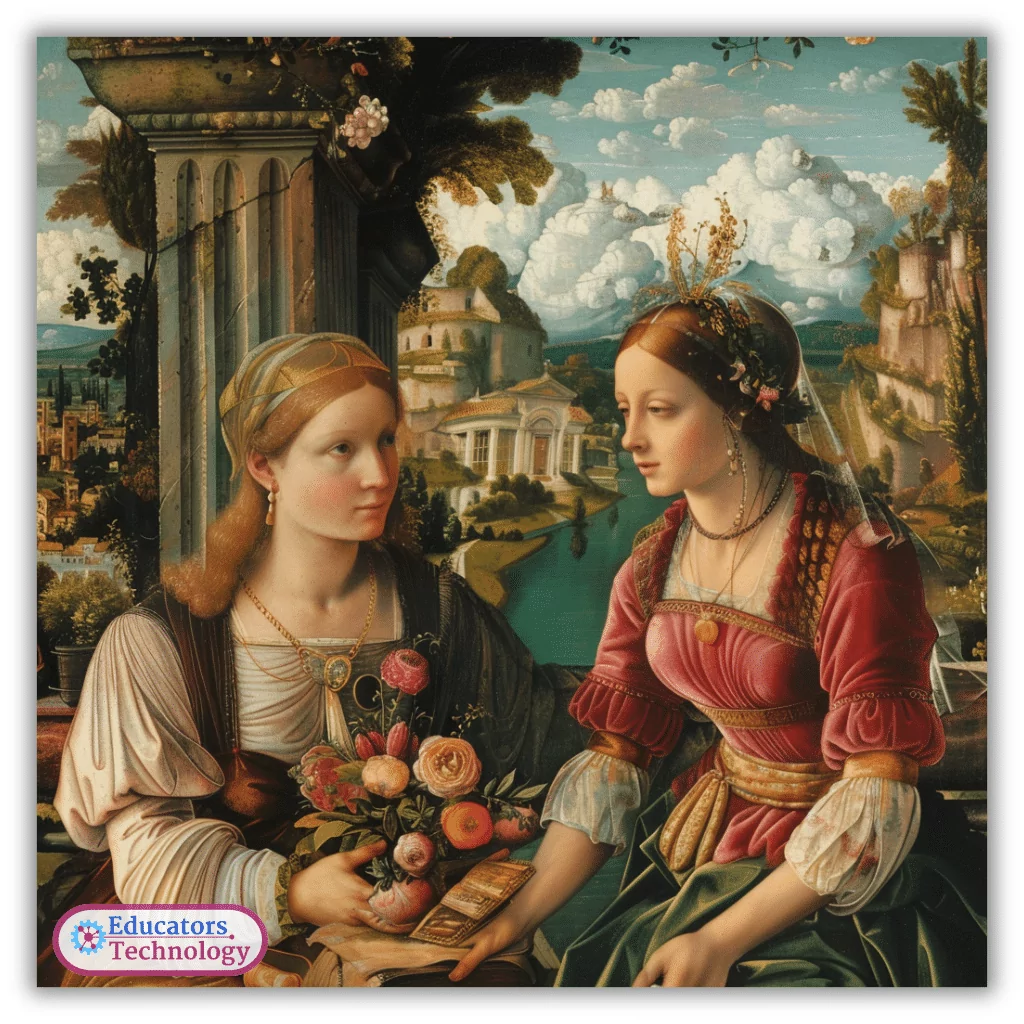
4. Career and Future
Prompt: “Write a day in the life of your dream job. What tasks do you perform, and what challenges do you face?”
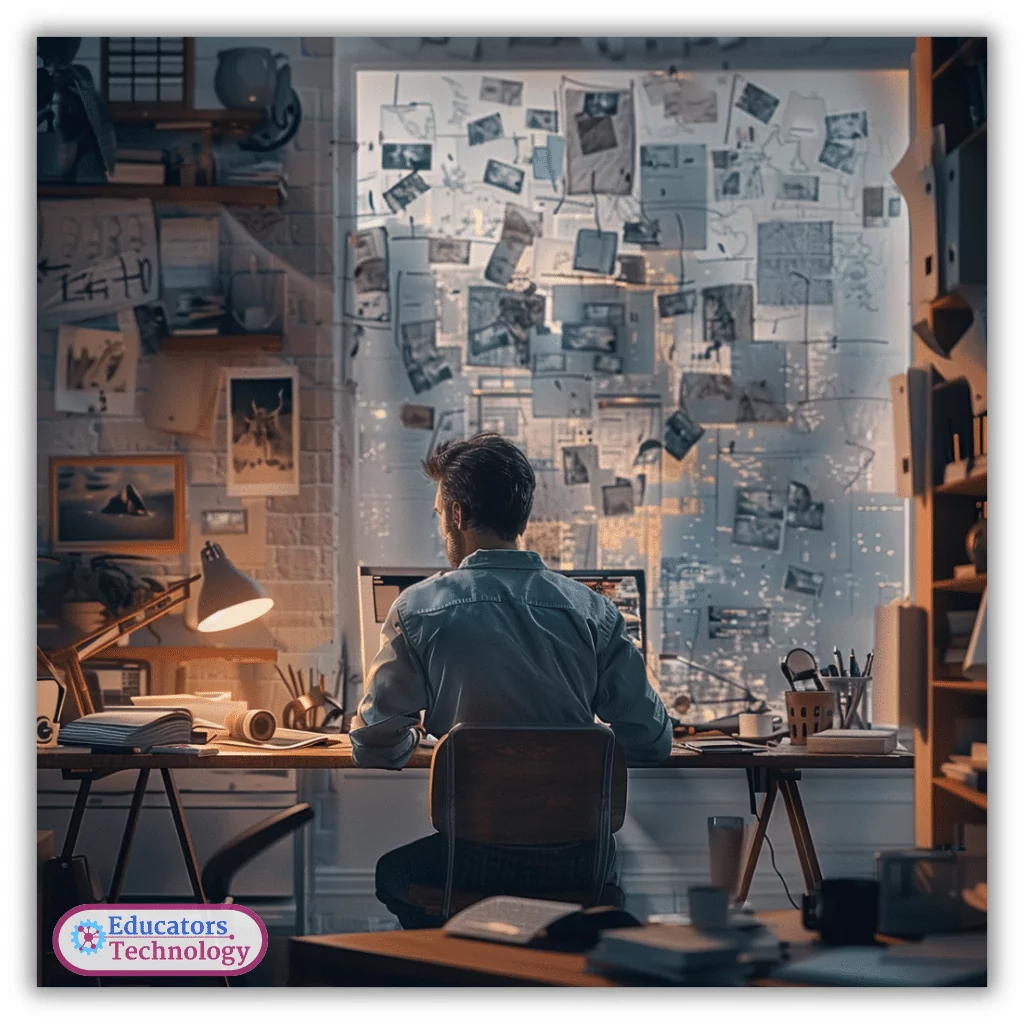
Prompt: “Describe your first day at college. How do you feel, what do you do, and who do you meet?”

5. Cultural Diversity
Prompt: “Describe a cultural festival you attended. What traditions did you observe, and what did you learn?”
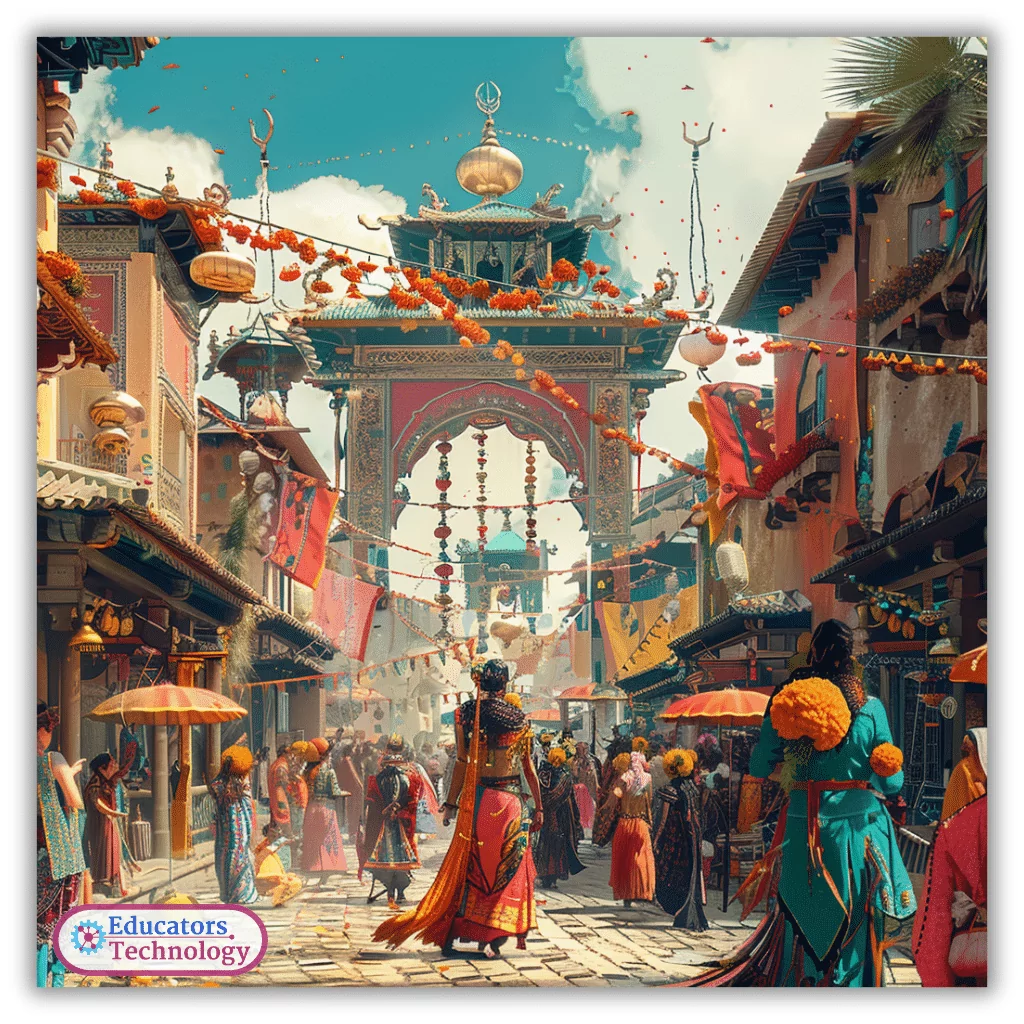
Prompt: “Write a story about a family from a different culture moving to your town. How do they adapt, and what do they teach you?”
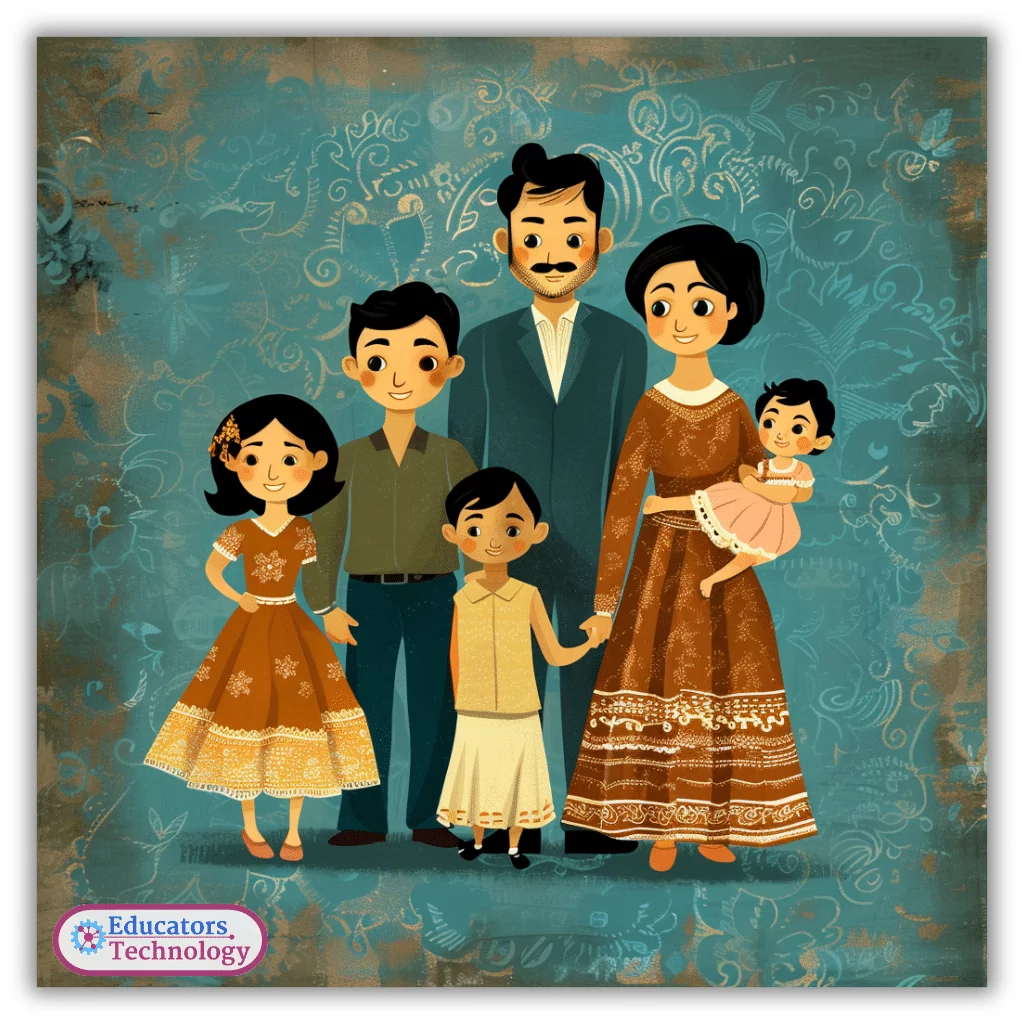
Related: 9 Great Books on Essay Writing
Final thoughts
In this post, I talked about picture writing prompts and covered their importance, practical tips for using them, their benefits, and examples to get you started. Picture prompts are excellent tools for overcoming writer’s block and enhancing students’ creativity and writing skills. I hope these insights and strategies will inspire you to incorporate picture prompts into your writing activities. For further reading and a deeper understanding, I encourage you to explore the references provided.
- Carp, C. L., Peterson, S. P., Arkel, A. J., Petursdottir, A. I., & Ingvarsson, E. T. (2012). A further evaluation of picture prompts during auditory-visual conditional discrimination training. Journal of Applied Behavior Analysis , 45 (4), 737–751. https://doi.org/10.1901/jaba.2012.45-737
- Dube, W. V., & McIlvane, W. J. (1999). Reduction of stimulus overselectivity with nonverbal differential observing responses. Journal of Applied Behavior Analysis, 32, 25-33. doi:10.1901/jaba.1999.32-25
- Fisher, W. W., Kodak, T., & Moore, J. W. (2007). Embedding an identity-matching task within a prompting hierarchy to facilitate acquisition of conditional discriminations in children with autism. Journal of Applied Behavior Analysis, 40, 489–499. doi:10.1901/jaba.2007.40-489
- Gonchar, M., & Schulten, K. (2017). A Year of Picture Prompts: Over 160 Images to Inspire Writing. The new York Times. https://www.nytimes.com/2017/06/01/learning/lesson-plans/a-year-of-picture-prompts-over-160-images-to-inspire-writing.html
- Mukramah, C., Mustafa, F., & Sari, D. F. (2023). The Effect of Picture and Text Prompts on Idea Formulation and Organization of Descriptive Text. Indonesian Journal of English Language Teaching and Applied Linguistics, 7(2), 325-341
Further Readings on Picture Prompt Writing
If you’re looking to delve deeper into the benefits and applications of picture prompts in writing, here are some valuable resources:
- “5 Reasons to Use Pictures as Writing Prompts” by The Write Practice
- “How to Use Images to Inspire Creative Writing” by Edutopia
- “ 144 Picture Prompts to Inspire Student Writing” by The Learning Network

Join our mailing list
Never miss an EdTech beat! Subscribe now for exclusive insights and resources .

Meet Med Kharbach, PhD
Dr. Med Kharbach is an influential voice in the global educational technology landscape, with an extensive background in educational studies and a decade-long experience as a K-12 teacher. Holding a Ph.D. from Mount Saint Vincent University in Halifax, Canada, he brings a unique perspective to the educational world by integrating his profound academic knowledge with his hands-on teaching experience. Dr. Kharbach's academic pursuits encompass curriculum studies, discourse analysis, language learning/teaching, language and identity, emerging literacies, educational technology, and research methodologies. His work has been presented at numerous national and international conferences and published in various esteemed academic journals.

Join our email list for exclusive EdTech content.
Meta’s latest experiment borrows from BeReal’s and Snapchat’s core ideas
Meta is once again taking on its competitors by developing a feature that borrows concepts from others — in this case, BeReal and Snapchat. The company is developing a feature for Instagram called “Peek” that would allow users to post authentic pictures that can only be viewed once. While Snapchat popularized the idea of ephemeral content on social media, BeReal led the trend of posting authentic, unedited content. Meta, which is known to copy startups and other tech companies, appears to be doing so once again with the new feature.
The social media company confirmed to TechCrunch on Friday that the feature, which was first spotted by reverse engineer Alessandro Paluzzi , is an internal prototype and isn’t being tested externally.
Peek appears to be a more ephemeral version of Stories, which can be viewed for 24 hours. A photo shared via a Peek would have to be taken with your camera in the moment, as you wouldn’t be able to upload an image from your camera gallery, according to a screenshot shared by Paluzzi. Plus, you wouldn’t be able to edit the photo or add a filter, which is a concept that became popular via the rise of BeReal.
#Instagram continues to work on "Peek" 👀 ℹ️ One tap to capture and send Real pics – no edits, no filters View once and it's gone Here's the introductory screen 👇 pic.twitter.com/G0nsvHpwwO — Alessandro Paluzzi (@alex193a) May 13, 2024
Peek appears to be somewhat similar to Instagram’s Candid Stories feature , which began testing in 2022 to compete with BeReal. While the feature never rolled out to all users, it was essentially a BeReal clone. The feature would send notifications to people encouraging them to capture what they were doing at the moment and share it without editing the image or adding a filter to it.
While Candid Stories nudged users to share authentic content at a specific time every day, Peek would let you do so on your own terms.
The flexibility could be more appealing to users who are interested in sharing authentic content but not wanting to do so based on a random timer. Instagram’s spin on authentic photo-sharing could entice users, especially since reports have suggested that BeReal is losing steam (which it claims is false ).
The screenshot posted by Paluzzi notes that Instagram sees Peek as a way to “share little moments with the people you love.” Instagram likely hopes that the feature will encourage users to share additional types of content on the app, as it takes another go at competing with BeReal.
As with any other internal prototype, it’s unknown when or if Instagram plans to roll out Peek publicly. Of course, if Instagram does release the feature, there’s a possibility that it could look different or be renamed.
More TechCrunch
Get the industry’s biggest tech news, techcrunch daily news.
Every weekday and Sunday, you can get the best of TechCrunch’s coverage.
Startups Weekly
Startups are the core of TechCrunch, so get our best coverage delivered weekly.
TechCrunch Fintech
The latest Fintech news and analysis, delivered every Tuesday.
TechCrunch Mobility
TechCrunch Mobility is your destination for transportation news and insight.
AI models have favorite numbers, because they think they’re people
AI models are always surprising us, not just in what they can do, but what they can’t, and why. An interesting new behavior is both superficial and revealing about these…

Rock band’s hidden hacking-themed website gets hacked
On Friday, Pal Kovacs was listening to the long-awaited new album from rock and metal giants Bring Me The Horizon when he noticed a strange sound at the end of…

Anthropic hires former OpenAI safety lead to head up new team
Jan Leike, a leading AI researcher who earlier this month resigned from OpenAI before publicly criticizing the company’s approach to AI safety, has joined OpenAI rival Anthropic to lead a…

The demise of BaaS fintech Synapse could derail the funding prospects for other startups in the space
Welcome to TechCrunch Fintech! This week, we’re looking at the long-term implications of Synapse’s bankruptcy on the fintech sector, Majority’s impressive ARR milestone, and more! To get a roundup of…

YouTube’s free games catalog ‘Playables’ rolls out to all users
YouTube’s free Playables don’t directly challenge the app store model or break Apple’s rules. However, they do compete with the App Store’s free games.

Featured Article
A comprehensive list of 2024 tech layoffs
The tech layoff wave is still going strong in 2024. Following significant workforce reductions in 2022 and 2023, this year has already seen 60,000 job cuts across 254 companies, according to independent layoffs tracker Layoffs.fyi. Companies like Tesla, Amazon, Google, TikTok, Snap and Microsoft have conducted sizable layoffs in the first months of 2024. Smaller-sized…

OpenAI’s new safety committee is made up of all insiders
OpenAI has formed a new committee to oversee “critical” safety and security decisions related to the company’s projects and operations. But, in a move that’s sure to raise the ire…

Early bird gets the savings — 4 days left for Disrupt sale
Time is running out for tech enthusiasts and entrepreneurs to secure their early-bird tickets for TechCrunch Disrupt 2024! With only four days left until the May 31 deadline, now is…

Skej’s AI meeting scheduling assistant works like adding an EA to your email
AI may not be up to the task of replacing Google Search just yet, but it can be useful in more specific contexts — including handling the drudgery that comes…

Faircado raises $3M to nudge people to buy pre-owned goods
Faircado has built a browser extension that suggests pre-owned alternatives for ecommerce listings.

Tumblr launches its semi-private Communities in open beta
Tumblr, the blogging site acquired twice, is launching its “Communities” feature in open beta, the Tumblr Labs division has announced. The feature offers a dedicated space for users to connect…

Félix Pago raises $15.5 million to help Latino workers send money home via WhatsApp
Remittances from workers in the U.S. to their families and friends in Latin America amounted to $155 billion in 2023. With such a huge opportunity, banks, money transfer companies, retailers,…

Google adds AI-powered features to Chromebook
Google said today it’s adding new AI-powered features such as a writing assistant and a wallpaper creator and providing easy access to Gemini chatbot to its Chromebook Plus line of…

The Chainsmokers light up Disrupt 2024
The dynamic duo behind the Grammy Award–winning music group the Chainsmokers, Alex Pall and Drew Taggart, are set to bring their entrepreneurial expertise to TechCrunch Disrupt 2024. Known for their…

LumApps, the French ‘intranet super app,’ sells majority stake to Bridgepoint in a $650M deal
The deal will give LumApps a big nest egg to make acquisitions and scale its business.

More neobanks are becoming mobile networks — and Nubank wants a piece of the action
Nubank is taking its first tentative steps into the mobile network realm, as the NYSE-traded Brazilian neobank rolls out an eSIM (embedded SIM) service for travelers. The service will give customers access to 10GB of free roaming internet in more than 40 countries without having to switch out their own existing physical SIM card or…

MARS doubles down on India’s Infra.Market with new $50M investment
Infra.Market, an Indian startup that helps construction and real estate firms procure materials, has raised $50M from MARS Unicorn Fund.

Cloover wants to speed solar adoption by helping installers finance new sales
Small operations can lose customers by not offering financing, something the Berlin-based startup wants to change.

Adani looks to battle Reliance, Walmart in India’s e-commerce, payments race, report says
India’s Adani Group is in discussions to venture into digital payments and e-commerce, according to a report.

Ledger starts shipping its high-end hardware crypto wallet
Ledger, a French startup mostly known for its secure crypto hardware wallets, has started shipping new wallets nearly 18 months after announcing the latest Ledger Stax devices. The updated wallet…

EU’s ChatGPT taskforce offers first look at detangling the AI chatbot’s privacy compliance
A data protection taskforce that’s spent over a year considering how the European Union’s data protection rulebook applies to OpenAI’s viral chatbot, ChatGPT, reported preliminary conclusions Friday. The top-line takeaway…

LatAm startups: Apply to Startup Battlefield 200
Here’s a shoutout to LatAm early-stage startup founders! We want YOU to apply for the Startup Battlefield 200 at TechCrunch Disrupt 2024. But you’d better hurry — time is running…

5 days left to get your early-bird Disrupt passes
The countdown to early-bird savings for TechCrunch Disrupt, taking place October 28–30 in San Francisco, continues. You have just five days left to save up to $800 on the price…

Spanish startups reached €100 billion in aggregate value last year
Venture investment into Spanish startups also held up quite well, with €2.2 billion raised across some 850 funding rounds.

Onyx Motorbikes was in trouble — and then its 37-year-old owner died
James Khatiblou, the owner and CEO of Onyx Motorbikes, was watching his e-bike startup fall apart. Onyx was being evicted from its warehouse in El Segundo, near Los Angeles. The company’s unpaid bills were stacking up. Its chief operating officer had abruptly resigned. A shipment of around 100 CTY2 dirt bikes from Chinese supplier Suzhou…

Iyo thinks its GenAI earbuds can succeed where Humane and Rabbit stumbled
Iyo represents a third form factor in the push to deliver standalone generative AI devices: Bluetooth earbuds.

Women in AI: Arati Prabhakar thinks it’s crucial to get AI ‘right’
Arati Prabhakar, profiled as part of TechCrunch’s Women in AI series, is director of the White House Office of Science and Technology Policy.

Doly lets you generate 3D product videos from your iPhone
AniML, the French startup behind a new 3D capture app called Doly, wants to create the PhotoRoom of product videos, sort of. If you’re selling sneakers on an online marketplace…

Elon Musk’s xAI raises $6B from Valor, a16z, and Sequoia
Elon Musk’s AI startup, xAI, has raised $6 billion in a new funding round, it said today, as Musk shores up capital to aggressively compete with rivals including OpenAI, Microsoft,…

Indian EV startup Zypp Electric secures backing to fund expansion to Southeast Asia
Indian startup Zypp Electric plans to use fresh investment from Japanese oil and energy conglomerate ENEOS to take its EV rental service into Southeast Asia early next year, TechCrunch has…

Suggestions or feedback?
MIT News | Massachusetts Institute of Technology
- Machine learning
- Social justice
- Black holes
- Classes and programs
Departments
- Aeronautics and Astronautics
- Brain and Cognitive Sciences
- Architecture
- Political Science
- Mechanical Engineering
Centers, Labs, & Programs
- Abdul Latif Jameel Poverty Action Lab (J-PAL)
- Picower Institute for Learning and Memory
- Lincoln Laboratory
- School of Architecture + Planning
- School of Engineering
- School of Humanities, Arts, and Social Sciences
- Sloan School of Management
- School of Science
- MIT Schwarzman College of Computing
Controlled diffusion model can change material properties in images
Press contact :.
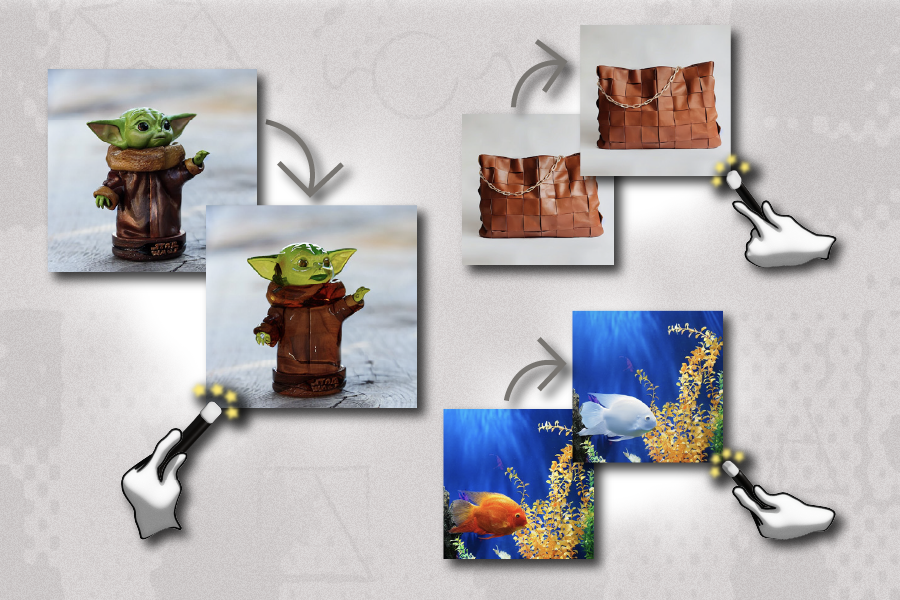
Previous image Next image
Researchers from the MIT Computer Science and Artificial Intelligence Laboratory (CSAIL) and Google Research may have just performed digital sorcery — in the form of a diffusion model that can change the material properties of objects in images. Dubbed Alchemist , the system allows users to alter four attributes of both real and AI-generated pictures: roughness, metallicity, albedo (an object’s initial base color), and transparency. As an image-to-image diffusion model, one can input any photo and then adjust each property within a continuous scale of -1 to 1 to create a new visual. These photo editing capabilities could potentially extend to improving the models in video games, expanding the capabilities of AI in visual effects, and enriching robotic training data.
The magic behind Alchemist starts with a denoising diffusion model: In practice, researchers used Stable Diffusion 1.5, which is a text-to-image model lauded for its photorealistic results and editing capabilities. Previous work built on the popular model to enable users to make higher-level changes, like swapping objects or altering the depth of images. In contrast, CSAIL and Google Research’s method applies this model to focus on low-level attributes, revising the finer details of an object’s material properties with a unique, slider-based interface that outperforms its counterparts. While prior diffusion systems could pull a proverbial rabbit out of a hat for an image, Alchemist could transform that same animal to look translucent. The system could also make a rubber duck appear metallic, remove the golden hue from a goldfish, and shine an old shoe. Programs like Photoshop have similar capabilities, but this model can change material properties in a more straightforward way. For instance, modifying the metallic look of a photo requires several steps in the widely used application.
“When you look at an image you’ve created, often the result is not exactly what you have in mind,” says Prafull Sharma, MIT PhD student in electrical engineering and computer science, CSAIL affiliate, and lead author on a new paper describing the work. “You want to control the picture while editing it, but the existing controls in image editors are not able to change the materials. With Alchemist, we capitalize on the photorealism of outputs from text-to-image models and tease out a slider control that allows us to modify a specific property after the initial picture is provided.”
Precise control
“Text-to-image generative models have empowered everyday users to generate images as effortlessly as writing a sentence. However, controlling these models can be challenging,” says Carnegie Mellon University Assistant Professor Jun-Yan Zhu, who was not involved in the paper. “While generating a vase is simple, synthesizing a vase with specific material properties such as transparency and roughness requires users to spend hours trying different text prompts and random seeds. This can be frustrating, especially for professional users who require precision in their work. Alchemist presents a practical solution to this challenge by enabling precise control over the materials of an input image while harnessing the data-driven priors of large-scale diffusion models, inspiring future works to seamlessly incorporate generative models into the existing interfaces of commonly used content creation software.”
Alchemist’s design capabilities could help tweak the appearance of different models in video games. Applying such a diffusion model in this domain could help creators speed up their design process, refining textures to fit the gameplay of a level. Moreover, Sharma and his team’s project could assist with altering graphic design elements, videos, and movie effects to enhance photorealism and achieve the desired material appearance with precision.
The method could also refine robotic training data for tasks like manipulation. By introducing the machines to more textures, they can better understand the diverse items they’ll grasp in the real world. Alchemist can even potentially help with image classification, analyzing where a neural network fails to recognize the material changes of an image.
Sharma and his team’s work exceeded similar models at faithfully editing only the requested object of interest. For example, when a user prompted different models to tweak a dolphin to max transparency, only Alchemist achieved this feat while leaving the ocean backdrop unedited. When the researchers trained comparable diffusion model InstructPix2Pix on the same data as their method for comparison, they found that Alchemist achieved superior accuracy scores. Likewise, a user study revealed that the MIT model was preferred and seen as more photorealistic than its counterpart.
Keeping it real with synthetic data
According to the researchers, collecting real data was impractical. Instead, they trained their model on a synthetic dataset, randomly editing the material attributes of 1,200 materials applied to 100 publicly available, unique 3D objects in Blender, a popular computer graphics design tool. “The control of generative AI image synthesis has so far been constrained by what text can describe,” says Frédo Durand, the Amar Bose Professor of Computing in the MIT Department of Electrical Engineering and Computer Science (EECS) and CSAIL member, who is a senior author on the paper. “This work opens new and finer-grain control for visual attributes inherited from decades of computer-graphics research.” "Alchemist is the kind of technique that's needed to make machine learning and diffusion models practical and useful to the CGI community and graphic designers,” adds Google Research senior software engineer and co-author Mark Matthews. “Without it, you're stuck with this kind of uncontrollable stochasticity. It's maybe fun for a while, but at some point, you need to get real work done and have it obey a creative vision."
Sharma’s latest project comes a year after he led research on Materialistic , a machine-learning method that can identify similar materials in an image. This previous work demonstrated how AI models can refine their material understanding skills, and like Alchemist, was fine-tuned on a synthetic dataset of 3D models from Blender.
Still, Alchemist has a few limitations at the moment. The model struggles to correctly infer illumination, so it occasionally fails to follow a user’s input. Sharma notes that this method sometimes generates physically implausible transparencies, too. Picture a hand partially inside a cereal box, for example — at Alchemist’s maximum setting for this attribute, you’d see a clear container without the fingers reaching in. The researchers would like to expand on how such a model could improve 3D assets for graphics at scene level. Also, Alchemist could help infer material properties from images. According to Sharma, this type of work could unlock links between objects' visual and mechanical traits in the future.
MIT EECS professor and CSAIL member William T. Freeman is also a senior author, joining Varun Jampani, and Google Research scientists Yuanzhen Li PhD ’09, Xuhui Jia, and Dmitry Lagun. The work was supported, in part, by a National Science Foundation grant and gifts from Google and Amazon. The group’s work will be highlighted at CVPR in June.
Share this news article on:
Related links.
- Frédo Durand
- William Freeman
- Prafull Sharma
- Computer Science and Artificial Intelligence Laboratory (CSAIL)
- Department of Electrical Engineering and Computer Science
Related Topics
- Artificial intelligence
- Computer science and technology
- Computer vision
- Computer graphics
- Electrical Engineering & Computer Science (eecs)
Related Articles

Using AI to protect against AI image manipulation
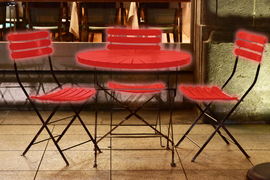
Researchers use AI to identify similar materials in images
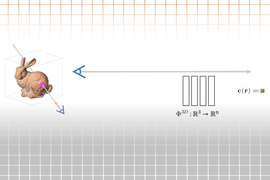
Technique enables real-time rendering of scenes in 3D
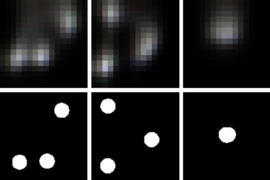
Using computers to view the unseen
Previous item Next item
More MIT News
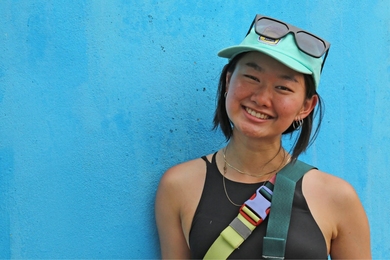
Sophia Chen: It’s our duty to make the world better through empathy, patience, and respect
Read full story →

Using art and science to depict the MIT family from 1861 to the present
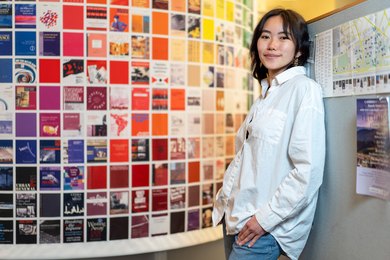
Convening for cultural change

Q&A: The power of tiny gardens and their role in addressing climate change
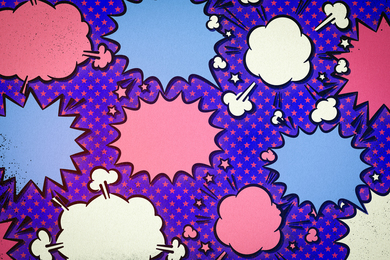
In international relations, it’s the message, not the medium
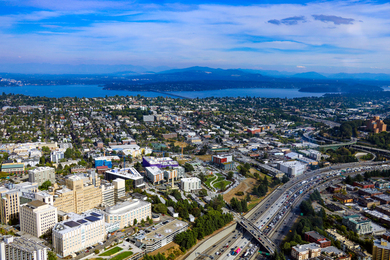
A modest intervention that helps low-income families beat the poverty trap
- More news on MIT News homepage →
Massachusetts Institute of Technology 77 Massachusetts Avenue, Cambridge, MA, USA
- Map (opens in new window)
- Events (opens in new window)
- People (opens in new window)
- Careers (opens in new window)
- Accessibility
- Social Media Hub
- MIT on Facebook
- MIT on YouTube
- MIT on Instagram

IMAGES
VIDEO
COMMENTS
One of the best photo essay ideas is to try shooting sights from various angles. You will also have an opportunity to improve your composition and your framing skills. If you take a look at any pictorial essay example, you will see that the variety of perspectives is endless: through the streets, in the morning, afternoon, and evening, with a ...
1. A day in the life. Your first photo essay idea is simple: Track a life over the course of one day. You might make an essay about someone else's life. Or the life of a location, such as the sidewalk outside your house. The subject matter you choose is up to you.
Take your time. A great photo essay is not done in a few hours. You need to put in the time to research it, conceptualizing it, editing, etc. That's why I previously recommended following your passion because it takes a lot of dedication, and if you're not passionate about it - it's difficult to push through. 4.
With a wide range of topics to explore, a photo essay can be thought-provoking, emotional, funny, unsettling, or all of the above, but mostly, they should be unforgettable. Photo essays tell a story in pictures, and there are many different ways to style your own photo essay. With a wide range of topics to explore, a photo essay can be thought ...
Themes and Topics vs Stories. A photo essay revolves around a topic, theme, idea, ... Photo essays explore an idea, concept, topic, theme, creative approach, big-picture something. Both photo essays and photo stories are immensely powerful visual tools. And yes, the differences between them can certainly be blurred, ...
4. Event Photo Essay. Events are happening in your local area all the time, and they can make great photo essays. With a little research, you can quickly find many events that you could photograph. There may be bake sales, fundraisers, concerts, art shows, farm markets, block parties, and other non profit event ideas.
Exploring the Picture Essay: Tips, Best Practices, and Examples. April 18, 2023. Words by Jeff Cardello. A picture essay lets you harness the power of images to tell stories, evoke emotions, and convey a sense of place, time, and perspective. Picture essays drop viewers right into the action, letting them see things through the camera's lens ...
Choose your photos according to whether or not they relate to and support the photo essay's title. Reject those photos that don't. If your collection seems to suggest a different angle, a ...
From Taylor Dorrell's photo essay White Fences: "White Fences is an ongoing photo series that explores the theme of suburban youth in the United States, specifically in the midwest suburb New Albany, Ohio.". Put your emotions aside. Self-doubt can easily come into play when working with your own photography. The adage that we are our own worst critics is often true.
7. Include a clincher. This image may not be apparent to you in the beginning, but most photographers say they know it when they see it. It's an image that wraps up the essay for the viewer. This image should say "the end," give a call to action, or show the end result of a day in the life or how to sequence.
1. Find a topic you care about. Every good photo essay should start with an idea. Otherwise, you'll be shooting without a purpose - and while such an approach may eventually lead to an interesting series of photos, it's far, far easier to begin with a topic and only then take out your camera. As I emphasized above, a photo essay can be ...
Top 17 Photo Essay Examples. Here are some fantastic ideas to get you inspired to create your own photo essays! 17. Photograph a Protest. Protests tend to be lively events. You will find people standing, moving, and holding banners and signs. This is a great way to practice on a moving crowd.
An immersive photo essay uses rich media and story design to capture and keep the reader's attention. Immersive content is typically free of the most distracting elements of the web, such as pop-ups, skyscrapers, and other intrusions on the reading experience. As a basic rule of thumb, immersive content respects the reader's attention.
1. Create visual structure. An authentic photo essay requires visual markers to help transform a collection of images into a narrative. For example, photo chapter headings in Growing up young introduce each new girl in the story.. Similarly, in SBS's photojournalism story — 28 days in Afghanistan, mentioned above — each dated header delineates a part of the story, providing an easy-to ...
32 Photo Essay Examples (Plus Tips) Photography is a medium that allows you to explore narratives and tell stories about the world around you. One form of storytelling is the photo essay. If you want to create your own photo essay, it can help to know the two main types of essays and some examples of potential subjects. In this article, we ...
Photo Essay of a Special Event - There are always events and occasions going on that would make an interesting subject for a photo essay. Ideas for this photo essay include concerts, block parties, graduations, marches, and protests. Images from some of the latter were integral to the popularity of great photo essays.
7 Add some text. It can be a good idea to add some text or individual captions for a photo essay, to give some background information and context to whatever is shown in the pictures. If you're not a writer, try to keep it as basic as possible - including things such as names, locations and dates.
10 Ideas for Creative Photo Essays - Improve Photography. 10 Ideas for Creative Photo Essays. What is the difference between a photo essay and a photo project? In "15 Creative Photography Project Ideas to Get.
Write a short story, poem or memoir inspired by this illustration. Related Picture Prompt Glenn Harvey. Trapped Inside. Wilderness Wayfaring. Magical Chores. I'm Sorry. Dollar Bills. Dinosaurs ...
It is a powerful way to convey messages without the need for many words. Here is a format to guide you in creating an effective photo essay: 1. Choose a Compelling Topic. Select a subject that you are passionate about or that you find intriguing. Ensure the topic has a clear narrative that can be expressed visually.
Creating a photo essay is a process that requires time, patience, and careful planning. Follow these steps to create a successful photo essay: 1. Choose a topic or theme. The first step in creating a photo essay is to choose the topic or theme you want to focus on. This can be anything from a place, an event, or even a person.
A photo essay is a form of visual storytelling that develops a narrative across a series of photographs. It originated during the late 1920s in German illustrated journals, initially presenting stories in the objective, distanced tone of news reporting. The photo essay gained wide popularity with the growth of photographically illustrated magazines such as VU (launched in Paris in 1928), LIFE ...
Writing, Revising, and Editing. After students have gathered information and images for their photo essays, lead them through "Writing a Draft." Then give them time to put their first drafts together. When the time comes to revise, have students use the questions under "Revising" to improve their work.
Picture prompt writing, as Carp et al. (2010) define it, is a technique that uses visual stimuli to inspire and guide students' writing. Picture prompts are an excellent tool for overcoming writer's block. They provide a visual stimulus that can ignite creativity and help students generate ideas and organize their thoughts, making the writing process…
Meta is once again taking on its competitors by developing a feature that borrows concepts from others — in this case, BeReal and Snapchat. The company is developing a feature for Instagram ...
Dubbed Alchemist, the system allows users to alter four attributes of both real and AI-generated pictures: roughness, metallicity, albedo (an object's initial base color), and transparency. As an image-to-image diffusion model, one can input any photo and then adjust each property within a continuous scale of -1 to 1 to create a new visual.
The left's campaign against the Supreme Court took a comical turn last week when the New York Times reported that an upside-down flag briefly hung outside Justice Samuel Alito's Virginia home ...